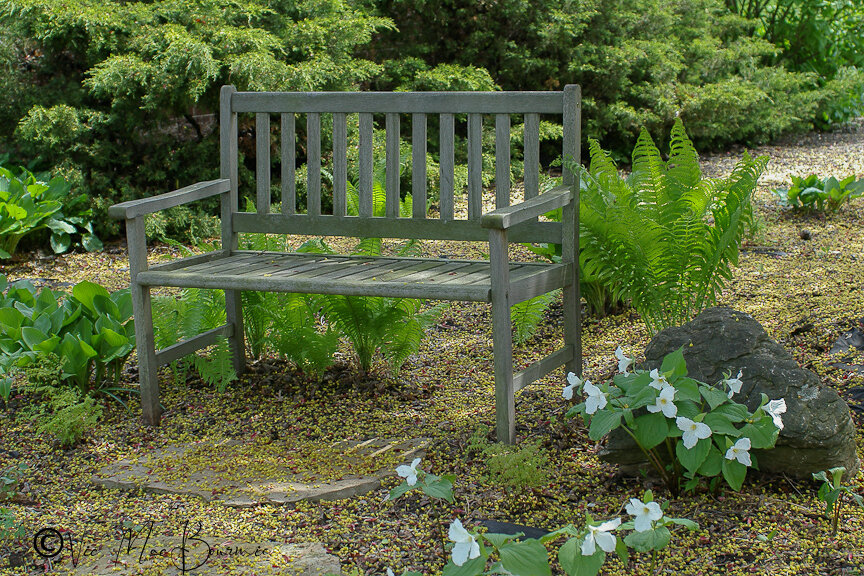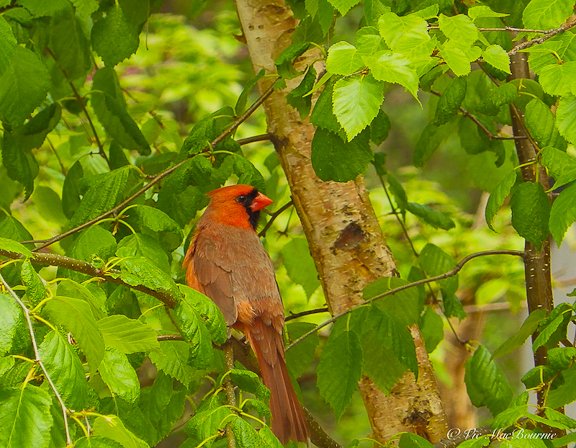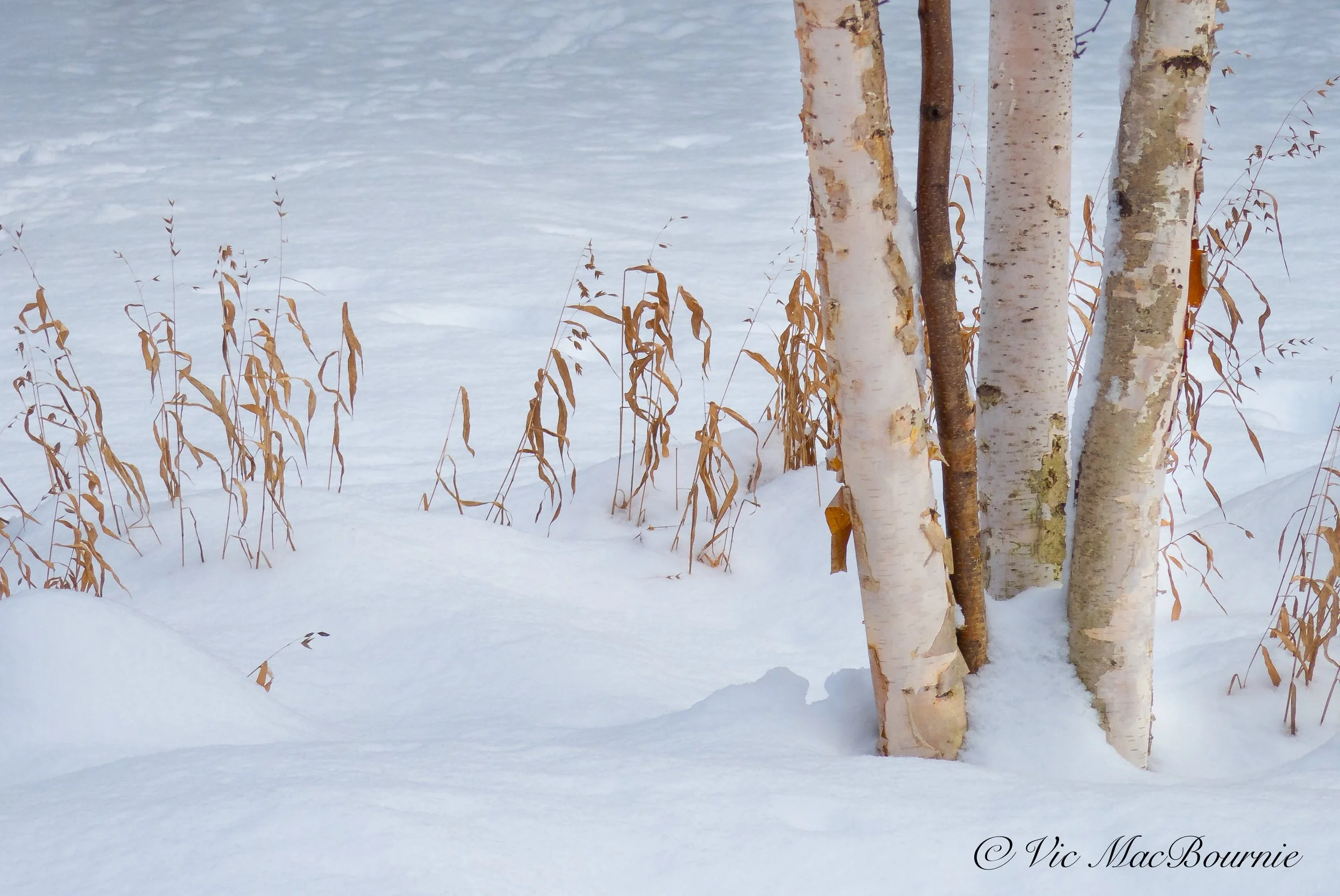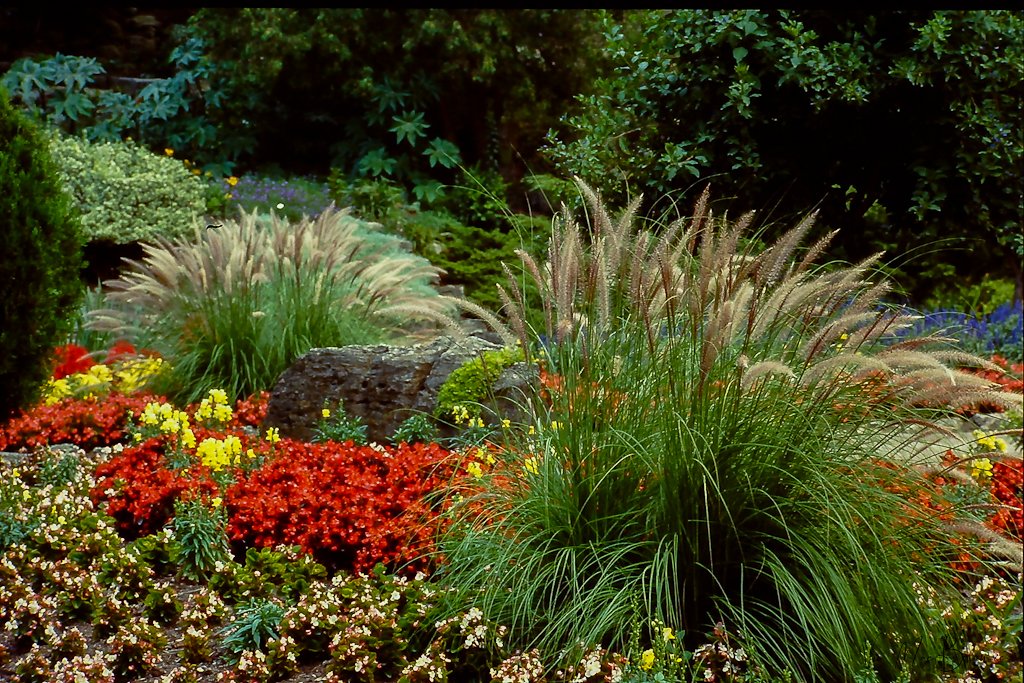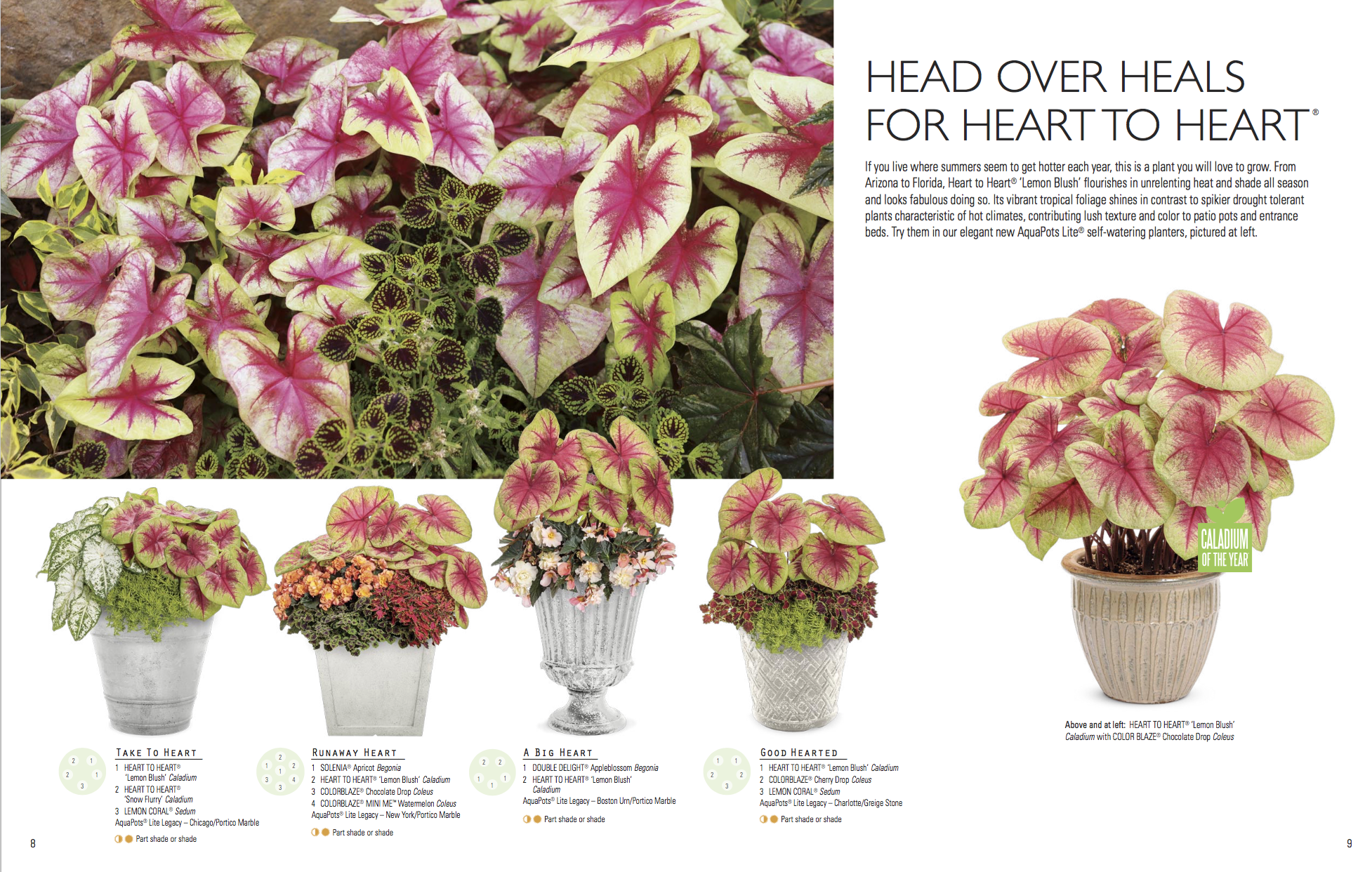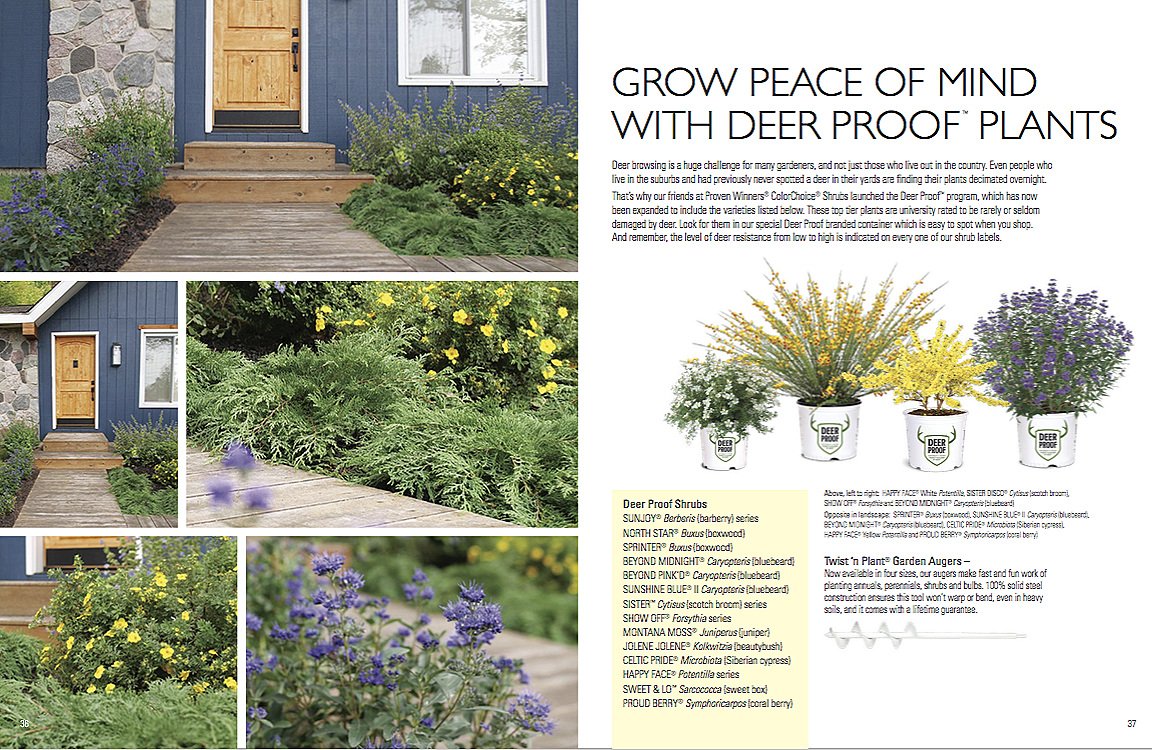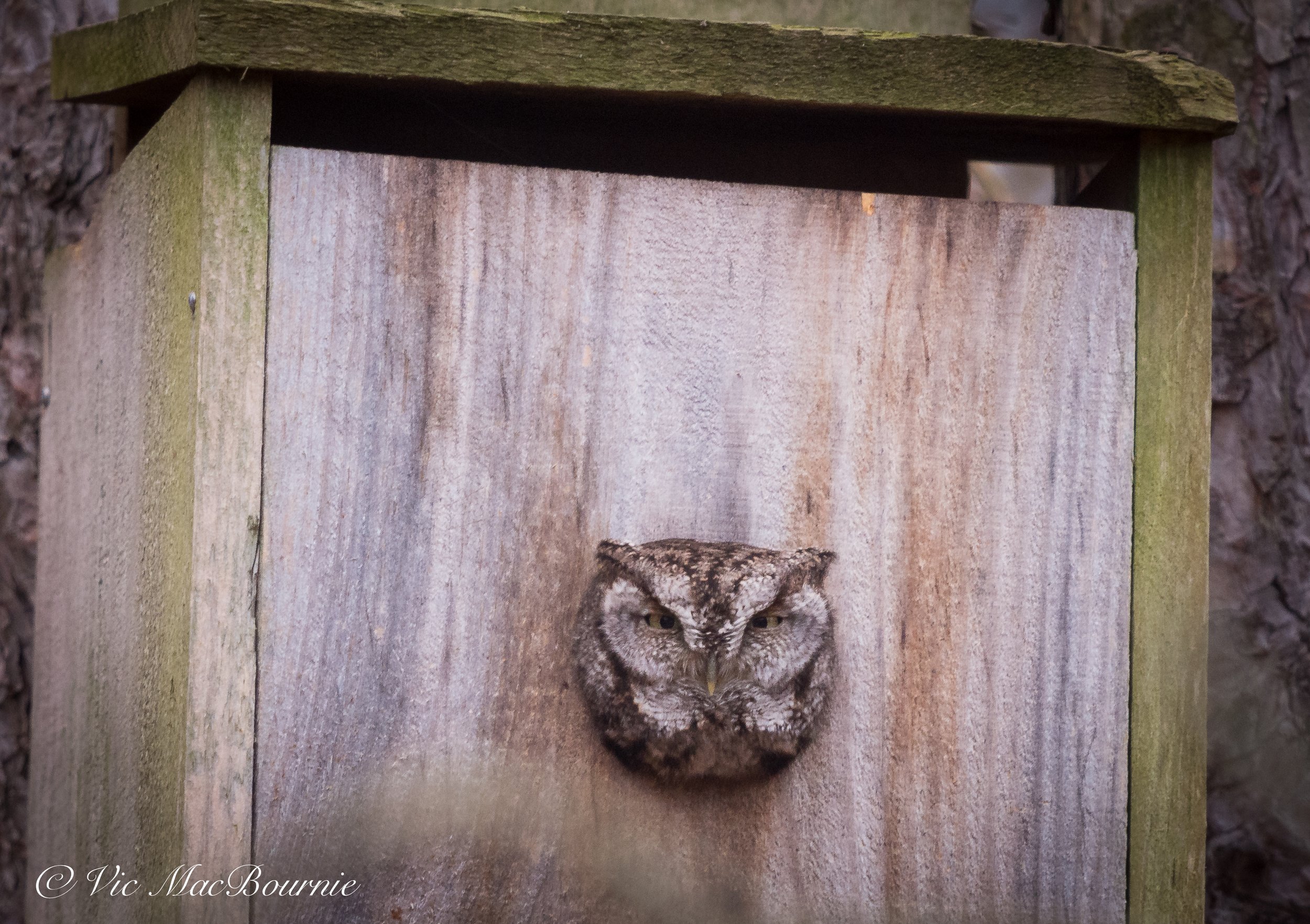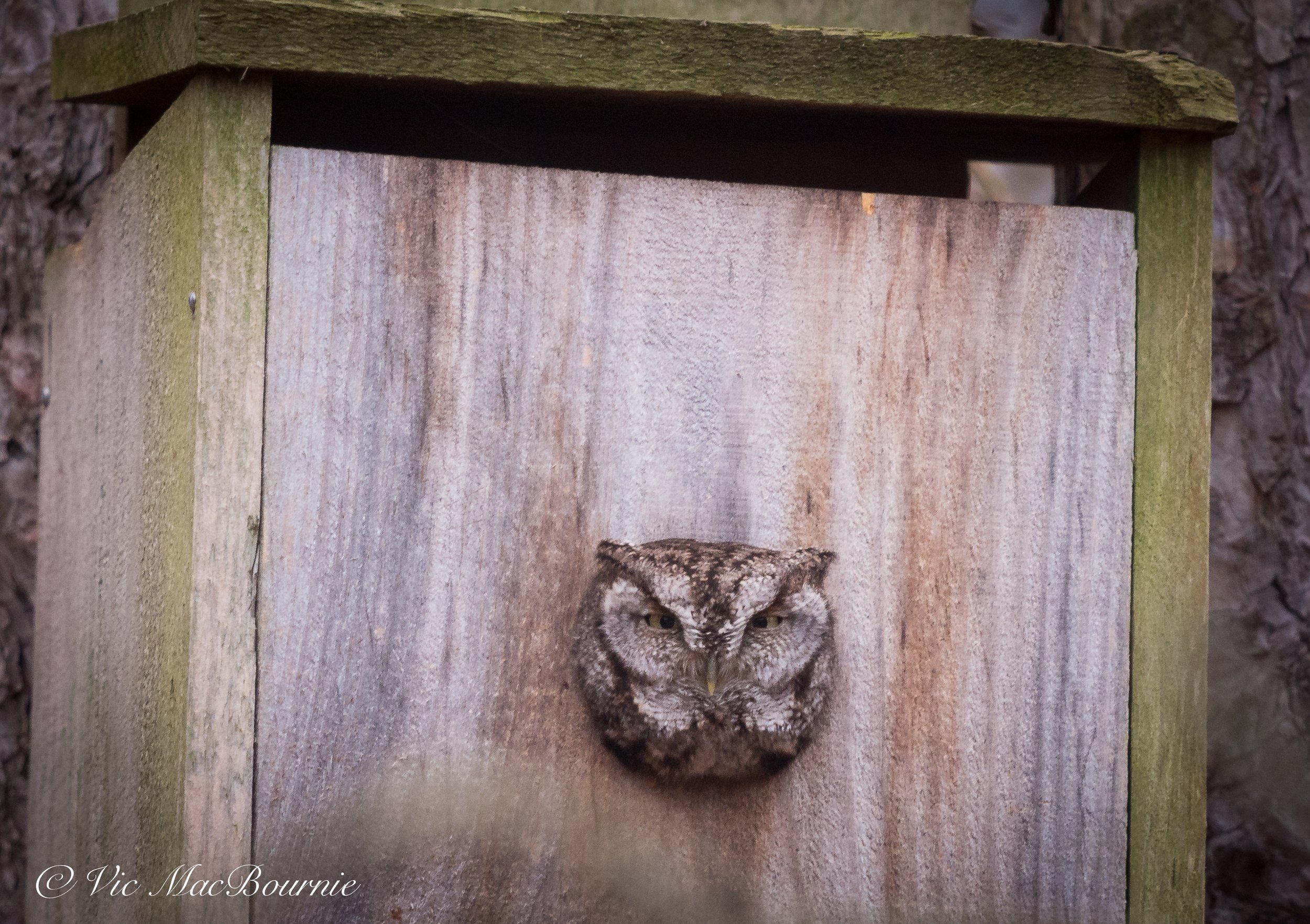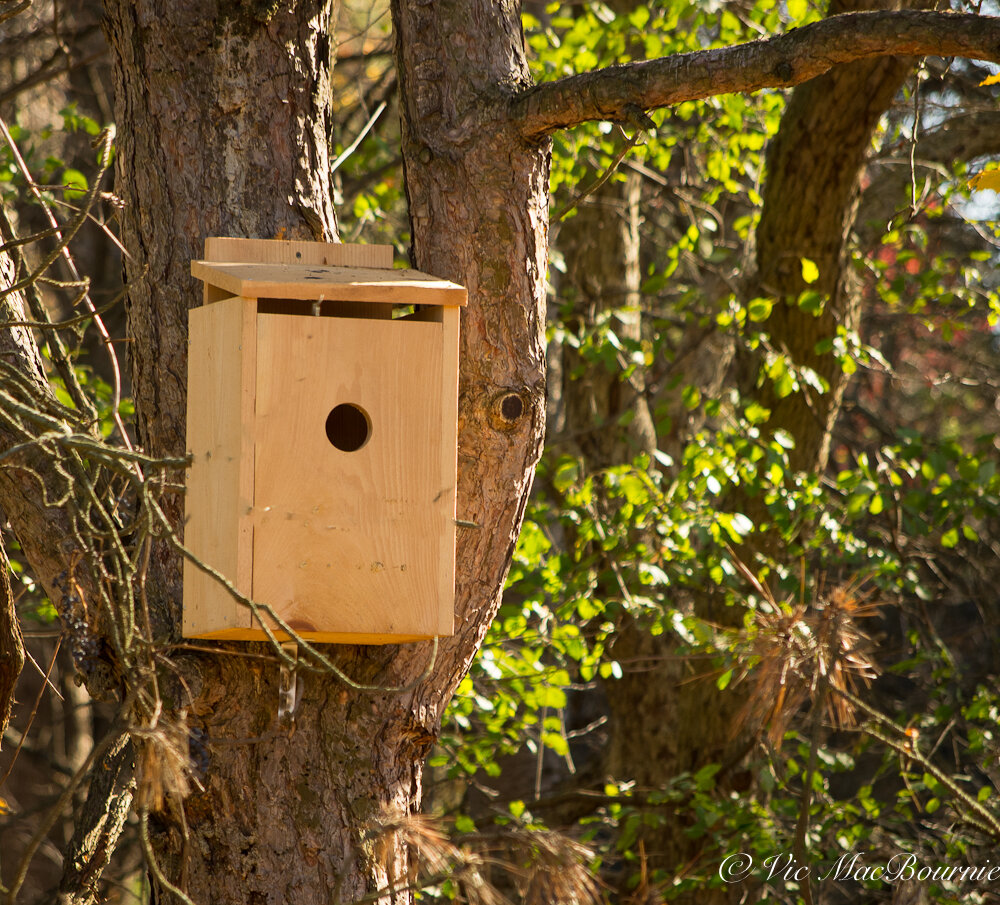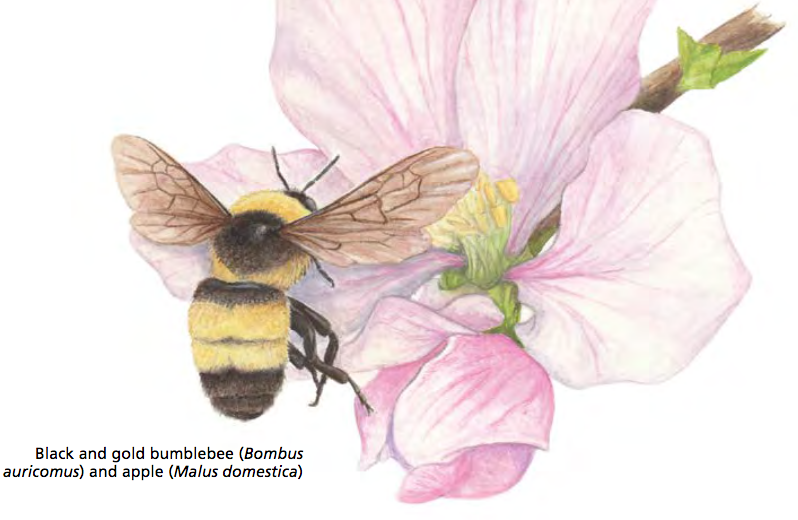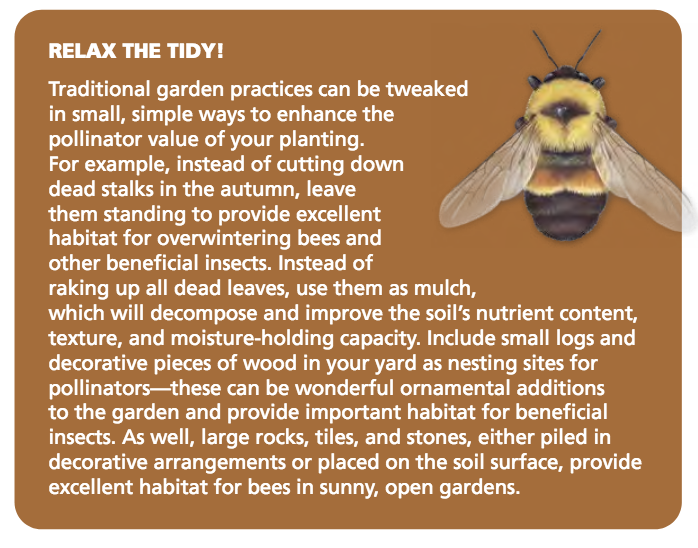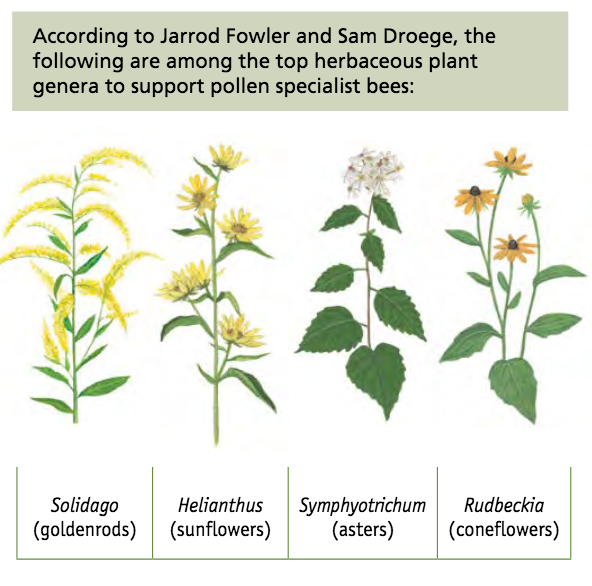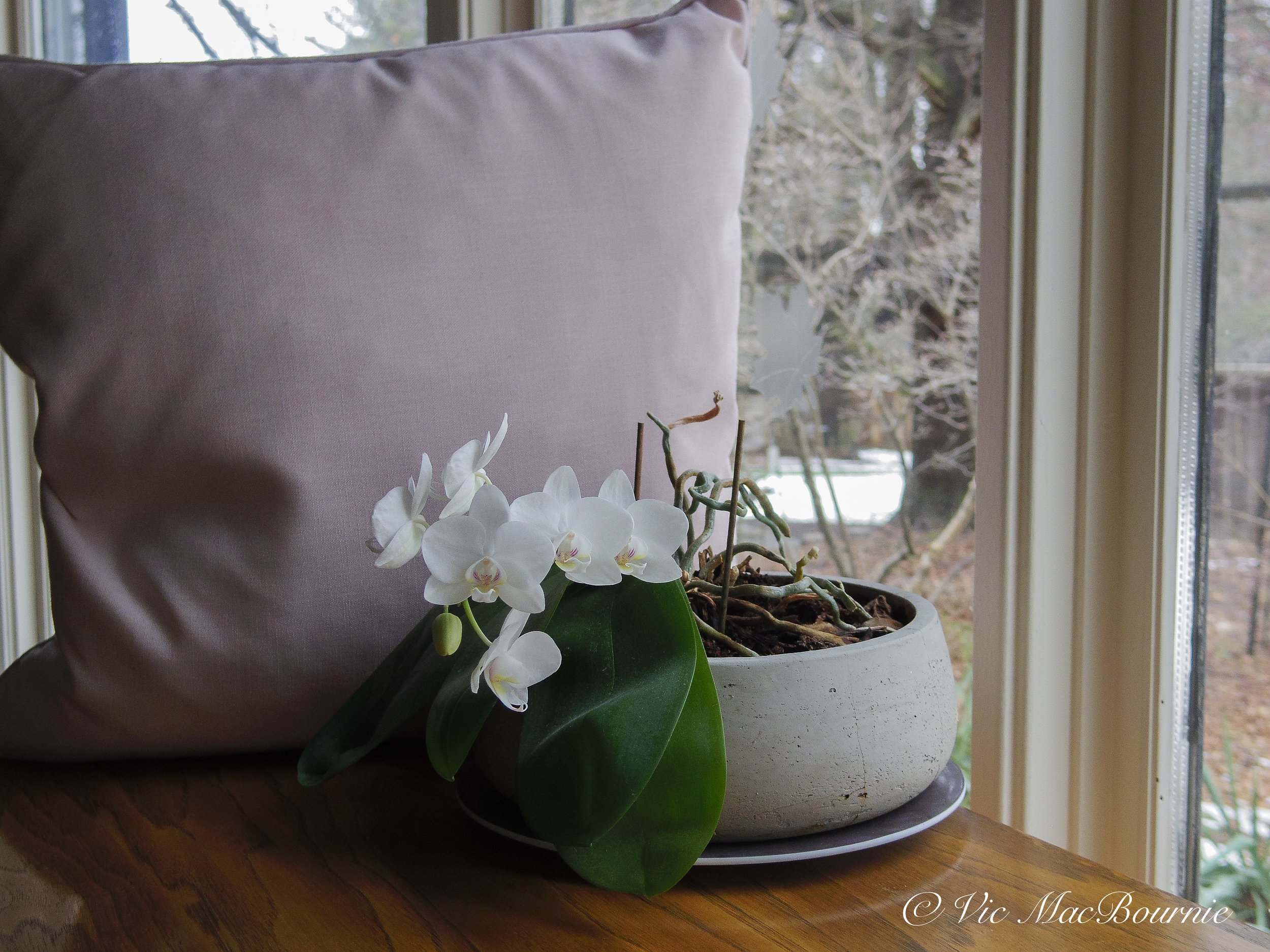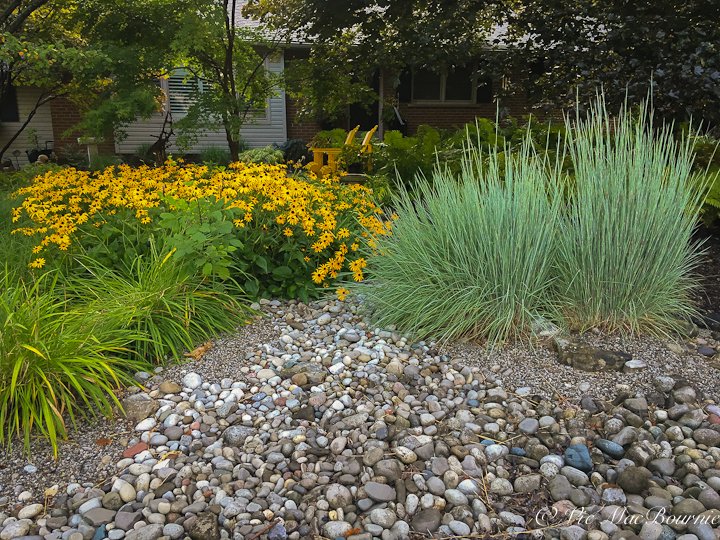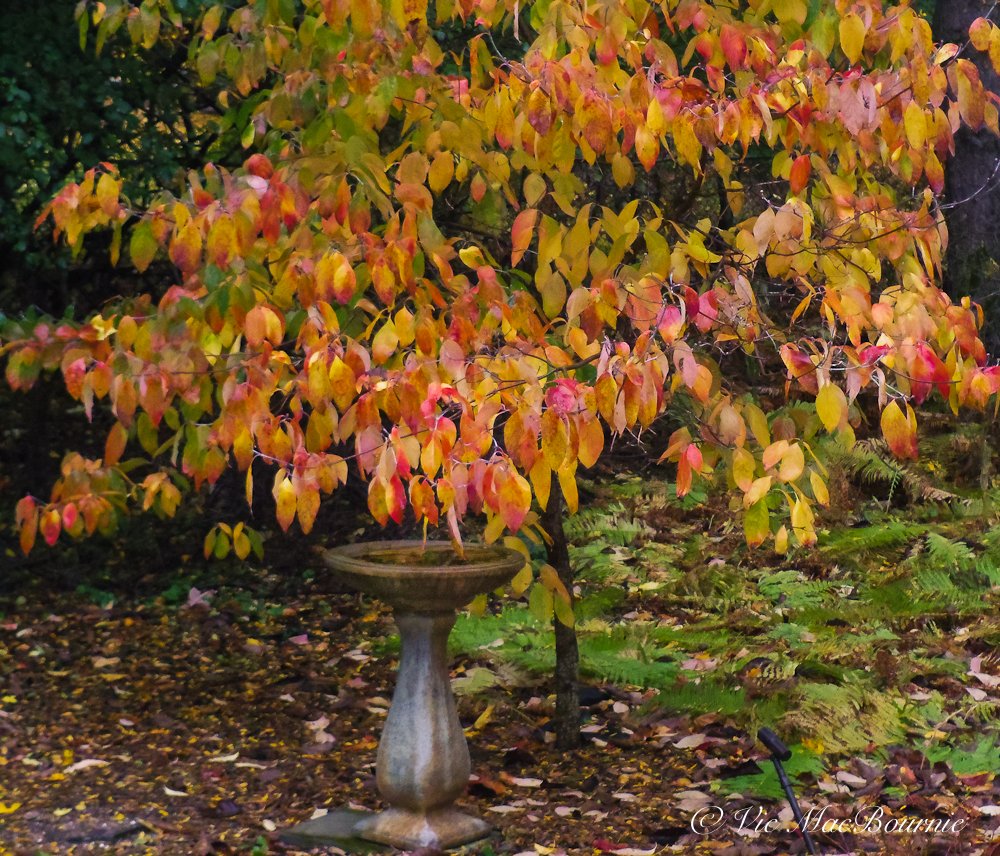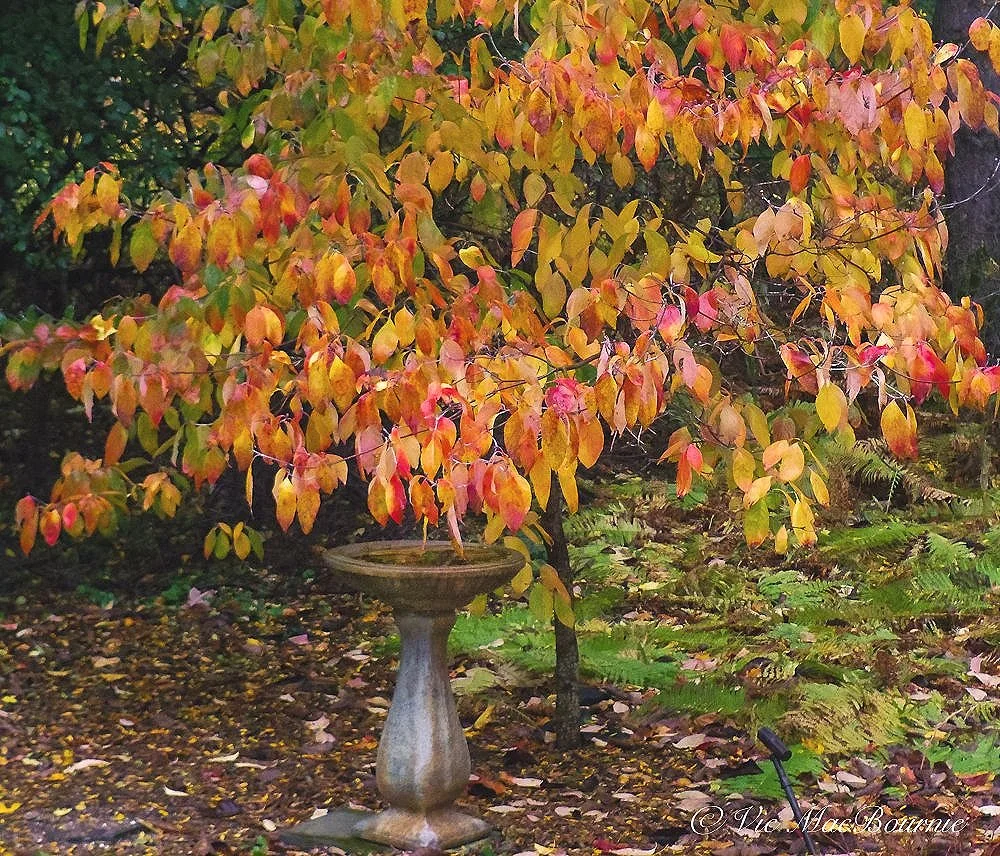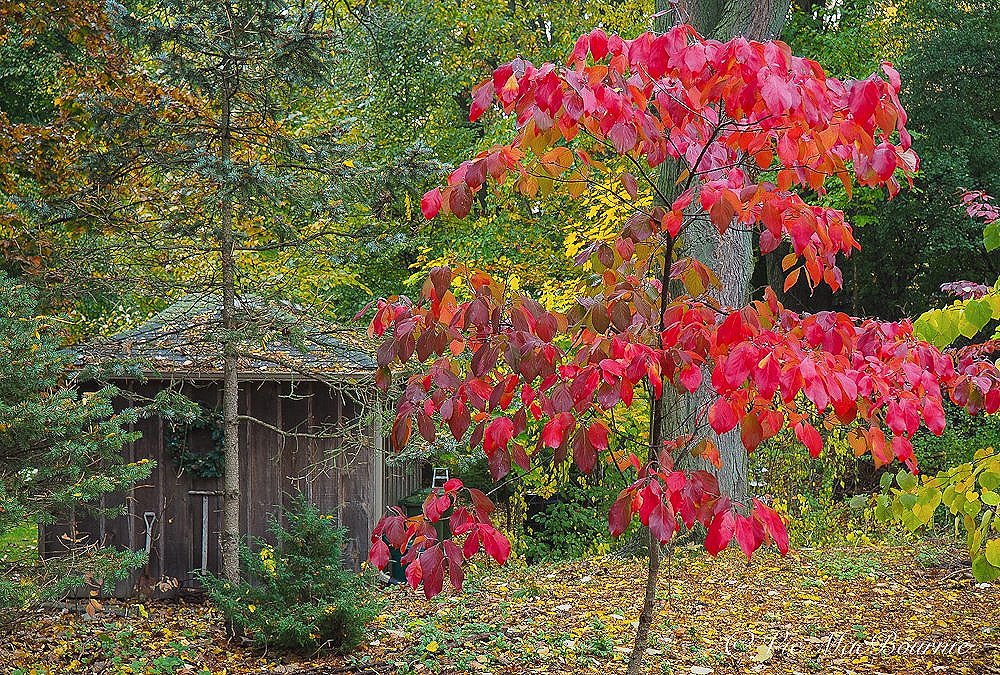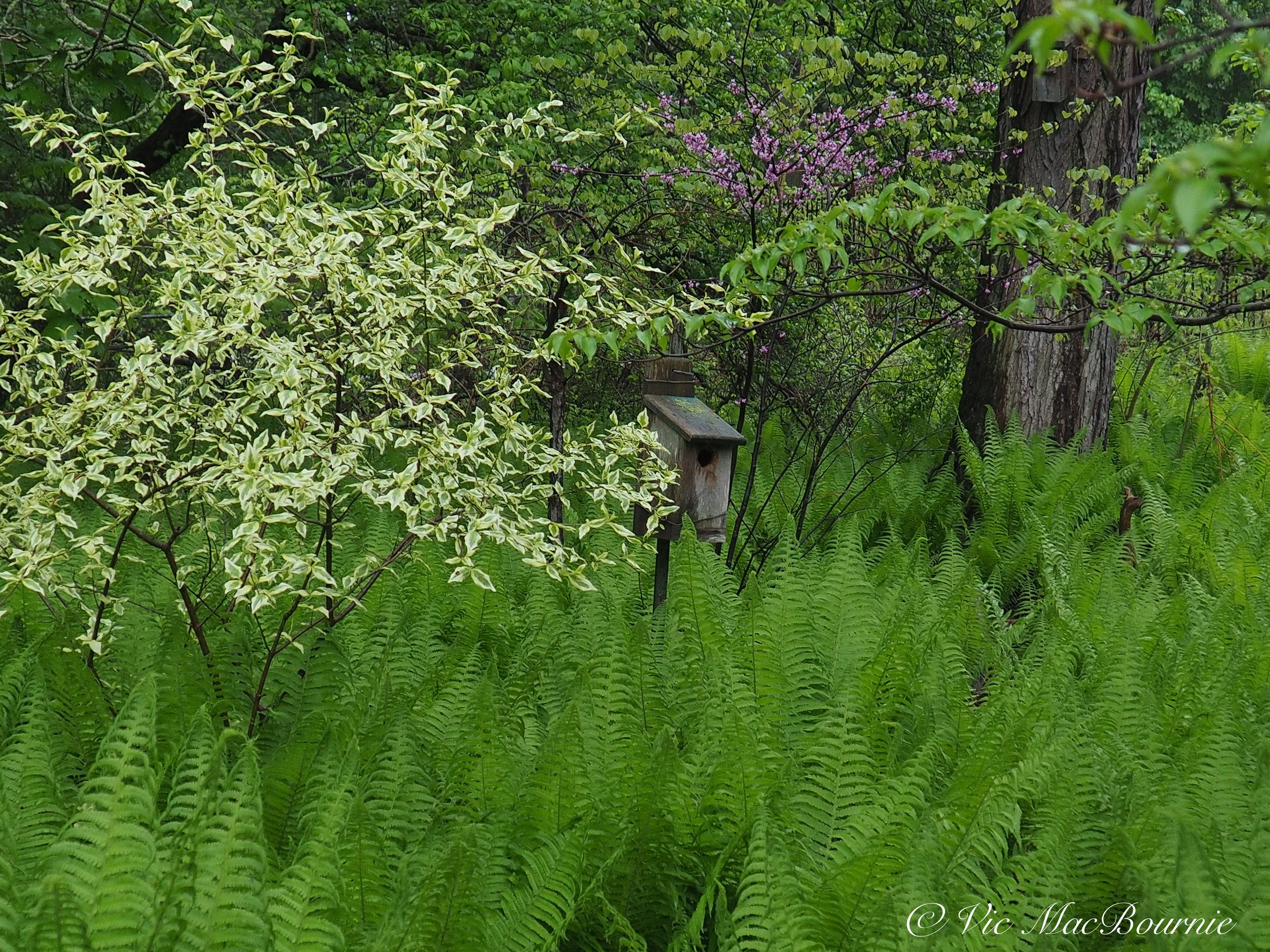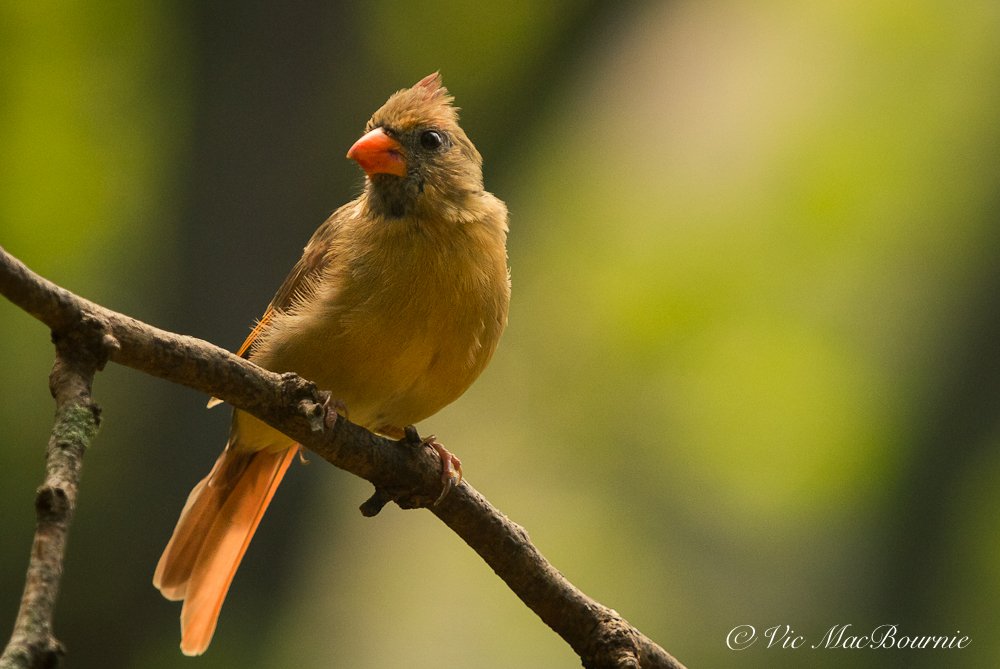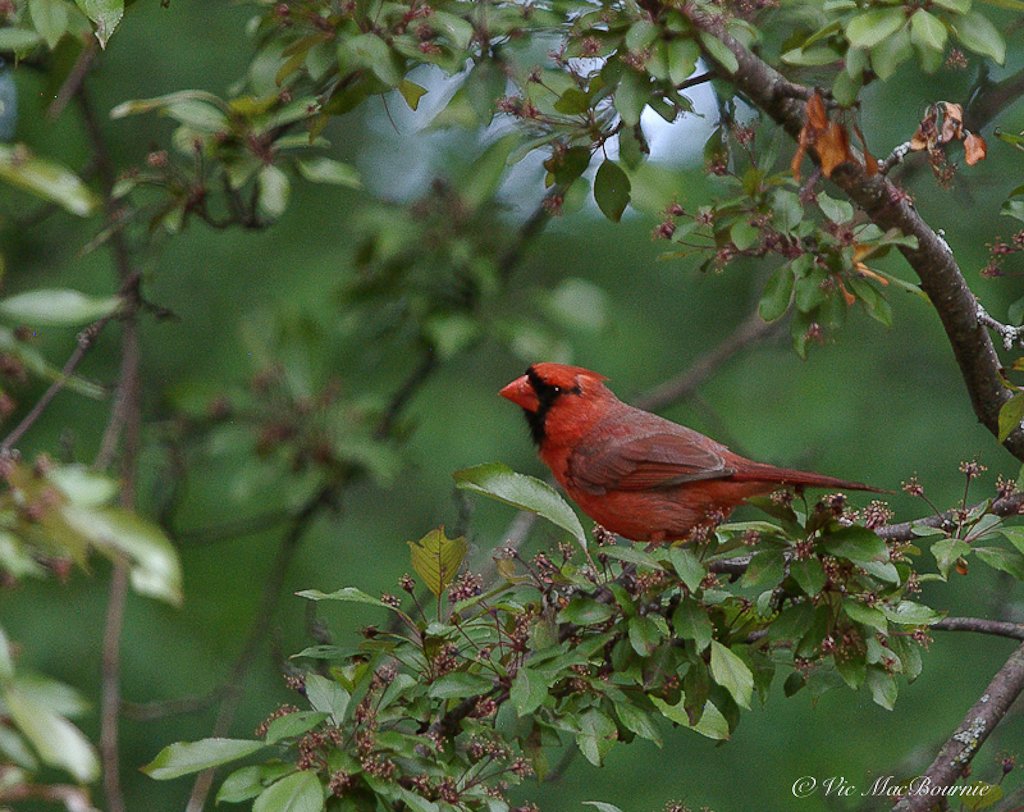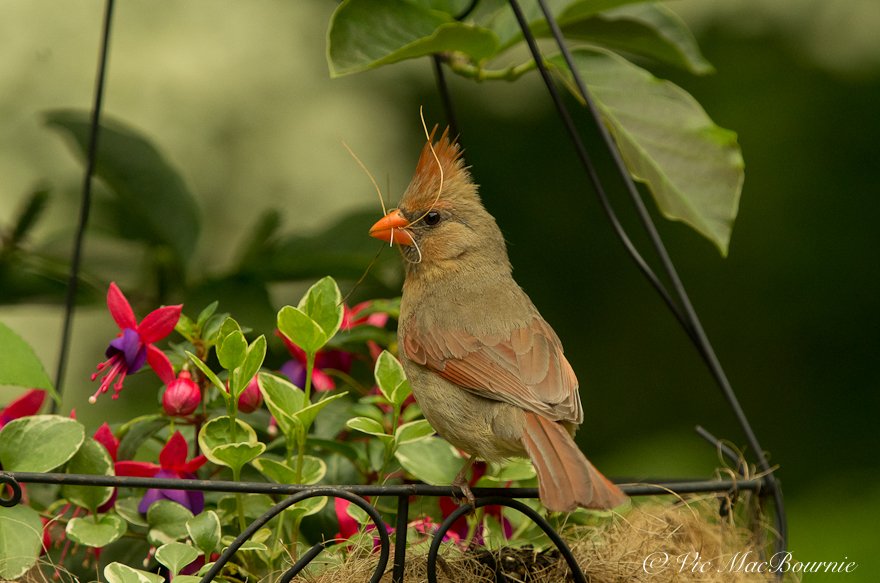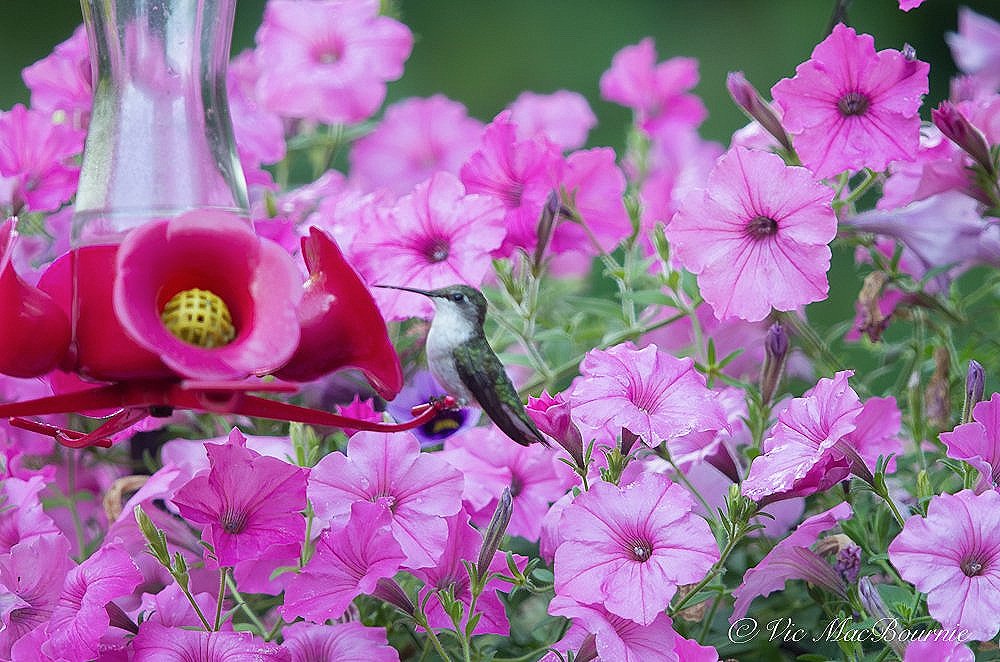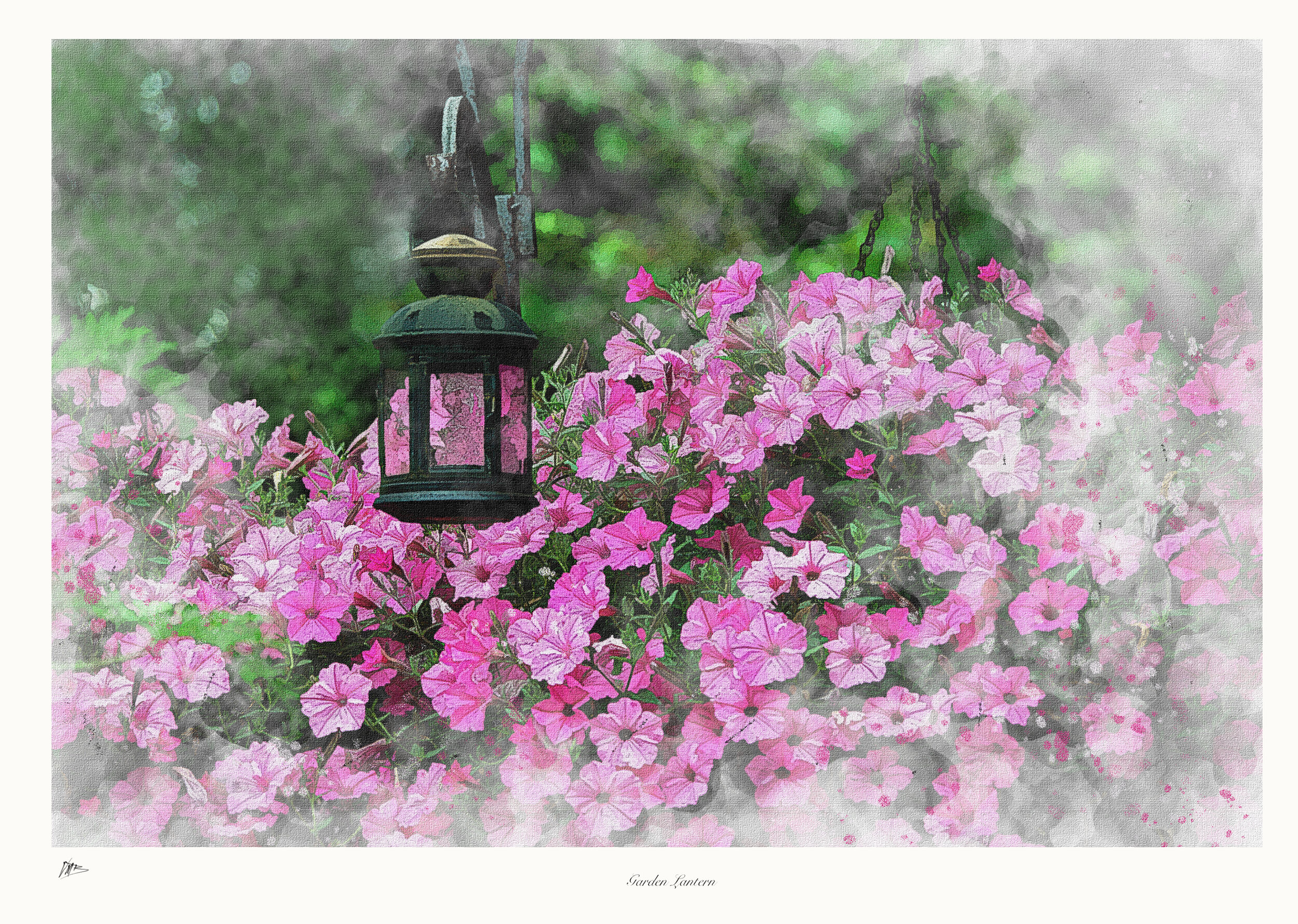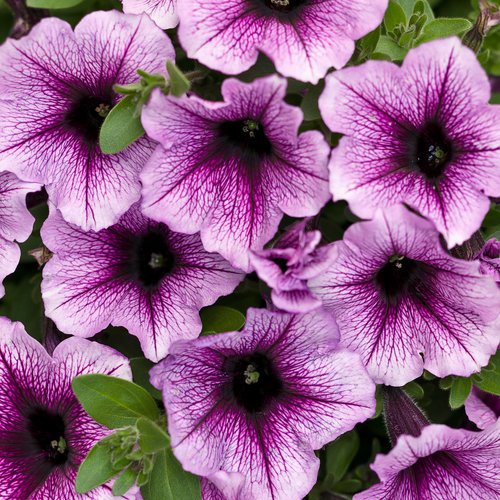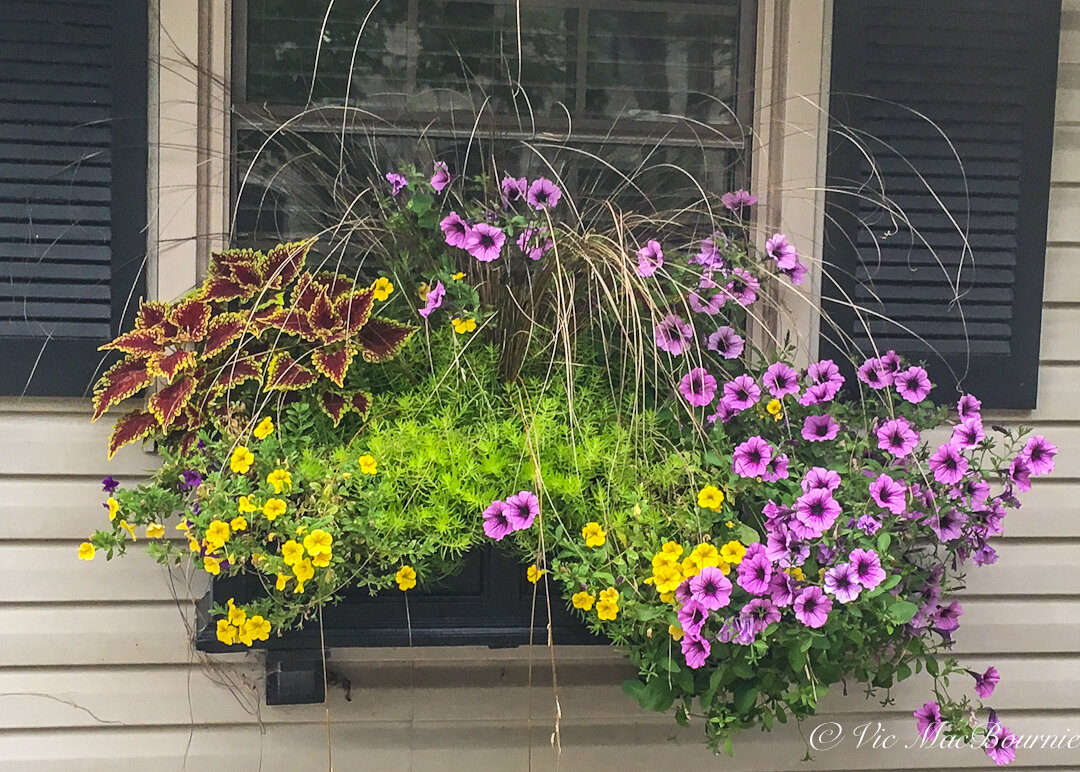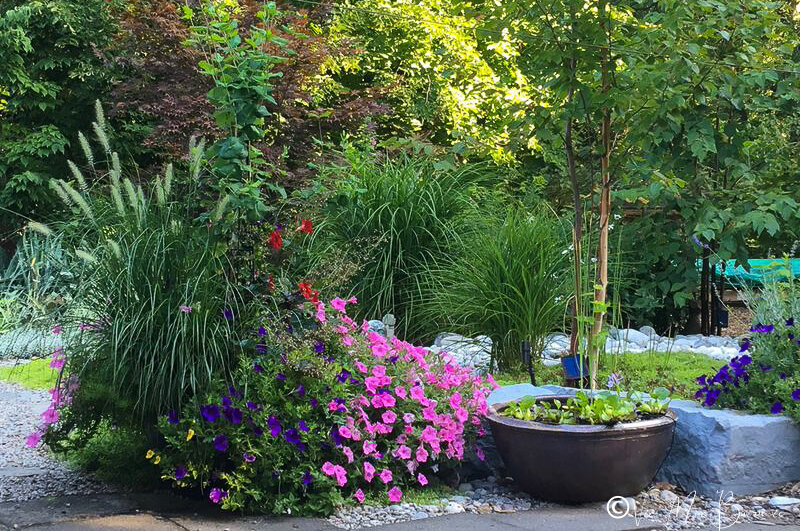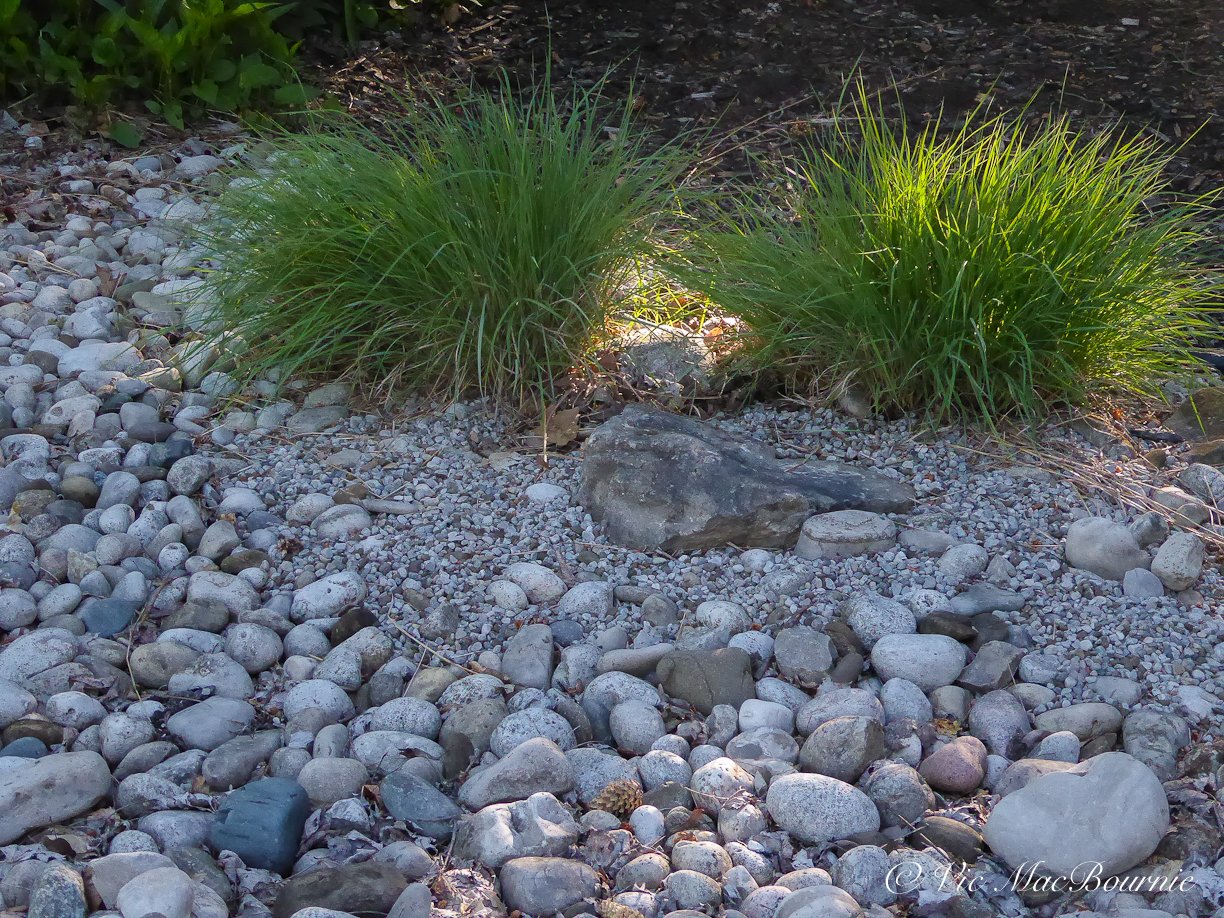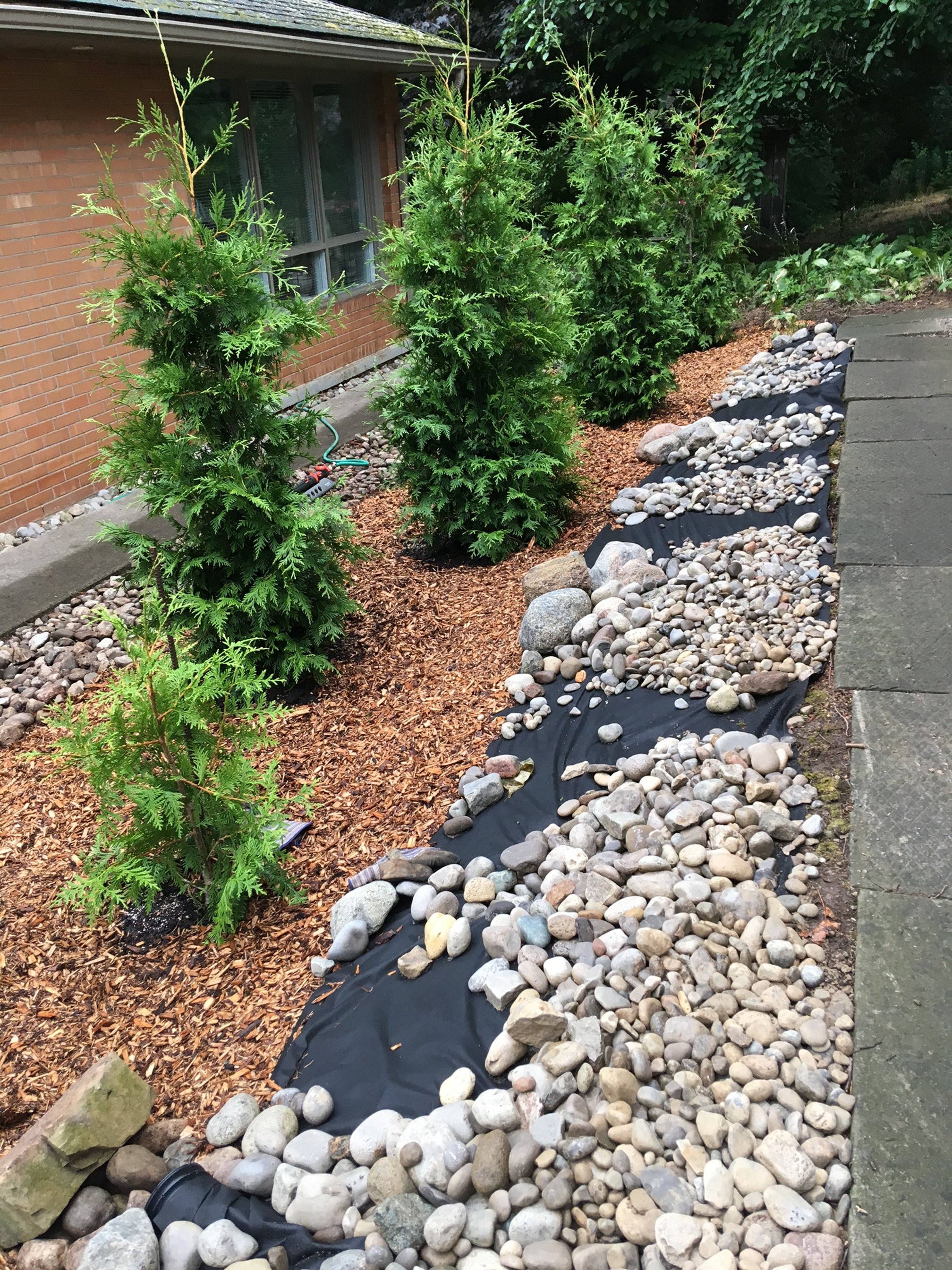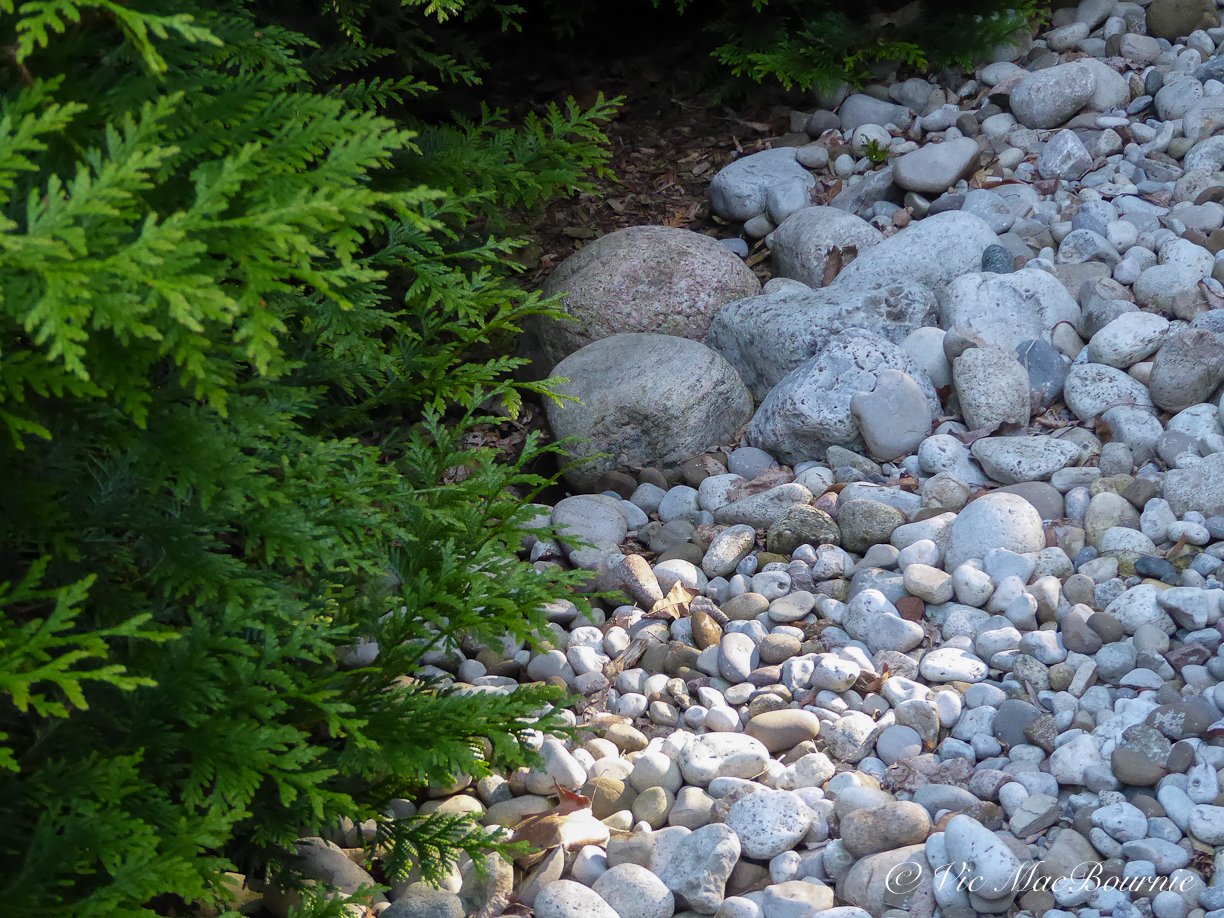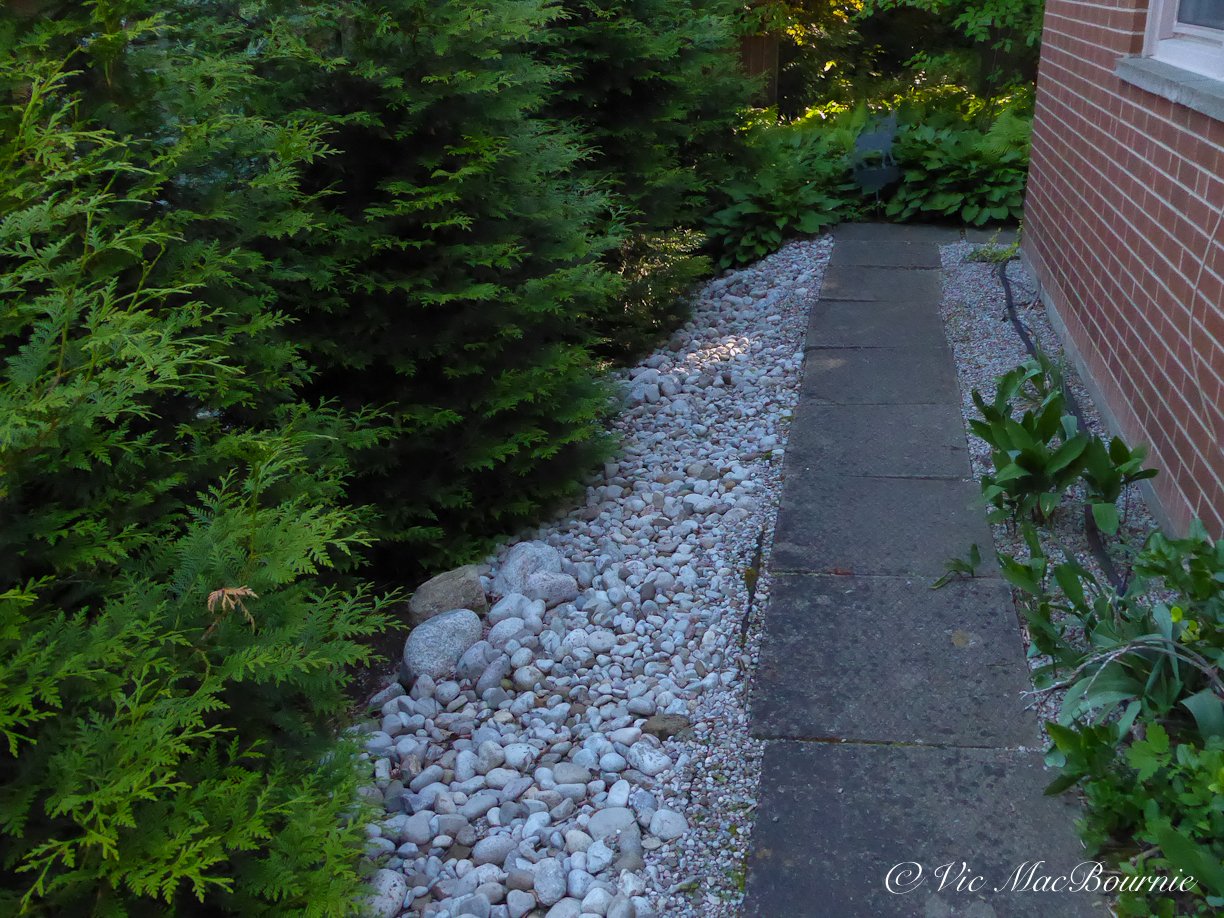Adding Trilliums to your woodland or shade garden
There are more than 40 different species of Trilliums. Look to plant ones that are native to your area.
It’s hard to resist a scene like this downed birch tree literally surrounded by thousands of trilliums along Trillium Trail.
Memories of thousands of trilliums covering the forest floor
Trilliums were one of the first ephemeral wildflowers that caught my attention on the forest floor. At the time, we lived near a Provincial Park that included an area known as the Trillium Trail. I spent many summer evenings strolling along Trillium Trail looking for the perfect composition among the hundreds of thousands of trilliums.
As far as the eye could see were trilliums. I’ve not been back in a long time and I understand that the number of trilliums along the trail are down substantially. The decline was no doubt the result of a host of reasons not the least being the thousands of visitors deciding they would like a few Trilliums for their own gardens, to the natural decline of the habitat as the young forest matures. Click on the link for my earlier post on why we should NOT be picking or digging up wildflowers.
Trilliums are ephemerals that are meant to be enjoyed when our garden conditions favour them. An open woodland with a soil rich in humus is ideal for these showy white flowers. Plant them in clumps so you can appreciate them from afar.
Don’t make the mistake of planting them in a sunny area with poor soil. They likely won’t survive for more than a season or two and you’ll be wasting the opportunity to plant them in an area where they will thrive.
Our front yard several years ago with many white trillium clumps. Many of the trilliums have disappeared but a few remain having escaped the rabbits and deer.
Early in our woodland garden journey, I planted a number of trilliums in our front garden under the summer shade of a Crimson Maple. (see image above) That should have been ideal for the wildflower, but our soil was much too sandy to feed these wildflowers properly and encourage them to multiply into a mini Trillium Trail. Instead, the rabbits and deer likely chomped on them and most that escaped eventually gave in to the poor, sandy soil.
I should say, however, a few have survived and still continue to put on a little show in the spring. In the meantime, I’ve learned enough to plant any new Trilliums I purchase in the back where our soil holds much more organic matter and is ideal for trilliums and other ephemerals.
The rabbits and deer continue to take a toll on our trilliums, but I’m convinced I can get enough into the ground to revive, at least partially, that feeling I had of walking along Trillium Trail and feeling the magic of Ontario’s official flower carpeting the ground around me.
It’s hard to imagine a woodland without Trilliums.
Easily recognized by their three petalled white flowers surrounded by a whorl of three green leaves, these early spring bloomers have long been a favourite of gardeners looking to celebrate spring.
Although there are more than 40 trillium species, with varying colours ranging from white to yellow, maroon and approaching nearly purple, most are familiar with the white trillium (T. grandiflorum).
If given proper growing conditions, Trilliums are relatively easy to grow and are long-lived in our woodland gardens. Provide them with an organic-rich soil that is well drained but kept moist all summer. The flowers will bloom early before the trees are all leafed out, and become dormant by midsummer.
Trilliums do not transplant well if they are dug up from the forest floor, so always purchase Trilliums from a reputable nursery.
Gardeners on a budget can propagate Trilliums from seed, but expect to wait up to five years before you begin to see blooms. Seeds sown in the garden will not even germinate until the second year. Propagating trilliums by rhizome cuttings or, even better, division when the plant is dormant is probably an easier way to go.
What type of conditions are needed to grow trilliums successfully?
To grow trilliums successfully, it is crucial to provide the right conditions. Trilliums thrive in woodland settings with dappled sunlight and rich, well-draining soil. These plants prefer moist, humus-rich soil with a slightly acidic pH level. Adequate moisture is essential, especially during the growing season, but it's important to avoid waterlogged conditions that can lead to root rot.
Additionally, trilliums benefit from a layer of organic mulch to help retain moisture and regulate soil temperature. Planting them in areas with good air circulation can also prevent fungal diseases. It's recommended to avoid disturbing trilliums once they are established, as mentioned earlier in this post, they do not transplant well due to their sensitive root systems.
Overall, providing a shaded, moist, and nutrient-rich environment is key to successfully growing trilliums in a woodland garden.
Can you grow trillium from seed?
To propagate trilliums, you can indeed grow them from seed. Collect mature trillium seeds in late summer or early fall when the seed pods have ripened and turned brown. It's essential to sow the seeds immediately as they have a short viability period.
Start by preparing a seedbed with well-draining, moist soil in a shaded area of your garden. Sow the seeds at a shallow depth, covering them lightly with soil. Keep the seedbed consistently moist but not waterlogged to promote germination.
Trillium seeds can be slow to germinate, often taking 1-2 years to sprout. Patience is key when growing trilliums from seed, as they require a period of cold stratification to break dormancy. This mimics their natural growth cycle in the wild.
Once the seeds have germinated, continue to provide the young plants with the ideal woodland conditions they prefer.
How long before trillium seeds produce plants?
Trillium seeds can be notoriously slow to germinate, testing the patience of even the most dedicated gardeners. On average, it can take anywhere from 1 to 2 years before trillium seeds produce plants. This extended timeline is due to the seeds' natural dormancy period, which requires a cold stratification process to trigger germination.
During this dormancy period, the seeds undergo a necessary chilling period to mimic the conditions they would experience in their native woodland habitats. This process is essential for breaking the seeds' dormancy and stimulating growth when conditions become favorable.
While the waiting period may seem long, the reward of seeing delicate trillium seedlings emerge from the soil is well worth the wait.
Author Profile: Vic MacBournie is a former journalist and author/owner of the award-winning website Ferns & Feathers. He writes about his woodland wildlife garden that he has created over the past 25 years and enjoys sharing his garden photography with readers.
How to plant a hanging basket
Hanging baskets are perfect opportunities to add a punch of colour to your patio.
Try these tips to create stunning hanging baskets
Planting a hanging basket is one of the more creative and satisfying gardening projects in spring. It can be as simple as planting a single, fast- growing plant like a Proven Winners’ Supertunia in a small hanging basket, or as complicated as adding a host of plants including numerous fillers, spillers and thrillers that combine to create a breathtaking hanging basket.
In our primarily shaded woodland garden, six hanging baskets play a vital role in providing much-needed colour in the garden. In fact, the combination of hanging baskets and containers placed throughout the garden are, at times, the only real colour brightening up our woodland.
Hanging baskets don’t have to be complicated. Using a single species can be an effective way to add colour to the garden. Here, three varieties of Supertunia create a cohesive look with a low maintenance approach.
The importance, therefore, of getting them right can be the difference in enjoying a colourful garden from spring through fall, or learning to appreciate the textures and varying greens so often associated with a shade or woodland garden.
There are basically three types of hanging baskets: steel baskets lined with a coco mat, plastic pots and peat-based pots. The plastic and peat planters are most often the ones purchased at nurseries already planted up. The peat based planters offer the benefit of looking good even before the flowers have spilled over the container, while the plastic container work well to retain water during the hottest days of the summer.
The steel baskets with coco mats are most definitely the most aesthetic of the group, but because water drains so freely from them, keeping them properly watered can be tricky requiring you to water them twice a day in the summer.
If you are planting your own, chances are you are using the steel planters with coco mats.
For more on container planting check out my story on creating container and hanging baskets for hummingbirds.
Consider your conditions
It’s important to establish the light conditions your planters will be in before you begin planning your containers.
While full sun in a hot dry climate like those experienced in Arizona is different from full sun in the Pacific northwest, the same general principles can apply. The difference is the time of day the plants are in the sun. In hot dry areas, provide the required sun primarily in the morning when it is not as hot. In the high humidity areas of the coastal areas or around the Great Lakes region where humidity can be extremely high that sun can be provided in the hotter parts of the day in the afternoon.
Rule of thumb is that full-sun plants need a minimum of six- to eight-hours of sun to do well and produce an abundance of flowers. Part sun, part shade want 4-6 hours of sunlight and full shade want 4 hours or less of sun to perform well and not have their foliage get scorched by the sun.
Size matters when it comes to containers
The next consideration is the size of your container. The larger 17-18-inch containers will retain a lot more moisture than the more traditional 14-inch containers which need to be watered several times a day during the heat of the summer. It’s always a good idea to add a perforated plastic liner inside the smaller containers to help it hold water longer. I use a a green garbage bag cut up to get the job done.
Start with new potting soil
It all starts with an excellent mix of fresh new potting soil, not garden soil. Be sure to completely clean out your old soil and coco mat and use all fresh soil and mat rather than simply topping up last year’s soil.
It’s no secret that keeping hanging baskets properly watered, let alone keeping them from drying out between waterings, is the biggest challenge most of us face. Water retaining granules may look like a simple solution, but they have their own inherent problems. While many garden nurseries advertise soil with built-in water granules that help hold moisture in the soil, the jury is still out whether these polymer-based granules are good for the environment. It’s probably better not to add these granules to your soil or purchase soil with these water-retaining granules already included.
Adding a slow release granular fertilizer to the soil gives the plants a good start and provides the fertilizer at the roots of the plants where they need it most to get a good start. You can top up the slow release fertilizer every six to eight weeks in addition to the weekly fertilizing with a water soluble fertilizer.
Although not a hanging basket, our window box features many of the plants that also work in a hanging basket, including Lemon Coral sedum, Supertunias, Superbells and coleus.
Getting started with your planter
Insert the coco mat into the basket and add potting soil until it is about one inch lower than the lip of the container. The number of plants to use depends on the size of the basket. The rule of thumb is that for a 14-inch basket you should use three to five plants (depending on the type of plant you are using.
For a 15- to 18-inch basket you should use between 5 and 7 plants.
When you are adding the plants, ensure that they are not root bound from the nursery. If they are, you can break up the roots a little before planting them.
Once they are in place, tamp the soil down around the plants to remove any air pockets, and water them in well.
Let’s talk plants for hanging baskets
Let’s face it, preparing the pot is easy, choosing the plants for your containers can be the difficult part. Throughout this article I refer to specific plant names that are often associated with Proven Winners’ plants. Similar plant varieties are available from other sources, however I have had only positive results from Proven Winners’ products. Finding their plants, however, is not always the easiest of tasks. You can order directly from the Proven Winners’ website in the United States and Canada.
The options are too numerous to list here, but if you are planting several hanging baskets, don’t be afraid to experiment a little and have some fun. Last year, for example, I planted up a couple of containers and planters with hummingbird in mind so that I could photograph them at more or less eye level as they worked the hanging basket right near my favourite sitting spot.
To be successful, however, we need to first think about where our containers are going to be placed – in sun, shade or a combination of the two.
The other consideration is the amount of maintenance the plants require. Just keeping the containers well watered can be enough, having to go around and deadhead the spent flowers is only going to add to the maintenance. And, if it’s not done regularly, will result in a messy looking unkept basket that is too easy to give up on early in the year.
Plants like Proven Winners’ Supertunias and Superbells are excellent because they are self-cleaning, easy and fast growers. I have also found them to be good for attracting hummingbirds and other pollinators from native bees to butterflies.
Also look for lower-maintainenance plants that can stand up to drying out a little between waterings.
Some sun loving plants to consider
• Petunias are available in a wide range of colours. Not all are created equal. Some stay small, while others grow fast into large plants that spill over the sides of your basket in short order. Supertunia Vista are the ones I always look for to plant in my containers and hanging baskets. Supertunia Vista Bubblegum is a favourite for its never-ending pink blooms. The Vista series grows huge whether they are in a basket or planted in the landscape. One supertunia vista in a 14-inch basket is often enough to fill out the basket beautifully all on its own. Make sure not to plant it with smaller, slower growing plants because chances are it will soon overpower that plant and bury it beneath its flowers.
• Calibracoa or Superbells are another favourite. They are also available in a variety of colours and can stand up to drier conditions for short periods of time.
• Trailing verbenas are exquisite plants that help make up the spiller component in your baskets. These can be the main plant in your container or compete with the likes of Supertunia Vista plantings.
• Lantana are heat-loving annuals that do well in dry conditions often found in our containers. They will not compete with the most vigorous of plants, and do not spill out quite like the Supertunias and Superbells, but they will perform nicely as colourful fillers in the container.
• Geraniums are classic container plants and excellent to use as your thriller. They can, however, get quite large and require some dead heading so you might want to think twice before using them in smaller containers or hanging baskets.
• Lobelias make for lovely fillers adding a delicate touch to a basket planted with less aggressive plants that allow these smaller plants to stand out. They make a nice accent plant but prefer cooler less intense sun than some of the other plants mentioned above.
• Lemon coral sedum is a great foliage plant that adds a chartreuse, lemony-yellow accent to containers.
• Potato vines in both black and green provide beautiful foliage accents to containers and baskets as they trail to the ground. They do require a little more care to ensure they get consistent moisture and do not dry out. Pairing them with plants like Calibracoa that like to dry out between waterings might not be the ideal situation for either plant. Always try to match plants with similar water needs in your containers.
•Euphorbias adds a delicate cloud-like effect to any container filling in areas around the crown of the basket or container.
• Alyssum has come a long way from the time your parents used them along a pathway. Today’s plants grow much larger and can be used as spillers or trailers in containers. The purple variety are exceptionally popular to add a pop of color.
Three strong foliage trailers for sun and shade to consider
• Creeping Jenny is another trailer that adds a hit of chartreuse to the baskets as they reach for the ground.
• Dichondrea Silver Falls is an icy blue plant that can take dry conditions and continue to perform well.
• Licorice vine (Helichrysum petiolare) is good to use in varying lighting conditions as it can take both full sun and shade. The Black Heart variety is particularly good for shady conditions.
Plants that do better in shade (4 hours of sun a day)
• Coleus is the ideal shade loving plant that depends only on its foliage for its striking look. Available in a host of colours, this is a must for the shade container. Coleus can grow quite large so you may want to look for smaller varieties. Chocolate Drop is a coleus with smaller leaves that trail and can act as both a filler and thriller in a smaller basket where it is not overwhelmed by large, more aggressive plants.
• Torenia or wishbone flower is a short plant with numerous flowers that can work well in baskets.
• Browalia is a popular choice, available in both blues and whites
• Begonias are an excellent choice. Trailing Begonias add a lot of colour and foliage interest. They are available in several varieties from trailing plants that can work as spillers to more upright varieties that work as thrillers. Look for varieties with outstanding foliage to add more interest to the container.
• Impatiens are not just for the landscape. Many varieties are available including some with interesting foliage.
• Heucharas or coral bells use foliage to add texture.
• Ferns can act as an ideal thriller for the summer and then planted into the garden in the fall if you choose a hardy version. Maidenhair fern may be perfect for a smaller shade container. If you are using ferns, ensure sure that the surrounding plants can handle the moisture levels ferns require.
• Trailing ivy works as a trailer. Look for an ivy with variegated foliage to add interest to your shade container.
If this leaves you totally confused, you can simply go to Proven Winners’ website and click on Garden Ideas. Use the filters to specify your requirements and tap into their valuable recommendations. You can follow their recommendations exactly or choose to experiment a little with plants that might be more your style or provide wildlife with a more sustainable source of food.
Author Profile: Vic MacBournie is a former journalist and author/owner of the award-winning website Ferns & Feathers. He writes about his woodland wildlife garden that he has created over the past 25 years and enjoys sharing his garden photography with readers.
Why we need more birch trees in our gardens
Birch trees are among the best trees for wildlife we can plant in our gardens. Not only ar they a beautiful addition, they are also important for wildlife.
Are birch trees good for wildlife?
No matter how much I love dogwoods, it’s the birch trees that take centre stage in our woodland garden.
Three large clumps of White Birch create the main focal point in the backyard, whether you’re outside on the patio or looking out the bay window from the kitchen/dining room. I decided to plant the trees quite close to the house directly in front of the windows so we could experience everything they bring to the garden winter, summer, spring and fall.
The mini birch grove creates a secluded spot surrounding a dry river bed and small bubbling rock. For more on our birch grove and bubbling rock, check out my earlier post here.
While the elegant peeling bark and white trunks create the aesthetic appeal, it’s their attractiveness to birds and other wildlife that makes them true stalwarts in the garden.
Birds often sing from the tree’s elegant branches where, in spring, if you’re lucky, you can catch a warbler chasing insects around the tree branches. In summer, our birch trees make the perfect landing spot for hummingbirds that rest on the delicate branches in the open shade the trees create.
Birch trees are an elegant addition to any garden whether they are used as a single specimen, in clump form or en-masse as seen above.
“Birches are excellent sources of food for wildlife. Not only do they support several hundred species of moths and butterflies, they also produce seeds and flower buds that are important food sources for songbirds, small mammals, grouse and turkeys. Species with exfoliating bark provide lots of nooks and crannies in which insects hide in the winter months and thus provide woodpeckers with food when they need it most.”
Even in our front yard, I’ve created a spot for three narrow-growing birch trees (Betula pendula 'Purpurea' ) that work perfectly as an attractive buffer between us and our neighbours’ properties. I remember planting the trees at least ten years ago when they were nothing more than $10 whips. Since then, these fast-growing trees have grown into handsome specimens that have kept their narrow, shape while taking on their white trunks.
Birch trees, of course, are highly valued in gardens for their aesthetic appeal and their ability to attract diverse wildlife.
Their striking white bark and delicate leaves add a touch of elegance to any garden landscape, making them a popular choice among gardeners.
In his book The Natural Garden, Ken Druse writes about the non-native ‘Whitespire Birch’: “Many birch species have problems, but the beauty of their bark and their overall form make them desirable as specimens. … Plant several against a backdrop of evergreens. Because they are are relatively short-lived (50 to 70 years) consider planting a second some fifteen to twenty years after the first.”
Birch trees’ role in attracting wildlife
Beyond their beauty, birch trees play a crucial role in supporting wildlife populations.
The unique characteristics of birch trees make them a magnet for various bird species, such as chickadees and finches, that are drawn to the trees for both food and nesting sites. Additionally, birch trees provide a vital food source for insects, caterpillars and butterflies, further enhancing the biodiversity of the garden ecosystem and creating a built-in food source for birds.
It’s hard to argue that by planting birch trees in our gardens, we not only enhance the visual appeal of our outdoor spaces but also create a welcoming habitat for a wide range of wildlife. The symbiotic relationship between birch trees and wildlife underscores their value in garden settings, making them a cherished addition for both nature enthusiasts and garden lovers alike.
What birds are attracted to birch trees and why?
Birds are attracted to birch trees for a variety of reasons, making them a hub of avian activity in our garden.
The trees provide a valuable food source for birds, with their many small, winged seeds contained in the droopy catkins early in spring, followed by the leaves budding out, and the myriad of insects and caterpillars attracted to the trees.
You can expect species like the American Goldfinch, Purple Finch, Pine Siskin, Chickadees, Fox and Tree Sparrows and even Ruffed Grouse to drop by to feed on the seeds produced by the trees in spring.
But, of course it’s not just the seed eaters that are attracted to the trees.The real value of the birch tree are the insects that are drawn to them. Experts have documented several hundred species of Lepidoptera (moths and butterflies) that utilize birch trees.
In fact birch trees are host plants for butterflies like the Mourning Cloak as well as incredible moth species like the Cecropia, Polyphemus and the Luna Moth. The trees, therefore, are important to both the moths and butterflies as well as the birds that count on a good supply of these caterpillars to feed their nestlings.
Wherever there are insects and caterpillars, it’s likely you’ll find woodpeckers as well. Our birch trees attract more than their share of woodpeckers to the yard. While it can be a little disconcerting watching them peck away at your favourite tree, remember that they are actually doing you and the tree a favour by removing many of the potential borers before they can do damage.
In his book Bringing Nature Home, author Douglas Tallamy explains the importance of birch trees in our gardens adding that the tree supports more than 320 species and 413 Lepidoptera (moths and butterflies). Birches are not the top tree in the food chain, but they are among the best behind only oaks, willows and cherry/plums on the list of best trees to support wildlife.
Tallamy’s book points out that Birches are one of the host plants for the magnificent Tiger Swallowtail butterfly as well as the impressive Cecropia Moth, Imperial Moth, Luna Moth, Polyphemus Moth, Promethea Moths, Four-horned Sphinx Moth and Small-Eyed Sphinx moths. He adds that only the Arched Hook Tip moth and the Chocolate Prominent lepitdoptera survive only on birch tree leaves.
Tallamy writes: “Birches are excellent sources of food for wildlife. Not only do they support several hundred species of moths and butterflies, they also produce seeds and flower buds that are important food sources for songbirds, small mammals, grouse and turkeys. Species with exfoliating bark provide lots of nooks and crannies in which insects hide in the winter months and thus provide woodpeckers with food when they need it most.”
In our backyard, the cardinals like to use our birch trees to survey the area before moving in to the bird feeders or one of the many bird baths.
Our backyard birds rely on the trees not only for sustenance but also for nesting sites. As the trees get older, they can even be home to larger birds such as Great Horned owls.
The dense foliage and branches of birch trees offer a safe and secure environment for many birds to build their nests and raise their young.
What insects and butterflies benefit from birch trees?
Birch trees play a crucial role in supporting a diverse array of insects and butterflies within garden ecosystems.
These trees are particularly essential for the survival of various insect species, including the striking Mourning Cloak butterfly and the iconic Luna Moth. Additionally, birch trees provide a vital habitat for caterpillars such as the Eastern Tiger Swallowtail and the Viceroy butterfly.
In terms of insects, the birch tree serves as a host plant for the Bronze Birch Borer beetle, which plays a significant role in the decomposition process of decaying wood.
Furthermore, the Birch Leafminer moth relies on birch trees for its larval stage, contributing to the intricate web of interactions within the ecosystem.
Overall, the presence of birch trees in gardens not only enhances the visual appeal but also fosters a thriving community of insects and butterflies, highlighting the importance of these trees in supporting biodiversity and ecological balance.
What are the different species of Birch trees available?
Birch trees are known for their diversity, with several species offering unique characteristics and benefits to garden ecosystems. One of the most prominent species, native to northeastern U.S. and Canada, is the Yellow Birch (Betula alleghaniensis).
This species stands out for its distinctive yellow bark and its ability to thrive in cooler climates, making it a popular choice for gardens in these regions.
Another notable birch species is the Paper Birch (Betula papyrifera), recognized for its striking white bark that peels in thin layers, adding visual interest to garden landscapes. This species is well-suited for areas with moist soil conditions, making it a valuable addition to gardens near water features or wetlands.
“Many birch species have problems, but the beauty of their bark and their overall form make them desirable as specimens. … Plant several against a backdrop of evergreens. Because they are are relatively short-lived (50 to 70 years) consider planting a second some fifteen to twenty years after the first.Whatever it is, the way you tell your story online can make all the difference.”
Additionally, the River Birch (Betula nigra) is a favored choice for its unique exfoliating bark that reveals shades of cinnamon, cream, and salmon underneath. This species is particularly resilient to various soil types and can tolerate wet conditions, making it versatile for different garden settings.
Is the river birch the best birch tree for our gardens and why?
The River Birch (Betula nigra) is indeed considered one of the best birch tree species for gardens, and for good reasons.
Its unique exfoliating bark, showcasing shades of cinnamon, cream, and salmon, adds a visually appealing element to garden landscapes.
Moreover, the River Birch is highly adaptable to various soil types and can thrive in wet conditions, making it a versatile option for different garden settings. Its resilience to wet soil conditions sets it apart from other birch tree species, allowing it to flourish near water features, ponds, or wetlands without compromising its health.
Additionally, the River Birch provides valuable habitat and food sources for wildlife, attracting birds, insects, and other beneficial creatures to garden ecosystems.
How large do birch trees grow?
Birch Trees grown in favourable conditions can get quite large reaching from 30 to 65 feet high (9-19 meters) with a spread of 15-30 feet (4.5-9 meters). Birches are fast-growing, short-lived (50-70 years) trees, that do best in natural areas away from high-stress situations.
What conditions do birch trees like to grow?
Birch trees prefer well-drained soil that is moist but not waterlogged. They also appreciate full sun exposure, although some species can tolerate partial shade.
Birch trees’ shallow root system can be very sensitive to heat and drought. The trees need moist, cool soil, but also sunshine on its leaves to flourish.
Plant your birch tree at a site that will shade its roots in the afternoon but still provide sun to canopy for a good part of the day. Mulching also helps to maintain soil temperature.
Another crucial factor for birch trees is soil pH. They prefer slightly acidic to neutral soil, with a pH range between 5.0 and 7.5.
Additionally, birch trees are sensitive to drought conditions, so regular watering, especially during dry periods, is necessary to keep them healthy. Mulching around the base of the tree can help retain moisture and regulate soil temperature, benefiting the tree's growth.
By providing the right soil conditions, adequate sunlight, and proper watering, gardeners can create an optimal environment for birch trees to thrive and enhance the beauty and biodiversity of their outdoor spaces.
Author Profile: Vic MacBournie is a former journalist and author/owner of the award-winning website Ferns & Feathers. He writes about his woodland wildlife garden that he has created over the past 25 years and enjoys sharing his garden photography with readers.
Wolverine Scanner review: Revisiting your old images
Today’s film revival has caused many of photographers to look into different ways to scan their old slides or negatives. The Wolverine system and other all-in-one scanners are worth investigating.
Simple scanner converts slides and negatives to digital
If you’re like me and have boxes or binders full of old slides and negatives collecting dust in the basement, you might be thinking of the best way to turn them into digital images.
A quick look on Amazon, Ebay or one of the many on-line photography sites turns up a host of options from flat-bed scanners that include slide and negative attachments, to small, stand-alone scanners that store the scanned images directly on to an SD card, eliminating the need for hooking into a computer to scan the images.
There are more expensive scanners that look promising and there are even devices that allow you to duplicate your analogue images into digital with your existing digital camera and macro lens.
There is also the option of sending your favourite slides or negatives away to be done professionally. These companies will either email the scans to you or put them on a CD or DVD which can then be pulled into your computer or smartphone.
This image of ladyslipper orchids scanned reasonably well despite the higher-than-normal contrast.
The choices can be overwhelming and, depending on what you decide, can get quite expensive. The results too, are not always what you were expecting.
Years ago, I used a dedicated Canon slide and negative scanner to convert my slides to digital and the results were excellent. Unfortunately computer upgrades made the scanner obsolete unless I purchase an older computer with a SCSI outlet. The options today may be more numerous but not necessarily as good.
The key to success and ultimately satisfaction is deciding how you intend to use the finished scan.
If you simply want to convert the images for sharing with friends and family or on social media, you might be surprised about how little “quality” is required to get an acceptable image.
A few years ago I purchased an older, inexpensive Wolverine F2D (film to digital) all-in-one scanner to convert some of my favourite slides into digital images to share both on this website as well as social media.
Newer, more expensive Wolverine scanners such as the Titan 8 in 1, 20 megapixel high resolution film to digital converter, promise much better results with a wide array of film sizes from 35mm, to 127mm, and even 110mm. I have not tested these but if the results are as promised they appear to solve many of the weaknesses I experienced with the much lower resolution older unit.
The revival of analogue film cameras and lomography make these Wolverine scanners much more interesting and useful for today’s modern film shooters. Older models like the one below are available on Ebay and other on-line retailers for very reasonable prices.
The older Wolverine F2D digital scanner proved to be useful to convert older slides and negatives, even if the quality was not always ideal.
The Wolverine system of “scanners” boasts simplicity of use and on that note I give them top marks. All you need to do is drop in an SD card, pop four slides into the holder, push them in to the scanner, watch for the flashing orange light in the small colour window on the front of the unit where the image is shown, and press the red button twice. Voila. The digitized image is sent directly to the SD card in seconds, which can later be transferred to your computer. The same process, more or less, is carried out for scanning negatives. The whole scanning process takes seconds rather than minutes. In addition, no software is necessary to convert the negatives or slides into jpegs, making the whole system convenient and simple for those who just want to convert their old images to digital as simply as possible.
Providing the slide/negative is clean and you are not particular about the quality of the image, your work may be done. However, if you are looking for a clean, high-quality image that is a proper representation of the original image, your work may be just beginning.
I notice that on some of the on-line reviews, some users say the images that come out of the scanners are unuseable. My experience shows that this is not necessarily true and, that with a little work, most of the images are acceptable, some are very good and a few are pretty much unusable.
However, to say a good working knowledge of Lightroom or Photoshop is necessary to achieve these results, would be an understatement. Much post-processing work is often necessary to obtain acceptable results. In addition, I find E6-processed slides such as Fujichrome or Extachrome scan much better than Kodachrome. In fact, Kodachrome slides are often unusable no matter how much work is done on them.
Using the provided tool to clean the scanning bed is critical to reduce the amount of post processing necessary to clean the images.
The following are just a few images scanned on the Wolverine F2D and post processed in Lightroom.
This image of Goldenrod in selective focus is the type of image that converted easily from analogue to digital with minimal post processing. Its lack of extremes makes it a good candidate for scanning. Images with high dynamic range become extremely difficult to capture and the result is either burned out whites or blocked up blacks that can make the image unuseable even for most social media posts.
A major problem you’ll face with these inexpensive all-in-one scanners is that the final file size is small. On my scanner, I’m barely getting a jpeg file size over 1 megabyte. That just isn’t enough to work with. If there is any real serious post processing required, the image is just going to fall apart and make it unuseable.
However, if the original scan is good, it’s likely that you can get a very useable image.
The rusted car door below is a good example of how high-quality scans are possible with this unit. Colours are excellent and very true to the original with only minimal post processing.
Printing these images beyond 4x6 would be interesting and likely not result in satisfactory images for most people looking for a high-quality print. But I really don’t think these scanners were meant for anything more than sharing on social media or with friends and family.
The speed and simplicity of scanning hundreds of slides or negatives in short order is very enticing, but if at least a third of them are really not usable for most of us, then I think you have to take a hard look at whether you should purchase one. Newer models offer more options and a larger finished image size so they may provide much better results on more difficult images.
Let’s look at a few more successful images.
This wild geranium with ferns required more post processing than I wanted but the results are satisfactory.
A visit to Pt. Pelee resulted in this image of a warbler which the Wolverine captured nicely.
The Wolverine F2D captured these vivid colours beautifully along with the frost.
This fawn in the forest is an example of the scanner falling a little short.
Although this image may look acceptable, the scanner struggled to capture the pinks of the cherry tree and the much darker trunk of the tree. A considerable amount of post processing helped save the image, but still falls short compared to the original slide.
This is a good example of how the Wolverine scanner captured the image but struggled to deal with the extreme white feathers around the Great Horned owl’s head. For many of us, this may not be a problem, but for those looking to get the most out of their old slides and negatives, this scanned image falls short.
Should you purchase an all-in-one scanner?
I want to say everyone should purchase one of these scanners to convert their old slides and negatives into usable images for social media or sharing with families. However, there are many negatives which stop me from recommending these scanners to everyone. If you are looking for the ultimate scan quality, these are probably not for you. If post processing is not your thing, these may not be for you.
Dust is a big problem, and the amount of post processing in Lightroom or some other program to get usable results with some images makes me want to think that it may be too much for some.
These frosted ferns were captured nicely on the older Wolverine F2D all-in-one scanner.
If you are looking for consistent high-quality results, one of the flat-bed scanners by Epson might be a better but more tedious choice. If you have no experience in post processing or hate spending time on the computer, you either have to accept the results or opt for a flat-bed scanner with built-in software that removes dust.
However, if you enjoy post processing and cleaning up your favourite images then one of these scanners might just do the trick. The fact that you don’t have to attach it to your computer means you can sit down and watch your favourite Netflix shows while you scan hundreds of older images to an SD card.
That convenience and ease of use might be enough to convince you to invest a small amount into rescuing your old images.
2024 Gardener’s Idea book: A sure sign of spring
Proven Winners’ 2024 Garden Idea Book is another impressive and informative booklet gardeners will want to get their hands on as soon as possible.
Order your free Proven Winners’ booklet or download it to get started right away
You know spring is around the corner when Proven Winners’ unveils its popular Garden Ideas book.
This year’s free booklet is another impressive effort filled with inspiring photographs of real-life garden ideas ranging from using annuals for high impact colour, to creating colourful containers. For woodland gardeners, there is even a section on their favourite deer resistant plants.
All valuable information to go into the spring season ready to create the best garden ever.
Whether you choose to order a hard copy (sign up here) of the more than 40-page booklet, or simply download it and enjoy it from the comfort of your laptop or computer, you’ll find all the information you need at the Proven Winners site here.
For more posts on past PWs’ Garden Idea Books:
The feature garden on the cover takes a jazzy, free-form approach to the garden with a pleasant combination of rocks, boxwood, ornamental grasses, a lovely container arrangement and massive plantings of Supertunia Vista Jazzberry Petunias.
Proven Winners’ calls it jazzing up the curb appeal and although it’s a little much for my taste, most gardeners will love the easy-to-duplicate look. Supertunia Vistas are extremely fast-growing and spreading annuals that I’ve used for years in my hanging baskets for maximum impact.
It’s hard to go wrong with Proven Winners’ Vista series – available in several colours and colour combinations. I’ve had great luck with their Bubblegum Vistas that add a hit of pink in the woodland garden in hanging baskets and in containers around the patio. While there are better flowers to attract hummingbirds and butterflies, the petunias get the job done.
In typical Proven Winners’ style, the booklet provides plenty of images complete with schematics of how the containers were planted. If your hanging baskets often fall a little flat, PWs’ creations are not only beautiful but PWs’ are quick to share their secrets right down to the number of plants in a basket.
From Supertunias to Superbells
Proven Winners move on to their second favourite hanging basket fillers in the form of Superbells, which is really their name for the more commonly named Calibrachoa.
The wide ranging selection of double Superbell varieties from pure white, through blue, violet, ruby, orange and yellows, makes them an ideal choice for gardeners looking to add a delicate touch to their containers and hanging baskets.
Other features include spread on the use of Caladiums, especially for more tropical gardens from Arizona to Florida that experience ever increasingly intensive high heat during the summer.
Proven Winners says their “Heart to Heart® ‘Lemon Blush’ flourishes in unrelenting heat and shade all season and looks fabulous doing so. Its vibrant tropical foliage shines in contrast to spikier drought tolerant plants characteristic of hot climates, contributing lush texture and color to patio pots and entrance beds.”
I’ll be trying some of those this year in some of our shadier locations.
From flowers to garden writers and Influencers
Eight garden influencers, including Laura from Garden Answer, California’s Janey Santos from @DigPlantWaterRepeat and Floridas Josh and Jose from @Mr.Gardeners are featured over eight pages.
Moran Amos’s (@coffee.and,chlorophyll) rural Wyoming garden covering zone 5A Northern USA and Eastern Canada, is another featured garden. Her garden is described by Proven Winners as a “zone 5a, rural Wyoming “Gusty Garden” is ripe with bountiful produce, happy birds and bees, and the occasional passing moose which really riles up her hunting dog, Hadlee. With only 90-120 frost-free
days in the Mountain West, she makes the most of every moment. In addition to growing many hardy perennials, Morgan enjoys trying out new annuals each summer.”
Perennials and shrubs of the year
Proven Winners’ announces their favourite plants of the year including a yellow-bluish variegated hosta and lovely salvia.
Pink Profusion perennial Salvia is a beauty worth trying to get your hands on this season. Proven Winners describes it this way: “Prolific and Perpetual. Enjoy vibrant pink flower spikes in multiple waves through summer. One of the best salvias of its type for the South and a must-have for drawing in pollinators.”
There are more favourites, of course, including a rose, hydrangea, weigela and sweetspire.
More PWs’ Idea Book features
The booklet wraps up with features on garden planning and design, the resurgence of bicoloured and patterned flowers and a feature on vertical gardening with @CaseyLynnLawrence who uses seven small window boxes to create an impressive and beautiful vertical garden for a wood fence.
The finished result is simply spectacular (see image above) and worth considering if you are one of the many homeowners stuck looking at a wooden privacy fence all summer.
The booklet ends with a feature on houseplants and Proven Winners’ deer resistant plants.
A word of note about Proven Winners. Although their plants perform incredible well, they are cultivars and are not considered native plants and therefore do not offer the same benefits that native plants offer our wildlife. Some of their plants are particularly attractive to hummingbirds and butterflies, particularly their salvias, however, they should never replace the use of native plants when they are available.
Author Profile: Vic MacBournie is a former journalist and author/owner of the award-winning website Ferns & Feathers. He writes about his woodland wildlife garden that he has created over the past 25 years and enjoys sharing his garden photography with readers.
How to attract screech owls to your woodland wildlife gardens
Screech owls are popular visitors to suburban woodland gardens and are beginning to increase their numbers in Canada, in part, because more homeowners are installing nesting boxes on their properties. Screech owls are among the smallest in North America but they eat more than their share of mice and rats making them a favourite for woodland gardeners.
What do screech-owls sound like? Where do they live?
I know they’re here. I’ve heard them. Many times.
And now, a few years later, I’ve finally seen one in the garden. I suspect they’ve been around all this time but they are not all that easy to see. Sundown and sunset are the most likely times to see them, but even then their natural camouflage makes them almost impossible to spot.
Plenty of nights when I take our dog Holly out before bedtime, we’ve heard them calling out – screeching, if you will. It’s a little eerie at times when you are not expecting it, but it’s music to my ears now that I can identify the call. (Link to screech owl vocalizing.)
It’s not exactly a screech, more a whinny like a horse and trilling, but it could be mistaken for a Screech if you’re alone in the middle of the night in a forest.
Eastern Screech owls are not large.
Many people even mistake the robin-sized nocturnal woodland owl with short ear-tufts and yellow eyes, for fledgling Great Horned owls when they notice them in their neighbourhood. Not that they are easy to notice in the first place. Not only do they blend into the forest, their nocturnal habits make them a rare sighting if you are not making a conscious effort to find them.
These small owls, however, can be more common in your neighbourhood than most may realize.
Where do screech owls live?
The Eastern Screech Owl, a common species found east of the Rockies, can be spotted in a variety of habitats including woods, suburbs, and parks. These adaptable birds are not picky when it comes to their living arrangements and can even be found nesting in larger backyard nest boxes.
Their ability to blend seamlessly into their surroundings makes them difficult to spot during the day, so it’s best to listen for their distinctive calls at night.
Geographically, the Eastern Screech Owl’s range extends from the Rocky Mountains to the Atlantic coast, covering a vast area from southern Canada down to Florida and southern Texas.
In fact, these adorable little nightbirds are quite common throughout Eastern United States as far south as Florida, including parts of southern and central Ontario into Manitoba and Saskatchewan.
One of our screech owl boxes installed on a mature pine just waiting for its first homeowners.
Although these little guys are still widespread and fairly common, they are gradually declining in parts of their range. If there is good news in climate change, it is that the Screech owl is slowly expanding its range farther into Ontario, Manitoba and Saskatchewan and even into Alberta.
In Canada, this species is a year-round resident, with the majority of the population concentrated in southern Ontario.
Whether it’s in the dense woods, the quiet suburbs, or the bustling parks, the Eastern Screech-Owl has managed to adapt and thrive in a wide range of environments. So keep your eyes peeled and your ears tuned in as you never know when you might catch a glimpse or hear the haunting call of these elusive birds.
The North American Breeding Bird Survey estimated that between 1966 and 2015, the number of Screech owls increased in Canada, but declined in the United States. But of the estimated 900,000 global breeding population, 95 per cent live in the U.S., 4 per cent in Mexico and a mere 1 per cent in Canada.
Cool facts about Screech Owls
Screech Owls are the smallest owls in North America
In some parts of the U.S. including Texas, Screech owls use small blind snakes to keep their nests free of insects while they are raising their young. A study showed that owls that brought these small snakes (more like a worm than a snake) into the nesting area had fewer insects like ants, termites or larvae. Researchers found that the snakes proved beneficial to the young owls who were found to have fewer health problems and a better chance of survival. (Click here if you want more information about the collaboration between the owls and snakes.)
The tips of flight feathers of the Screech Owl are serrated and, as a result, their flight is almost silent and allows them to swoop down on unsuspecting prey.
Screech owls have such an acute sense of hearing they can find small mammals such as mice under very heavy snow or vegetation. This makes them successful hunters in all seasons.
Their large eyes give them excellent eye sight at night, but because of the position in the front of their heads they are able to move their heads 270 degrees in either direction. This gives them the ability to see in an almost complete 360 degrees.
During the day, Screech owls conceal themselves in trees, their plumage camouflaging them against the bark. If they feel extremely threatened, they will make themselves appear very thin, squint their eyes and sway back and forth to imitate the natural movements of a branch in the wind.
Owls represent wisdom in early Indian folklore
These owls were considered protectors in ancient Greece mythology and accompanied Greek armies to war.
If you are looking for Screech Owls, natural woodlands with an open understory are an excellent place to start, and a woodland garden rich in native plants and trees can be the perfect spot for a couple of screech owls to call home.
The abundance of native plants and trees will help attract insects which form a large part of the Screech owls’ prey made up of small mammals, birds and reptiles.
You’ll also find Screech owls in the small woodlots around farms where the hunting is good for field mice – one of their favourite prey.
They generally favour deciduous or mixed woods with plenty of open ground for hunting. Wooded areas along streams and rivers also provide prime habitats for these owls. Suburban yards and city parks can be ideal places for them to take up residence provided there are large trees and nesting cavities.
Unfortunately, homeowners remove many of the owls’ natural nesting holes when they remove dead snags from their yards. Thankfully, nesting boxes have taken over where natural nesting holes have been removed.
Nesting boxes are said to be part of their success story and expansion of the owls’ range.
I recently picked up two large home-made boxes (see photo above) which have been installed about 15 feet up in two trees in our woodland garden. One of the boxes found a home in our mature Austrian Pine.
Owl boxes, although on the large side compared to traditional blue bird boxes, are available at some specialized wild bird stores as well as through Amazon. JCs wildlife screech owl box is even featured in this you tube video and comes highly recommended.
It’s never too early to get your boxes out to give the owls an opportunity to discover them.
Screech owls are secondary inhabitants of nesting sites so they are always on the lookout for a new home.
They can often be found nesting in former woodpecker or squirrel tree cavities. Breeding season for Eastern Screech Owls is generally around mid April, but it can range from mid March through to mid May.
The elaborate courtship ritual begins with the male enticing the female by calling from a variety of branches until they are close. This is followed by what can only be described as a scene out of a 1980s disco hall with the male bobbing and swivelling his head and entire body as he slowly winks at the female. If the female ignores him he takes his dance moves to an even higher level, if she accepts, they touch bills and begin preening each other. Pairs pretty much mate for life.
When do Screech owls nest
The nestling period is between 26-30 days and incubation can be between 27-34 days. The hatchlings are born with eyes closed and covered in white down.
When on the nest, the female remains in the nest except for brief excursions at dawn and dusk.
The male provides the female and nestlings with all the food, while the female rips and tears it into small bits for the babies.
Both parents provide food for young owls, who leave the nest about 4 weeks after hatching.
Their diets vary from small animals, including birds and mammals as well as earthworms, insects, and pond inhabitants like tadpoles, frogs and lizards where available. Rats, mice and squirrels, moles and even rabbits are on their lists as well a birds including birds as large as jays, grouse doves and woodpeckers. They’ve even been known to cache extra food in tree holes, when prey is plentiful in the area.
Adults tend to remain near their breeding areas year-round, where the males defend small territories around nest sites. Breeding territories range from 4 to 6 hectares (10-15 acres in wooded suburban areas. Territories are much larger (200 acres) in open rural areas.
Captive Screech owls can live up to 20 years, while wild birds live much shorter lives. Predators include larger owls such as the Great Horned Owl, minks, weasels, raccoons, skunks, snakes, crows and Blue Jays.
Where to install your owl nest box
The nesting boxes need to be installed in large mature trees between 6-30 feet high. They should be mounted in an area that affords a clear flight path in and out of the box as well as nearby branches where the fledglings can make their way to after immediately leaving the nest. Mounting the box in a southerly direction is ideal but an easterly or western exposure has also proven successful. A northern exposure is not advised.
It helps to have an uncluttered understory for the owls to successfully hunt.
Author Profile: Vic MacBournie is a former journalist and author/owner of the award-winning website Ferns & Feathers. He writes about his woodland wildlife garden that he has created over the past 25 years and enjoys sharing his garden photography with readers.
A Garden for the Rusty-Patched Bumblebee: Creating Habitat for Native Pollinators
A Garden for the Rusty-patched Bumblebee is a bible for native gardens in the Great Lakes region.
A Garden for the Rusty-Patched Bumblebee: Creating Habitat for Native Pollinators by Lorraine Johnson and Sheila Colla (2022 paperback) 250pp Douglas & McIntyre
Authors explore benefits of using native plants in our gardens
Native plant gardening – once a bastion for former tree-hugging hippies – is fast becoming an acceptable almost trendy form of gardening from inner cities to suburbia and from beginners to seasoned gardeners.
And that’s just fine with garden authors Lorraine Johnson and researcher Sheila Colla whose informative and entertaining gardening book, A Garden for the Rusty-Patched Bumblebee, is all about promoting the use of native plants to create habitat for pollinators.
But they’re not kidding themselves about the amount of work still ahead.
While the use of native plants in gardens is fast becoming more commonplace, the gap between non-native and native plant gardeners remains a massive problem that threatens the future of pollinators that depend on native plants for their continued existence.
A Garden for the Rusty-Patched Bumblebee is aimed at narrowing that gap and bringing more gardeners into the fold, while providing existing native plant gardeners with a blueprint on how to explore native plants and gardens to a fuller extent.
A Garden for the Rusty-Patched Bumblebee is an outstanding addition to any gardeners’ library.
At the heart of the book, is the detailed profiling of more than 300 native plants, (over 250 pages) along with sample garden designs, ideas for beautiful plant pairings and numerous tips for success. All of this valuable information is meticulously illustrated by Ann Sanderson’s incredible artwork.
This beautifully-illustrated plant guide is so detailed that it connects each plant with its pollinators and the hosts (caterpillars and insects) that depend on the plants to mature into adulthood as bees, butterflies and other insects. This feature in the book will go a long way to helping gardeners discover the crucial connections between native plants and native pollinators, and learn how to cultivate patches of pollinator paradise.
“There is much about the natural world that science has yet to discover and understand, but one thing we do know is that native plants and native pollinators form systems of association that are vital to supporting all life on earth,” the authors write. “When we plant native plants, we are supporting and strengthening this web of connections—supporting and strengthening ecological relationships that have functioned for millennia.”
Ann Sanderson’s outstanding illustrations add a touch of elegance and creativity to the book.
Although the authors focus is on native plants and pollinators of Ontario and the Great Lakes region, it is a must-have for native plant gardeners looking to better understand the relationship between plants and their pollinators.
“When we fill landscapes with introduced, non-native plants, we are severing crucial, dependent relationships between native plants and wildlife that have evolved over millennia,” the authors write. “These partnerships and interdependencies support all life on Earth, including us.”
“Non-native plants may provide pollinators with some of the resources they need, such as nectar, but not the pollen or other resources (oils, for example) that specialist bees require, nor the host plants that moth and butterfly larvae require.”
And speaking of specialist bees.
That’s where the title of the book comes into play. The Rusty-Patched Bumblebee has not been seen in Ontario since 2009 when co-author Sheila Colla happened to catch a glimpse of one while searching for it as part of her research work at York University in Toronto.
Illustration by Ann Sanderson.
The authors hope the sudden disappearance of this native bee once common in the area should be an awakening call for scientists and a call to action for gardeners.
“There has been a lot of interest lately in honeybee-keeping as a way to help pollinators. However, starting a honeybee hive does not help save wild bees, any more than keeping backyard hens helps save wild birds,” the authors write. “There is a growing body of scientific studies documenting that non-native honeybees are negatively affecting native bees”
Johnson and Colla are hoping gardeners realize the importance of helping our native bees, and they are more than willing to provide the blueprint for gardeners.
Designing your patch of native garden
While the plant profiles form the root of the book, the detailed plans and helpful suggestions will be the catalyst to inspire gardeners to put their shovels to work. The authors even go so far as to offer advice on how to design your native plant garden. Here’s just a sampling of the advice Johnson and Cola provide in the book.
• Choose native plants according to your conditions: sun, partial sun/shade, or shade; moist, regular or dry soil.
• Plan to have a diversity of continuous and overlapping blooming periods, from early spring to late fall, with three species in bloom at any one period.
• Include a variety of flower colours and flower shapes—for example, tubular blooms, cup-shaped blooms, etc.
• Consider the eventual height, spread, and flower colour of each plant, and decide on a design that appeals to you.
• Design in groups with three to five plants of each species, in clusters, to produce abundant foraging opportunities.
• Space the plants roughly 1 to 2 feet apart, depending on the mature size of the species, because many native plants will greatly expand in size over their first few years of growth and will crowd each other if planted too closely together.
From designing your native plants to maintaining the finished garden
• Keep your newly planted patch well-watered for the first growing season—especially during periods of drought. In the following years, you will only need to water during extended periods of drought when the plants are showing signs of water-deficiency, such as wilting. Keep in mind, though, that some wilting during hot summer days is to be expected, and plants will bounce back.
• Remove any unwanted plants (for example, aggressively spreading non-native plants) as soon as they appear, and be careful not to pull out young volunteer seedlings of native plants.
• Mulch your plants to help control weeds and retain soil moisture, but ensure that your patch includes some areas of bare soil for ground-nesting bees.
• Consider deadheading spent blooms to encourage more f lowering—and thus more nectar and pollen for pollinators.
Illustration by Ann Sanderson.
• Don’t use pesticides (they are toxic to bees and other creatures). In Ontario, the cosmetic use of pesticides (which includes herbicides and fungicides) is banned.
• In the fall and winter, leave stems and dead stalks on plants rather than removing them, as they provide habitat for overwintering bees. In the spring, it is best to wait until there have been two or three weeks of warm daytime temperatures (above 10 C) before cutting back stalks, to give bees time to emerge. But if you decide to cut the stalks before then, cut them only to about 30 cm (12 in) to 40 cm (15 in) tall.
• If you do remove stems and stalks in the fall, bundle them up and keep them in an out-of-the-way place as overwintering habitat. Do the same with stems and stalks you remove in the spring, as bees might not yet have emerged following winter
Of course, this is just a sampling of the information the authors provide readers within their book.
• More information on the importance of native bees in my post here.
There are illustrations of example gardens – from those that can be set up on a small balcony, to gardens for the sun and shade. The book includes sources for native plants and seeds as well as resources for more information on native plants. There are tips and tricks, as well as proven practises to ensure success.
It’s clear that authors Johnson and Colla tackled this project out of love and the genuine hope that the book can make a difference.
In an interview with Gail Hope for Landscape Ontario, highly acclaimed garden author Lorraine Johnson explains her hope for the book.
“My hope for the book is that we help people understand some very complicated issues in a very straightforward, basic, and engaging way,” Johnson explains.
“I hope it also inspires people to action: planting a pollinator patch (even a tiny one), or adding a few native plants to a non-native garden, which is mainly what people have. If we inspire people to add a few native plants to their garden then they will see all of the butterflies, bees, and birds that the native plants support. However, individuals can do all this but if we are in a place that doesn’t value the natural greenspace and just paves it over, we’ll still be in trouble. We can create habitat until we are blue in the face but the losses are going to be greater than the gains without political and policy changes as well.”
Be sure to check out my posts on author Lorraine Johnson’s work with native plants here:
• Lorraine Johnson: Early pioneer for native plants
• Native gardening from meadows to woodlands
Lorraine Johnson: A longtime leader and advocate in native plant gardening
Lorraine’s passion for gardening and expertise in the field is evident in the numerous books she has written on the subject. Her books cover a wide range of topics, providing valuable insights and practical advice for gardeners of all levels of experience.
Lorraine Johnson is leading the way in educating gardeners about the importance of native plants.
• One of Lorraine’s notable works is “100 Easy-to-Grow Native Plants for Canadian Gardens.” This book highlights the beauty and benefits of using native plants in Canadian gardens. Lorraine explores the unique characteristics of each plant, including their adaptability to local climates and their ability to attract pollinators. This book serves as a comprehensive guide for gardeners looking to incorporate native plants into their landscapes.
•Another popular book by Lorraine is The New Ontario Naturalized Garden. In this book, she delves into the concept of naturalized gardening and its benefits for both the environment and gardeners. Lorraine provides practical tips on creating a naturalized garden, including plant selection, maintenance, and design principles. This book is a valuable resource for those interested in creating sustainable and wildlife-friendly gardens.
• Lorraine has also written City Farmer: Adventures in Urban Food Growing, which explores the growing trend of urban agriculture. In this book, she shares stories and experiences from urban farmers across Canada, showcasing the innovative ways they are growing food in cities. Lorraine’s book inspires readers to embrace urban farming and provides practical advice for starting their own urban food gardens.
Lorraine’s work is groundbreaking because it addresses emerging trends in gardening, such as urban agriculture. Her book, City Farmer: Adventures in Urban Food Growing, highlights the innovative ways in which urban farmers are growing food in cities. By showcasing these practices, Lorraine inspires readers to reimagine the possibilities of gardening in urban environments and encourages them to take part in the urban farming movement.
Sheila Colla has been researching native bee ecology since 2004.
SHEILA COLLA
Sheila Colla is an Assistant Professor in the Faculty of Environmental Studies at York University in Toronto.
She has been researching native bee ecology and decline since 2004. She works closely with environmental non-governmental organizations (ENGOs) and government agencies to implement the best available science in policy and land management.
She co-authored The Bumblebees of North America: An Identification Guide (Princeton University Press, 2014) and helps run the citizen science program BumbleBeeWatch.
Ann Sanderson’s exquisite art work is featured throughout the book.
ANN SANDERSON
Ann Sanderson has had a lifelong fascination with both science and the arts.
After completing an undergraduate degree in Zoology and Biology from the University of Toronto, she attended the Science Illustration program at the University of California in Santa Cruz.
Ann honed her skills as an illustrator while working in New York at Scientific American magazine and the American Museum of Natural History.
She is now a freelance illustrator in Toronto where she enjoys gardening and visually documenting the plants and wildlife of the city. Ann’s work can be found at annsciart.com.
Author Profile: Vic MacBournie is a former journalist and author/owner of the award-winning website Ferns & Feathers. He writes about his woodland wildlife garden that he has created over the past 25 years and enjoys sharing his garden photography with readers.
Pentax Q and Mount Shield Lens: A lomographers’ dream?
Combining the diminutive Pentax Q and the 07 Shield Mount Lens makes for an interesting lomography camera and lens combination.
Lens combines lomography and lensbaby effects
Is it possible that the Pentax Q is the ultimate lomography camera?
Purists would scoff at the idea that a digital camera – even one as quirky as the miniaturized Pentax Q – could ever be considered a leader in the world of lomography. But team it with the quirky 07 Mount Shield Lens or any number of vintage lenses, and lomographers might just be forced to take a little closer look.
After all, lomography is all about using cheap plastic film cameras with low resolution plastic lenses together with even lower resolution and bizarre film stocks. It’s inspired by analog techniques of vintage lenses and embraces lens distortions, light leaks, and other quirks as part of the creative process. Lomography encourages playful and spontaneous shooting and values the aesthetic qualities of the photographs that result from these techniques.
All this in the pursuance of creating artistic images with equipment that makes the finished result extremely difficult to predict.
That doesn’t sound much like the traditional Q line of cameras and lenses.
This image taken with the Pentax Mount Shield Lens and some post processing has a lomography look to it that I think works nicely.
• If you are looking for a Pentax Q, the Mount Shield Lens or any other piece of hard-to-find photographic gear, be sure to check out KEH Photographic for an outstanding selection of used equipment at great prices.
The Pentax Q was first released back in June 2011 as a highly refined, extremely well-built miniaturized digital camera in an impressive magnesium body that could be paired with its own line of high-quality lenses. It is capable of capturing incredibly sharp images in RAW or jpeg. In fact, Pentax was so concerned about obtaining the highest quality resolution that it was one of the first camera makers to remove the anti-aliasing filter from the sensor to improve sharpness.
Doesn’t sound much like the cheap plastic Diana cameras from Hong Kong’s Great Wall Plastic Co. and Russia’s Holga cameras that led the charge and resurgence into lomography.
But stay with me and we’ll try to explain the link between the Pentax Q and lomography
In the meantime, if anyone doubts the re-emergence of shooting film and the use of very low-fi film cameras, just check out this lomography.com website. It’ll change your mind in a hurry. It may also introduce you to a new style of photography.
So, how does all this relate to the Pentax Q?
Pentax releases Mount Shield Lens
Back in 2013, just about the time lomography was experiencing another resurgence, Pentax released the 07 Mount Shield Lens for the Q series of cameras. This low-fi, pinhole-style body cap lens was an interesting departure from the line of high-quality lenses released for the Q and set the stage for Pentax Q users to begin turning their trusted miniature mirrorless cameras into digital lomography gems.
One look at the Pentax Q Facebook group I belong to and it’s not hard to see that Q users, whether they know it or not, are using the camera to capture lomography-style images with vintage lenses, including the little plastic Mount Shield Lens.
Pentax’s Mount Shield lens (or 07 as Pentax labels it) is certainly a low-cost, low-fi plastic lens that has been described as either the “worst lens ever made or the best body cap lens ever made.” It has a fixed focal length that comes in at 11.5mm (63.5mm equivalent on the original Q slightly wider on newer Q versions). The aperture is fixed at f/9. There’s no need or way to adjust aperture, and the focus is fixed around 0.5m (20 inches), so no need to focus. Since the lens has a relatively small f/9 aperture, Pentax says this allows objects as close as 0.3m (almost 12 inches) to about 2m (more than 6 feet) to be in focus. (Your experience may differ depending on your lens.)
The shield lens may have been one of the first, but the world of mirrorless cameras opened up a long list of vintage lenses that work on the Pentax Q – many of them with dubious quality – but all of them with a quirkyness that perfectly fits the lomography style.
Okay, so what in the world is this “lomography” style all about? Although in its purist form, lomography involves using cheap plastic 120mm film cameras and lenses, there are many iterations that now include using proper – even modern – film cameras with specialized lenses that give odd or pleasingly soft bokeh among other characteristics. In fact, many of these highly specialized, beautifully made lenses are quite expensive( see the art lenses website). Other lomo shooters prefer to use traditional lenses with specialized lomography films which can be purchased at the lomography.com website.
We only need to look at the ten golden rules of lomography to begin seeing a connection with the Pentax Q.
Always carry your camera with you so as not to miss chances of capturing spontaneous images.
Shoot in whatever light is available to get more unpredictable and “artsy” images.
Make photography (lomography) a part of your every day life.
Try to capture spontaneous moments like that we see in street photography. Shoot from the hip and have fun.
Don’t be afraid to get up close to your subject.
Try not to overthink your shots – just shoot and check out the results later.
Always be ready to capture moments in time rather than technically perfect images.
Experiment and embrace the unknown without expectation
Take time to assess results at a later time.
Most importantly have fun and break the rules.
So how does the Q-series line up with these golden rules of lomography and make the Pentax Q a digital lomography camera extraordinaire.
The Pentax Q has always been thought of as a fun camera; one that is so small you can take it anywhere and everywhere with you, and one that encourages a creative approach with its myriad of built-in filters including a separate setting for bizarre blur effects. You can play with the colour settings or go bold contrast black and white at the twist of a button. It’s small sensor means noise is likely if the camera is pushed to extremes and, when paired with the Shield lens or vintage lenses, lomography-style photographs are at your fingertips.
Like many of today’s specialized lomography film stocks, there are built-in filters to create mono-colour images.
But, most importantly, it’s the ability to mount exquisite 50-year-old cinematic lenses on the camera to capture that highly-sought after vintage look. How about mounting the miniature Pentax 110 lenses released back in 1978 on the Q to capture images with a vintage look.
For more on using Pentax 110 lenses on the Pentax Q check out my extensive post here.
With a few adapters, the list is almost endless.
And, what makes the Q system even more exciting, is that you are not having to pay for the added expense of buying and developing modern lomography film.
Speaking of lenses, if you want to see some exquisite lenses created for lomography, check out these at the Art Lens website.
Shooting with the Shield lens
Everything that makes the Mount Shield lens a lomographers’ dream, also makes it appear difficult to use. Most of us are looking for sharp, technically correct images from edge to edge. That’s not what you are going to get with the shield lens.
Expect the unexpected. Odd, out-of-focus areas on your images, possible fringing, sharp central focus with softness spreading out to the edges… just to name a few. If you are using it for landscapes, chances are the entire image will be soft. Put something close to the lens in the focus zone and let the landscape drift out of focus for cool effects.
If you are taking photos in the garden, move in close to capture interesting effects similar to the style of images you may get with a Lensbaby.
Hello, World!
Combined with the many filters available in the camera and the separate blur control setting opens up a new world to photographers looking to experiment with their images.
And, after all, isn’t that what lomography is all about? Pop the shield mount on a Pentax Q and you’ve got a miniaturized camera that you can take anywhere and everywhere. There is no way to focus the lens, so shoot from the hip in whatever light you have. Experiment with filters – bold monochrome is a favourite. Try the extract colour filter which creates a B&W image that pulls out a single colour out of the image. The possibilities are endless.
Experience the joys of lomography
I know that a Pentax Q teamed with the Shield Lens or vintage lenses will never replace the joy purists have of shooting lomography film with a cheap plastic camera and lens. But the experience of shooting with an unpredictable lens in the pursuance of creative images is one that most photographers will surely enjoy and, more importantly, benefit from photographically as they push their creativity to new levels.
The fact that you can easily carry the combo around with you in a coat pocket makes it the ideal combination for photographers looking to capture their everyday surroundings.
Is it a lomographers’ dream camera? Probably not. But can it introduce digital shooters to a new creative process where pixel peeping is unheard of, mega sensors are of no importance and quirky is cool again.
Absolutely.
The Lomography Society International was founded in 1992 to promote the use and appreciation of analog photography. Today, the brand offers a wide range of cameras, films, and accessories and a community of enthusiasts who share their work and experiences online.
Author Profile: Vic MacBournie is a former journalist and author/owner of the award-winning website Ferns & Feathers. He writes about his woodland wildlife garden that he has created over the past 25 years and enjoys sharing his garden photography with readers.
Best flowering native ground covers for a woodland garden
Groundcovers are vital to any woodland and a key to creating a thriving garden with lots of interest.
Foamflower, with its white or pink spring flowers, is an idea woodland ground cover that spreads into impressive drifts.
Creating a thriving woodland garden requires incorporating native ground covers and, if they include a lovely flower, all the better. Three top choices for native ground covers in a woodland garden are Wild Ginger, Foamflower, and Allegheny Spurge.
Of the three, foamflower is by far the showiest providing delicate white or pink flowers in spring that look especially impressive growing in a large, natural-looking drift.
Wild Ginger, known for its heart-shaped leaves and unique maroon flowers, thrives in shaded areas, making it a perfect addition to the understory of a woodland garden. Its low-growing nature creates a lush carpet effect, adding texture and visual interest.
Foamflower is a versatile ground cover that can tolerate varying light conditions. Its attractive foliage and ability to spread make it an excellent choice for filling in gaps between larger plants in a woodland setting.
Be sure to check out a few of my other posts on groundcovers
• Best ground covers for a woodland garden
• Easiest ground covers to grow
Allegheny Spurge, also known as Pachysandra procumbens, is a hardy native ground cover (unlike the popular and more common Japanese Pachysandra) with attractive green and silver variegated leaves. It thrives in partial to full shade and produces small, white flowers in early spring, adding a pop of color to the garden.
These three native ground covers not only enhance the beauty of a woodland garden but also provide essential habitat for local wildlife, making them valuable additions to any naturalistic landscape.
Looking for more information on ground covers? The Complete Book of Ground Covers (Amazon link) is an excellent resource. It may also be available from your local bookstore.
Wild ginger boasts an unusual but certainly less impressive flower than the foamflower. It’s leaves are the hi-light of these native ground covers.
More ground covers to consider
If you are more open to other ground covers, there is a huge selection available for both sunny and shady locations
Ground covers play a crucial role in enhancing the beauty and functionality of our gardens. They provide a lush carpet of foliage and flowers that not only adds visual appeal but also helps to suppress weeds and retain soil moisture.
By covering the ground, these plants create a cohesive look in the garden, tying together different elements and creating a sense of unity.
Additionally, ground covers offer practical benefits such as erosion control on slopes, reducing the need for frequent watering, and acting as a natural mulch to protect plant roots. They can also attract beneficial insects and pollinators, contributing to a healthier ecosystem in your garden.
Choosing the right ground covers can transform a dull, bare patch of soil into a vibrant and dynamic space bursting with color and life. Whether you opt for low-growing varieties to fill in gaps between larger plants or use them to create a living pathway, ground covers are versatile and adaptable to various garden styles and conditions.
Incorporating these plants into your garden not only adds aesthetic value but also promotes sustainability and biodiversity.
Five of the best spring flowering ground covers
When it comes to spring flowering ground covers, there are several standout options that can bring a burst of color to your outdoor space.
One excellent choice is “Creeping Phlox,” a low-growing perennial that produces a carpet of delicate flowers in shades of pink, purple, white, or blue.
Another top contender is "Aubrieta," a hardy plant with cascading blooms in vibrant hues like purple, pink, and blue.
For a more unique touch, consider "Candytuft," a plant that forms dense mounds of white flowers, creating a stunning contrast against its dark green foliage.
“Moss Phlox” is another spring favorite, offering a carpet of colorful blooms that attract pollinators to your garden. Lastly, “Basket-of-Gold” is a bright and cheerful option with golden-yellow flowers that add a pop of color to any landscape.
These spring flowering ground covers not only enhance the beauty of your garden but also provide essential ground coverage and help maintain soil health. Consider incorporating these vibrant plants into your outdoor space for a stunning spring display.
Five of the best summer flowering ground covers
If you are looking for later, summer flowering ground covers, there are lots to choose from.
One exceptional choice is the “Blanket Flower,” known for its striking red and yellow daisy-like blooms that attract butterflies and bees.
Another standout option is the “Ice Plant,” a succulent ground cover with bright, daisy-like flowers in shades of pink, purple, orange, or yellow.
For a touch of elegance, consider planting “Lantana,” a versatile ground cover with clusters of flowers in hues of pink, orange, yellow, and purple that bloom throughout the summer.
“Verbena” is another top contender, producing clusters of small, fragrant flowers in various colors like purple, pink, red, and white, attracting pollinators to your garden.
Lastly, “Creeping Jenny” is a low-maintenance ground cover with cascading stems and small yellow flowers that add a pop of color to borders and containers.
These summer flowering ground covers not only beautify your outdoor space but also help suppress weeds and retain soil moisture, making them a practical and visually appealing choice for your garden.
From Woodlands to meadows: gardening in the Great Lakes region
Using native wildflowers, trees and shrubs in the woodland garden in the focus of the final chapter of Lorraine Johnson’s outstanding book Grow Wild.
If Lorraine Johnson’s 1998 book, Grow Wild, was a pioneering effort to convince gardeners to use native plants, it was also a stark warning that adapting our gardens to a more wild and native state is critical if we hope to protect the ecosystems and wild ones that share our ever shrinking world.
And nowhere was it more important to adapt this approach than in and around the Great Lakes regions of southern Ontario and northeastern United States.
“The land itself seems to be literally disappearing. Favourite nooks and crannies of undeveloped, almost secretive caches go the way of development with growing regularity,” she wrote way back in 1998, almost 26 years ago.
Since then, “progress has not stopped the continued destruction of more and more environmentally sensitive lands.
“This is one of the central ironies of the Great Lakes region: We’re destroying precisely those features which make it function as a healthy, lively place like no other,” Johnson warned in Grow Wild: Native plant gardening in Canada and Northern United States.
If Johnson and others who were promoting the use of native plants more than 20 years ago could’ve seen then the progress of their pioneering efforts today, I think they would be satisfied that – although not perfect – we have come a long way in a relatively short period of time.
Is there still a long way to go? Absolutely.
For more information on using native plants and Lorraine Johnson’s outstanding book Grow Wild, be sure to check out my other posts:
• Lorraine Johnson plants the seed for native gardening.
• Grow Wild: Favourite native flowers and grasses for a prairie garden
Even back then there were positive signs that we gardeners were beginning to open our eyes to the importance of creating sustainable landscapes in our own front- and backyards.
“Native-plant gardening is all about taking down the fence (metaphorically, not necessarily literally) that separates the wild from the tame; it’s all about making a place for wildness in our lives, becoming a part of the wildness, in fact.”
Lorraine Johnson – Grow Wild Native Plant Gardening in Canada and Northern United States
Johnson wrote: “But surrounded by proof of nature’s tenacity, dwellers in the (Great Lakes Regions of southern Ontario and northeastern United States) have begun to value, protect and restore the unique natural features that give the area its character and identity: its broad-leaved deciduous forests of maple, beech, oak, elm, ash and birch; its productive marshes and wetlands; its forest clearings full of sunny-meadow forbs and grasses.
“Naturalization groups have popped up in the region like goldenrod in a clearing, working in regreening school grounds, revitalizing creeks and whole watersheds, lobbying for increased protection of existing wild areas, doing the backbreaking work of clearing out invasive exotic species that are threatening forests, and much more.”
“And working behind the scenes, sometimes in hidden backyards, sometimes in declarative front yards, are thousands of gardeners using native species,” she writes in Grow Wild. Whether it’s a hesitant novice planting a native species here and there or a full-scale naturalization effort – someone attempting to re-create a fully functioning ecosystem – a great deal of native-plant gardening is going on in the region.”
A bumblebee works the native blue lobelia in our garden. Blue lobelia is an excellent, easy-to-grow addition to a native woodland or prairie garden.
More gardeners recognizing the need for native plants
And, thanks to the work of Johnson and other native plant enthusiasts, today’s gardeners have embraced native plants, shrubs and trees helping to restore islands of nature where birds, butterflies, native bees and other wildlife are not only welcomed, but encouraged to live alongside us.
The good news is that more gardeners than ever before are embracing this new form of natural gardening. The bad news is that the majority of homeowners continue to worship grass, pesticides and non-native plants in the never ending desire to fit in with the neighbourhood.
Changing long-held beliefs is never easy, but Johnson gives us stepping stones to success in her book Grow Wild.
“Just a single bergamot plant offers nectar to butterflies, bees and hummingbirds as well as seeds to birds,” Johnson writes in her book pioneering native plant book Grow Wild.
“There are many different approaches to the use of native plants and no one right way,” she writes. “Just a single wild bergamot plant … will offer nectar to butterflies, bees and hummingbirds and seeds to birds and will perhaps inspire that curious soul to try other natives. Pretty soon, that tentative gardener will be making more and more space for natives, seeing how relatively effortlessly some of them grow, admiring their forgotten and neglected beauty, becoming convinced that natives deserve pride of place in the garden.”
“Whether its birds, butterflies, bees, moths, toads, frogs, opossums, bats, shrews – or all of them – the key to attracting critters to the garden is to create the conditions that meet their food, water and cover requirements.”
Johnson is quick to tell readers about these success stories. Grow Wild includes mini-chapters telling the stories of Canadian and American gardeners who are some of the early pioneers of adapting their more traditional gardens to native plant gardens. Their inspiring stories are enough to convince even the most staunch traditionalist to explore native plants.
Johnson’s feature on a small garden located in the heart of downtown Toronto is evidence that outstanding gardens can be created in the smallest and most urban of spaces.
She tells the story of an artistic couple who transforms a small front garden into a native-plant woodland garden packed with ferns, foamflower, trilliums and a host of other woodland species. Their woodland may include only a single, large maple tree, but it was all they needed to transform the property. The leaves from their single maple, together with leaves from their neighbours’ trees helped transform their soil into lovely woodsy soil over the years and the rest, as they say, is history.
Three favourite woodland plants in the small Toronto garden
• Red baneberry (Actaea rubra) White flowers with bright red berries that are a real knockout in summer. Flowers in early spring and grows to about 2 feet (60 cm) becoming quite bushy.
• Jack-in-the-pulpit (Arisaema triphyllum) These interesting plants need moist, rich woodland soil. Features a spadix surrounded by a green hooded sheath and grows 1-3 feet (30-90 cm) and produce orange berries in fall.
• Wild ginger (Asarum canadense) Easy-to-grow groundcover reaching about 6 inches (15 cm). This rapidly-spreading ground cover features heart-shaped leaves that hide maroon bell-shaped flowers.
Our native cardinal flower adds a beautiful pop of red to the garden as well as attracting hummingbirds.
In a larger Toronto-based garden
In another Toronto-based garden, Johnson describes how the gardener was able to combine both “wild and tame” areas to create a natural-looking garden packed with plants in a 55-by-150 foot (17m by 46m) property.
The gardener was proud to report that he had amassed a “collection of more than 375 species of plants, most of them natives…”
Some of the favourite woodland plants included in the larger Toronto-based garden
• Blue cohosh (Caulophyllum thalictroides) A fascinating plant that sends up dark bluish spiky shoots that turn into bushy, rich green foliage. Small unspactacular greenish yellow flowers appear in spring followed by impressive dark blue berries in the fall. Grows to about 21/2 feet (75 cm).
• Goldenstar -commonly known as green-and-gold (Chrysogonum virginianum) A dainty woodland groundcover that grows to about 6 inches (15 cm). Loads of yellow daisylike flowers in spring through summer against a backdrop of attractive dark green foliage.
Black snakeroot – common name bugbane (Cimicifuga racemosa) Large bushy plant that sends up its tall wand in midsummer that can reach 5 feet (1.5 m) and is covered with white flowers.
Dutchman’s breeches (Dicentra cucullaria) Nodding white flower tipped in yellow that hang downfrom arching stems in spring. Foliage is lacy and fernlike. Grows to about 6 inches (15 cm).
Trout Lily (Erythronium americanum) Spring ephemeral, low growing (6 inches or 15 cm) with brownish spotted leaves and yellow bell-shaped nodding flowers. Grow in large drifts for best effect.
Wild strawberry (Fragaria virginiana)This rapid spreader groundcover is excellent for open woodlands and woodland borders as well as sunny meadow areas. White flowers with yellow centers arrive in spring and early summer, followed by flavor-packed berries.
Wild geranium (Geranium maculatum) This woodland beauty with its purplish pink flowers are not to be mistaken with the more common cultivated geranium (Pelargonium). Commonly called cranesbill, these low growing spreaders can act as an evergreen groundcover.
Woodland sunflower (Helianthus divaricatus) Blooms late summer early fall and grows up to 5 feet (1.5 m) creating dense colonies. These plants tolerates dry conditions in the garden.
Great lobelia or blue lobelia (Lobelia siphilitica) These easy-to-grow plants grow to (21/2 feet 73 cm) with wands of blue flowers that bloom in mid to late summer. Prefers moist conditions but will do well in regular soil in open shade.
A woodland slope in Pittsburgh, Pennsylvania
Johnson explores another woodland garden in the United States where the gardener welcomes twelve to eighteen species of birds, including wild turkeys.
Local deer and raccoons might not be as welcome in the garden but even they fall into the gardener’s approach and philosophy to her landscape.
“I pretty much let things take care of themselves,” she explains.
Johnson explains that this approach to gardening extends to most things from compost (“I just leave things where they fall”) to seedlings (“I tend to let stuff grow wherever it comes up”) to paths (“I make them wherever I want to wander” to dead trees, which she leaves as snags for wildlife.
Bringing it all together in a wildlife garden
Grow wild is more than a collection of tales from successful gardeners, or a listing of what plants work best in a given area. Yes, Johnson provides valuable information about what plants work best in different conditions and “winning plant combinations” in the woodland. There are even two full pages dedicated to some of the best ferns for woodland gardens.
She digs deep to provide readers with valuable information that is difficult to get elsewhere and certainly almost impossible back in 1998 when the book was originally written. For example, one of the featured gardens is a New Hope, Pennsylvania garden that explores the “Magic of moss.” Another features a bog garden in Saginaw, Michigan.
Finally, Johnson talks about the importance of creating a garden for wildlife. “If you’re willing to participate in the necessary give and take of gardening for wildlife, the rewards are rich. Your garden will become not just a place of ornamental beauty but a healthy habitat home and haven for creatures that are losing too much of it in the wild.”
“Whether its birds, butterflies, bees, moths, toads, frogs, opossums, bats, shrews – or all of them – the key to attracting critters to the garden is to create the conditions that meet their food, water and cover requirements.”
Afterall, isn’t sharing our gardens the greatest joy. Whether that’s sharing our gardens with friends and neighbours or the wildlife that live among us.
Author Profile: Vic MacBournie is a former journalist and author/owner of the award-winning website Ferns & Feathers. He writes about his woodland wildlife garden that he has created over the past 25 years and enjoys sharing his garden photography with readers.
Why we need Possums in our garden
Having a possum in your garden is a blessing not only because they are sweet little animals but they are North America’s only marsupial and, most importantly, they eat more ticks than you could ever imagine.
North America’s only marsupial is outstanding for controlling ticks in the garden
My first experience with an Opussum, also known as possums, was about seven years ago when my dog Holly and I stumbled upon one in the backyard after returning from a walk.
It all happened very quickly. We rounded the corner of the house and the possum was right there. Holly, of course, dashed right over to her instantly putting the possum into the “play dead mode,” or “playing possum.” Laying on her side with her mouth open scared me into thinking she might have had a heart attack, but I remembered that “playing dead” was their primary self-defence method.
Possums are often misunderstood creatures, and one common misconception is that they are aggressive. However, the truth is quite the opposite. Possums are generally docile and non-aggressive animals. They prefer to avoid confrontation and will usually try to escape rather than fight.
In her informative book The Humane Gardener, Nancy Lawson quotes John Griffin, director of urban wildlife solutions for the Humane Society of the United States, on the importance of Possums.
“Contrary to popular belief, opossums have no way to fight back when challenged, explains Lawson. “All they can do is drool, hiss and sway before playing dead.” “‘That’s their only defense,’” explains Griffin. “‘They have fifty teeth, but they don’t know how to use them in an aggressive way,’” he explains.
Yet, says Lawson, they are among the “most abused mammals, intentionally run over, set on fire and doused in insecticides – unfathomably cruel behaviours that pain wildlife rehabilitators like Melanie Furr, who has raised their orphans at AWARE in Atlanta.”
“There’s nothing not to like about possums. They are so subdued, so nonaggressive. You have to really provoke an opossum to get bitten,” explains Furr.
Lawson goes on to say that opossums, skunks, and many other misunderstood animals can be surprisingly beneficial in the garden – another reason to coexist with these unassuming creatures.”
When threatened, possums use their unique defense mechanism of playing dead. This behavior, known as “playing possum,” involves the possum lying motionless on its side with its eyes closed and tongue hanging out. This act is not a conscious decision but rather an involuntary response to fear. By playing dead, possums hope to deter predators and give the impression that they are no longer a threat.
It’s important to note that possums are more likely to play dead when they feel threatened or cornered. In most cases, they will try to avoid conflict altogether by hissing, growling, or showing their teeth as a warning. These behaviors are meant to intimidate potential threats and discourage them from approaching.
When a possum feels threatened, it will go into a state of shock and appear lifeless. This is an instinctual response to predators, as many animals are less likely to attack something that appears dead. By playing dead, possums hope to trick their predators into thinking they are no longer a threat.
Playing possum actually involves a series of behaviors that make the possum appear dead. They will lie on their side, with their mouth open and tongue hanging out, and emit a foul odor that mimics the smell of decay. Some possums may even release a green fluid from their anal glands, further enhancing the illusion of death.
This behavior can last anywhere from a few minutes to several hours, depending on the level of threat. Once the danger has passed, the possum will gradually regain consciousness and resume its normal activities.
Playing dead is an effective survival strategy for possums, allowing them to escape from predators without having to fight. It also helps them avoid injury, as many predators lose interest in a motionless prey.
So, After quickly pulling my dog Holly away, the little critter eventually revived herself and waddled off into the garden.
Because they are primarily creatures of the night, seeing them during the day is more rare and I was thrilled to get that opportunity even though it was only for a brief time.
I was especially excited to think that North America’s only marsupial had found a home somewhere in our garden.
Possums are fascinating creatures that belong to the marsupial family. They are native to North America and are commonly found in gardens and urban areas. These small- to medium-sized mammals have a unique appearance with their long snouts, hairless tails, and beady eyes.
Not everyone would agree with me that they are extremely cute – preferring to see them as large rats – but they could not be more wrong.
Opussums are adaptable creatures and can survive in a variety of habitats, including urban areas. They are generally not aggressive and prefer to avoid confrontation. If they feel threatened, they may hiss or show their teeth, but they are more likely to play dead as a defense mechanism.
Opussums play an important role in our gardens as natural pest controllers. They feed on insects, rodents, and even small snakes, helping to keep the population of these pests in check. This can be particularly beneficial for gardeners who want to maintain a healthy and thriving garden without the use of harmful pesticides.
How do Possums control ticks in our backyard?
In addition to their pest control abilities, opussums are also known to eat ticks, which can carry diseases. It is estimated that a single possum will eat up to 4,000 ticks a week. That seems a little high but these meticulous groomers spend their days eating any ticks they find on themselves. Some of these ticks in our gardens may be carriers of tick-born Lyme disease. So, that possum that digs around at night could be what saves you and your family or dog from a disease that is known to stay with some people for years. That’s a trade-off I’m certainly willing to take.
Opussums are quite shy creatures, which might explain why it took several years before I saw her again and that was only because I set up a trail camera near our wood/brush pile. I had hoped the wood pile would provide a home for local wildlife, but I had no idea that it might become home to a possum.
Last week, the trail camera caught her again wandering the garden in search of food. Although our winter has not been extreme, I’m certainly a little worried about her and hope she survives our sometimes extreme temperatures.
Possums, after all, are recent migrants to this part of North America.
How can we attract Possums to our woodland gardens?
As we have learned earlier in this post, possums can be beneficial to our gardens by helping to control pests and insects. If you want to attract possums to your garden, there are a few things you can do.
1. Provide food sources: Possums are omnivorous and will eat a variety of foods. You can leave out fruits, vegetables, and even pet food for them to eat. Make sure to place the food in a secure location, such as a covered feeding station, to protect it from other animals.
2. Create shelter: Possums need a safe place to rest and raise their young. You can provide them with shelter by leaving out nesting materials, such as leaves, grass, and twigs. Additionally, you can install possum boxes or nesting boxes in your garden to provide them with a cozy home.
3. Avoid using pesticides: Possums are sensitive to chemicals, so it’s best to avoid using pesticides in your garden. Instead, opt for natural pest control methods, such as companion planting or introducing beneficial insects.
4. Provide water: Possums need access to fresh water for drinking and bathing. You can set up a shallow dish or birdbath with clean water in your garden to attract them.
By implementing these strategies, you can create a welcoming environment for possums in your garden. Remember to be patient, as it may take some time for them to discover and feel comfortable in their new habitat. With a little effort, you can enjoy the benefits of having possums as natural pest controllers in your garden.
When did Possums begin appearing in Ontario and North Eastern United States?
The presence of Possums in Ontario and North Eastern United States is a relatively recent phenomenon. These marsupials are actually native to the southern United States, particularly in the southeastern regions. However, due to climate change and habitat loss, Possums have been gradually expanding their range northward.
The first documented sightings of Possums in Ontario occurred in the late 1990s. Since then, their population has been steadily increasing, and they have become a common sight in many urban and suburban areas. The spread of Possums to the North Eastern United States followed a similar pattern, with sightings becoming more frequent in the early 2000s.
The ability of possums to adapt to different environments and their opportunistic feeding habits have contributed to their successful colonization of these new territories. They are known to thrive in a variety of habitats, including forests, farmlands, and residential areas.
The presence of Possums in Ontario and the North Eastern United States has both positive and negative implications. On one hand, they provide natural pest control by feeding on insects and small rodents. On the other hand, like any animal they can also cause damage to gardens and property.
Overall, the arrival of Possums in Ontario and the North Eastern United States is a testament to their adaptability and resilience. As they continue to expand their range, it is important for us to understand their behavior and find ways to coexist with these fascinating creatures.
What do Possums eat in the wild?
Possums are omnivorous creatures, meaning they have a varied diet that consists of both plant and animal matter. They are opportunistic feeders and will eat whatever is available to them in their environment.
In terms of plant matter, possums consume a wide range of fruits, vegetables, and nuts. They are particularly fond of berries, apples, pears, and melons. They also enjoy eating leaves, grass, and other vegetation. In gardens, possums may be attracted to crops such as corn, tomatoes, and lettuce.
When it comes to animal matter, possums are known to eat insects, worms, snails, and small rodents. They are skilled hunters and will search for prey in the underbrush or dig for insects in the soil. Possums are also known to scavenge for carrion, feeding on the remains of dead animals.
By providing a diverse range of natural plants and minimizing attractants like open garbage, we can encourage possums to find their food in their natural habitat.
Besides eating ticks, why would we want them in our garden?
As mentioned earlier, Possums are marsupials, which means they have a unique reproductive system. They carry their young in a pouch, providing a fascinating sight for nature enthusiasts.
Unfortunately, Possums have a relatively short lifespan in the wild. On average, they live for about two to four years. However, some possums have been known to live up to six years in the wild.
Several factors contribute to the relatively short lifespan of possums. One of the main factors is predation. Possums are preyed upon by a variety of animals, including owls, foxes, coyotes, and domestic dogs and cats. Their small size and slow movement make them vulnerable to these predators.
Another factor that affects the lifespan of possums is disease and parasites. Possums can be susceptible to various diseases, such as leptospirosis and toxoplasmosis. Ticks, fleas, and other parasites can also play a role in their early demise by weakening their immune system and overall health.
How many babies to Possums usually have?
Possums are known for their unique reproductive habits. On average, possums give birth to a relatively large number of babies, known as joeys. The average litter size for possums is around six to nine joeys. However, it is not uncommon for possums to have even larger litters, with some reports of up to 20 joeys being born at once.
The reason for the large litter size is due to the high mortality rate of possums in the wild. By having a larger number of offspring, possums increase their chances of survival as some of the joeys may not make it to adulthood.
Possums are marsupials, which means that their young are born in an undeveloped state and continue to develop outside the womb, attached to their mother’s teats. The joeys spend several months in their mother’s pouch, where they continue to grow and develop until they are ready to venture out on their own.
It is important to note that not all of the joeys in a possum’s litter will survive. The survival rate for possum joeys is relatively low, with only a few individuals making it to adulthood. However, the large litter size ensures that at least some of the joeys will have a chance to survive and carry on the possum population.
Author Profile: Vic MacBournie is a former journalist and author/owner of the award-winning website Ferns & Feathers. He writes about his woodland wildlife garden that he has created over the past 25 years and enjoys sharing his garden photography with readers.
Flower photography: How to stay sharp when winter hits
Flower photography does not have to end with the first snowfall. Winter is the perfect time to practise staying sharp when it comes to your closeup and macro photography. Setting up a mini indoor studio can not only reward you with great images, it also lets you experiment with your various lenses and camera settings.
A close-up image of an orchid photographed by window light with an Olympus EM10 with the MCON-P01 close-up attachment on the 45mm f1.8 Olympus lens.
Five tips to photograph indoor flowers by window light
Flower and garden photography is not quite like riding a bike. Hopping back into taking memorable images is more complicated than simply jumping back on a bike and pedalling.
The complexities of today’s modern cameras makes regular usage to maintain familiarity almost a necessity.
If you are a photographer who rarely picks up your camera for five to six months of the year waiting for spring, hopefully this post will inspire you to use your camera regularly through the down months.
Not only will you continue to develop your photographic skills, don’t be surprised if you find yourself making some truly outstanding images.
Exploring winter photography in our gardens, natural woodlands or even in sunny vacation spots is a great way to maintain that familiarity with our cameras, but these approaches often overlook closeup or macro photography. Closeup photography is difficult enough in the best of conditions, trying to photograph a subject outdoors in winter’s freezing temperatures can be more than challenging.
That’s why indoor flower photography is the perfect pastime for those who are looking to stay sharp for gardening season.
A pink pillow was used to create a lovely, pastel-coloured background. In addition, a white vignette was added in Lightroom further softening the image taken with the Olympus 45mm f1.8 with the MCON P01 macro converter.
And, there’s no better opportunity to keep our photography skills sharp than to photograph your indoor plants in full bloom.
Orchids in bloom offer one possibility for experimentation, but so too does a bouquet of flowers purchased from your local flower shop. Even better is to combine your orchid images with the bouquet of flowers.
In these images, I used flowers from a bouquet of carnations to provide a soft foreground element to the images.
• If you are looking for a macro lens or any other piece of hard-to-find photographic gear, be sure to check out KEH Photographic for an outstanding selection of used equipment at great prices.
Benefits of photographing indoors
Unlike photographing flowers in the garden, there is no wind to contend with and the flower positioning can be easily manipulated to capture the best natural window light. Setting up reflectors is easy enough as well as a flash if window light is difficult to come by.
Using foreground flowers from a bouquet of carnations adds a complementary color to the image taken with my Pentax K5 and a vintage Kiron 105 manual focus macro lens wide open at f2.5. The ability to open up the lens to F2.5 creates the selective focus effect in the image.
Again the Kiron 105 macro lens allows for an extreme close-up image with a lovely soft foreground from an out-of-focus bouquet of flowers. The fuchsia flowers pick up on the colour of the inside of the orchid.
The possibilities with indoor flower photography are endless. Challenge yourself to embrace new creative approaches, whether that means experimenting with some of the “art filters” in your camera or exploring the effects of changing your f-stops or playing with high-key effects.
For more on flower and garden photography, please check out my other posts:
• Closeup and macro photography with Hutton
Five tips to photograph flowers indoors by window light
Bring your subject (flowers) as close to a window as possible, but preferably one that is getting indirect light on it. If you’re lucky enough to have a snow covering outside, your images can benefit from a lovely soft white light reflecting off the snow and and lighting your subject. Place a white reflector opposite the window to reflect some of the outdoor light back on the dark side of the subject to crate a more even light.
Watch your backgrounds. If you have a busy background, simplify it by adding your own either be using a commercial background or, even better, common household items that complement your subject. In the image above, I used a soft pink cushion to create a simple, delicate background for the orchids. A towel, colored sheet or colored paper can all be used to add a background. Most importantly, have fun and experiment with different backgrounds.
Experiment with different f-stops to create more or less depth of field in your images. Attaining a perfectly sharp image with a smaller f-stop (f11-f16) might be the original goal of the photograph, but once you have attained that sharp image, open up your lens and experiment a little. By placing other out-of-focus flowers in front of the lens and using wide-open apertures (F2.8) you can experiment with selective-focus effects.
This is the perfect opportunity to experiment with the various “art filters” that come with today’s modern cameras. These filters may not be used often for serious photography, but shooting indoor flowers lends itself to being creative. The soft focus filter is a good place to start for flower photography, but check out other filters such as a high-key filter that you may not normally consider. In addition, most digital cameras have a double exposure setting where you can shoot an overall image of the flower juxtaposed with a closeup of the same flower. Feel free to experiment more with in-camera double exposures.
This is also an opportunity to give your lenses and cameras a real workout. You may have a lovely little point-and-shoot camera that excels in macro mode. My Lumix LX7, for example, has a reputation for shooting excellent macro images from mere centimetres from the subject. This extreme closeup capabilities can be tricky to use out in the field, but under controlled conditions, moving in this close is much simpler. Many of today’ point and shoot cameras have excellent built-in closeup capabilities worth trying.
Final thoughts on indoor flower photography
It’s important to get out with your camera and photograph the simplicity of the winter garden, including our avian visitors. Snow simplifies our gardens and offers some outstanding minimalist opportunities. Try photographing your ornamental grasses protruding through the snow cover, black eyed Susan seed heads covered in snow or garden scenes after a fresh snowfall.
But, let’s face it, photographing in the heart of winter can be difficult.
That’s when we take our hobby indoors and push our creativity to its extreme limits. Exploring the art of indoor flower photography forces us to push our creative juices to new levels, while at the same time sharpening our photograph skills so that when spring begins to bloom we are ready to capture it in all its glory.
Author Profile: Vic MacBournie is a former journalist and author/owner of the award-winning website Ferns & Feathers. He writes about his woodland wildlife garden that he has created over the past 25 years and enjoys sharing his garden photography with readers.
Grow Wild: Favourite native grasses and plants for the Prairie garden
In her book Grow Wild, Lorraine Johnson tackles three main garden zones in Canada and the United States. Prairie gardens take up the second chapter and offer an insightful and informative look at this popular garden style that turns its focus
on tough plants and hardy grasses.
Grow Wild is an excellent introduction to native plant gardening both in Canada and the Northern United States.
Ornamental grasses and hardy plants are focus of Prairie gardens
Many native plants we consider stalwarts in our gardens, such as coneflowers, black-eyed Susans and many ornamental grasses, actually have their roots in the Prairies.
Garden author Lorraine Johnson is a pioneer in the use of native plants in the garden.
These are tough plants – from the grasses of the lowlands to the flowers and plants that once filled wide open stretches of land as far as the eye can see,
Many are willing spreaders and are happy to find their own homes when given the chance. In fact, many of these native grasses, flowers and shrubs are just as at home in their prairie gardens as they are in our landscapes.
It helps, however, to gain an understanding of the roots of these plants and why we should consider incorporating at least some of them into our gardens.
In her book, Grow Wild, author Lorraine Johnson turns her focus on prairie gardens. Over the course of 42 pages in her book, Johnson weaves valuable information about the plants, growing conditions and unique characteristics of the growing zones with personal stories of gardeners and their native prairie gardens.
• If you are interested in more on Lorraine Johnson and her books on native plants, be sure to check out my earlier post here.
For prairie gardeners the information is priceless. Lorraine shares with readers her favourite clay-busting plants, winning combinations of prairie plants, favourite fall-blooming prairie plants as well as best native plants to use in moist areas.
For more Ferns & Feathers posts on prairie plants and meadow gardens please take a moment to check out the following articles:
• Little Bluestem is a big winner
• Serviceberry is perfect addition to landscape
• The Making of a meadow garden
• A little love for the black eyed Susan
And, since the Prairies are best known for the vast grasslands, here are a few favourite grasses from the book Grow Wild
Some favourite short to medium-height Prairie grasses
Prairie dropseed (Sporobolus heterolepsis) a graceful fountain-like grass that reaches a comfortable 1-2 feet (30-60 cm) and is useful as an edging plant. Its fine, green leaves turn bronze in fall. It blooms in late summer with lovely-smelling seed heads. Grows in moist to dry soil, clay to sand with good drainage.
Sideout grama (Bouteloua curtipendula) oatlike seed heads and drupe and flutter. Grows to 1-3 feet in average dry soil.
Blue grama (Bouteloua gracilis) this drought-tolerant grass grows 1-2 feet in average to dry soil.
Buffalo grass (Buchloe dactyloids) grayish green low-growing grass 6 inches/15 cm makes a good alternative to non-native turf grass.
Some favourite Tall Prairie grasses
Big bluestem (Andropogon gerardi) considered the signature plant of the tallgrass and mixed-grass prairie. Grows to 6- to 10 feet (2-3 m). Bluish-green in summer, turns a reddish-purple in fall. Sun to part shade; wet to dry soil in clay to sandy soil.
Little bluestem (Andropogon scoparius) a great alternative to Big bluestem for smaller gardens. Grows 2-3 feet 60-90 cm with attractive, fluffy, silverish seedheads. Leaves turn reddish bronze in fall. Tolerates shade and prefers sandy, well-drained average to dry soil.
Switchgrass (Panicum virgatum) grows 3 to 6 feet (1-2 m) tallgrass prairie species features gracefu leaves that with airy clusters of flowers and seeds in late summer. Can be aggressive. Moist to dry soil.
Our front garden incorporates some prairie planting with Little Bluestem grasses on the right and a large drift of black eyed Susans combined with other grasses along a dry river bed.
A Naperville, Illinois prairie garden
The story of Pat Armstrong and her Naperville, Illinois prairie garden tells a tale about a gardener dedicated to her prairie roots – from the prairie grass profiles imprinted into the cement at the front walkway, to the myriad of native plants that fill her 1/3 acre of tallgrass prairie garden in Illinois.
She speaks about the wildlife the garden has attracted – from the Cooper’s hawk that hunts on the property, to the box turtles, fox snakes, toads, salamanders, opussums, cottontails and 16 species of birds that nest on the property.
The wildlife is all attributed to the habitat created by the native plantings.
Armstrong explains: “From a piece of property that harbored only one native plant when she bought it, there are now more than 140 species of prairie plants, 60 different woodland denizens, 20 species of trees, 20 species of trees, and 20 different native grasses and sedges.”
In this chapter of Grow Wild, Johnson explores five more Prairie gardens including a Chicago-based garden that is filled with bergamot, black-eyed Susan, butterfly weed, Canada goldenrod, Joe-Pye weed, ox-eye, purple coneflower and woodland sunflower, just to name a few.
Some favourite spring bloomers
Pasqueflower (Anemone patens) White and purple flowers bloom in early spring beofre the fernlike leaves appear. Hairy stems with feathery plumes for seeeds. 6 to 12 inches in good draining soil.
Shooting star (Dodecatheoin meadia) can be a stunning display in the wild prairies where there pink to purple star-like flowers carpet the moist earth. Grows 1 to 2 feet (30-60 cm in sun to part shade in wet to dry soil.
Blue-eyed grass (Sisyrinchium augustifolium) grasslike leaves with deep blue star flowers with yellow centres. Grows to about 1 foot (30 cm) in sunny average to dry soil.
Three categories of Prairies
Johnson explains that there are three broad categories of Prairie: tallgrass prairie, mixed grass prairie, and shortgrass prairie. These categories cover a wide area of Canada and the United States. The tallgrass prairie in the more easterly region and even stretching into parts of southern Ontario, is mostly predominant in Manitoba stretching down to the mid-western states down through the Gulf of Mexico.
Mixed grass prairies dominate in the drier areas from Saskatchewan and the Western regions of the Dakotas to central Texas.
Shortgrass prairies dominate East of the Rockies from southeastern Saskatchewan and Alberta into Texas.
The serviceberry or Saskatoon berry shrub or small tree (in flower above) is a beautiful addition to any landscape with its spring flowers followed by a profusion of berries for birds and other wildlife.
Shrubs for the prairie gardener
Saskatoon (Amelanchier ainifolia)
False Indigo (Amorpha fruticosa)
New Jersey tea (Ceanothus americanus)
Gray dogwood (Cornus racemosa)
American hazelnut (Corylus american)
About the author: Lorraine Johnson’s other books to consider
Lorraine Johnson is a highly respected garden author with extensive expertise in the field. Her knowledge and experience in sustainable gardening practices, with a particular focus on native plants and their benefits, make her a trusted source for all things related to plants and gardening techniques. Through her books and advocacy work, she has played a crucial role in raising awareness about the importance of incorporating native plants into gardens.
Her newest book, A Garden for the Rusty-Patched Bumblebee: Creating Habitat for Native Pollinators is a must read for native plant gardeners.
One of Lorraine’s key areas of expertise is in creating gardens that are not only beautiful but also environmentally friendly. She emphasizes the importance of using native plants in garden design, as they are well adapted to the local climate and require less maintenance. Her expertise in this area has made her a leading advocate for the use of native plants in landscaping.
Lorraine’s passion for gardening and expertise in the field is evident in the numerous books she has written on the subject. Her books cover a wide range of topics, providing valuable insights and practical advice for gardeners of all levels of experience.
• One of Lorraine's notable works is “100 Easy-to-Grow Native Plants for Canadian Gardens.” This book highlights the beauty and benefits of using native plants in Canadian gardens. Lorraine explores the unique characteristics of each plant, including their adaptability to local climates and their ability to attract pollinators. This book serves as a comprehensive guide for gardeners looking to incorporate native plants into their landscapes.
•Another popular book by Lorraine is The New Ontario Naturalized Garden. In this book, she delves into the concept of naturalized gardening and its benefits for both the environment and gardeners. Lorraine provides practical tips on creating a naturalized garden, including plant selection, maintenance, and design principles. This book is a valuable resource for those interested in creating sustainable and wildlife-friendly gardens.
• Lorraine has also written City Farmer: Adventures in Urban Food Growing, which explores the growing trend of urban agriculture. In this book, she shares stories and experiences from urban farmers across Canada, showcasing the innovative ways they are growing food in cities. Lorraine’s book inspires readers to embrace urban farming and provides practical advice for starting their own urban food gardens.
In conclusion: Perfect introduction to native plant gardening
Grow Wild is a pioneering work in the world of native plant gardening. Although many books have been written since Johnson published Grow Wild, the book remains a perfect introduction into the world of native plant gardening. When it was first published back in 20??? it was likely the first introduction to native plants for many gardeners. It remains an important source of knowledge for those of us craving for whatever knowledge we can get from experts willing to share their wealth of knowledge.
Author Profile: Vic MacBournie is a former journalist and author/owner of Ferns & Feathers. He writes about his woodland wildlife garden that he has created over the past 25 years and shares his photography with readers.
Lorraine Johnson’s Grow Wild!: An early pioneer for using natives in the garden
Lorraine Johnson’s book Grow Wild was an early inspiration for me to explore native plant gardening.
Author Lorraine Johnson is one of the pioneers in extolling the importance and beauty of using native plants in our gardens. Her book Grow Wild continues to be an important influence on gardeners more than 14 years after it was published. Her latest book, A Garden for the Rusty-Patched Bumblebee, continues her long line of outstanding garden books.
Book plants the seed for native plant gardening
About 14 years ago I discovered Grow Wild! Native Plant Gardening in Canada and it changed my life. It was the first time since I started down this road to woodland and natural gardening that I realized I was not alone.
Up until then, I had an underlying appreciation for simple native plants from wandering the nearby woods as a nature photographer. However, it took author Lorraine Johnson’s 150-page, soft-cover book to make me realize other gardeners shared many of the same ideas I had, and that it was entirely possible to create a beautiful garden with native plants and create a place where wildlife could call home.
Johnson is a highly respected garden author with extensive expertise in the field. Her knowledge and experience in sustainable gardening practices, with a particular focus on native plants and their benefits, make her a trusted source for all things related to plants and gardening techniques.
Lorraine’s most recent book is a must read for native plant gardeners.
Her extensive knowledge and passion for native plants have made her a leading figure in the field. Through her books and advocacy work, she has played a crucial role in raising awareness about the importance of incorporating native plants into gardens.
Her newest book, A Garden for the Rusty-Patched Bumblebee: Creating Habitat for Native Pollinators is a must read for native plant gardeners. Her painstaking research for the book is evident as she works to connect insect species that specialize with individual plant species.
One of Lorraine’s key areas of expertise is in creating gardens that are not only beautiful but also environmentally friendly. She emphasizes the importance of using native plants in garden design, as they are well adapted to the local climate and require less maintenance. Her expertise in this area has made her a leading advocate for the use of native plants in landscaping.
In addition to her focus on native plants, Lorraine is also a proponent of organic gardening methods. She promotes the use of natural fertilizers and pest control methods, avoiding the use of chemicals that can harm the environment and human health.
Lorraine actively promotes the use of native plants through her speaking engagements and workshops, where she educates gardeners about the unique characteristics and benefits of native plants, such as their ability to attract pollinators and support local wildlife.
Her work has not only transformed the way we approach gardening but also contributed to the conservation of native plant species and the preservation of biodiversity. Through her advocacy and expertise, Lorraine continues to inspire gardeners to embrace the beauty and benefits of native plants in their own gardens.
Lorraine Johnson’s book Grow Wild opened my eyes to the possibilities of using native plants to create a garden that is both beautiful and beneficial for local wildlife.
Grow Wild is the perfect introduction to native plant gardening
Lorraine’s book, Grow Wild! Native Plant Gardening in Canada, was first published in 2008. Back then, information on native plant gardening certainly wasn’t as easy to come by as it is today. The book, though it focused on Canadian gardens, played a big role in revolutionizing the gardening industry by introducing a fresh perspective on native plant gardening. Since then, native plant gardening has become more popular – some might say even trendy with younger progressive thinkers.
Her extensive research and expertise in Canadian flora are evident throughout the book, making it an invaluable resource for Canadian gardeners.
But American-based native gardeners can benefit from her writings just as much as their Canadian counterparts.
The book’s chapters, covering the Pacific Northwest, the Prairies and the Northeast could just as easily be written about similar agricultural zones in the United States from Seattle Washington to New York City. Gardens and gardening zones have never recognized political boundaries and certainly what is native to Southern Ontario, Canada is also native to states in the Northeastern United States. The same can be said for the other gardening zones from the Prairies to the Pacific Northwest.
The book covers a wide range of topics, including plant selection, garden design, and maintenance techniques. Johnston’s practical advice and step-by-step instructions empower gardeners to create beautiful and sustainable landscapes using native plants.
Grow Wild also includes stunning photographs that showcase the beauty and diversity of native plants. These visuals not only inspire readers but also help them identify different species and envision how they can incorporate them into their own gardens.
Since its initial publication, Grow Wild has become a must-read. Its comprehensive and accessible approach has made it a go-to resource for both beginners and experienced gardeners alike. Whether you’re looking to attract pollinators, conserve water, or create a unique and vibrant garden, Grow Wild provides the knowledge and inspiration needed to succeed.
What other gardening books has Lorraine Johnson written?
Lorraine’s passion for gardening and expertise in the field is evident in the numerous books she has written on the subject. Her books cover a wide range of topics, providing valuable insights and practical advice for gardeners of all levels of experience.
• One of Lorraine's notable works is “100 Easy-to-Grow Native Plants for Canadian Gardens.” This book highlights the beauty and benefits of using native plants in Canadian gardens. Lorraine explores the unique characteristics of each plant, including their adaptability to local climates and their ability to attract pollinators. This book serves as a comprehensive guide for gardeners looking to incorporate native plants into their landscapes.
•Another popular book by Lorraine is The New Ontario Naturalized Garden. In this book, she delves into the concept of naturalized gardening and its benefits for both the environment and gardeners. Lorraine provides practical tips on creating a naturalized garden, including plant selection, maintenance, and design principles. This book is a valuable resource for those interested in creating sustainable and wildlife-friendly gardens.
• Lorraine has also written City Farmer: Adventures in Urban Food Growing, which explores the growing trend of urban agriculture. In this book, she shares stories and experiences from urban farmers across Canada, showcasing the innovative ways they are growing food in cities. Lorraine’s book inspires readers to embrace urban farming and provides practical advice for starting their own urban food gardens.
Lorraine’s work is groundbreaking because it addresses emerging trends in gardening, such as urban agriculture. Her book, City Farmer: Adventures in Urban Food Growing, highlights the innovative ways in which urban farmers are growing food in cities. By showcasing these practices, Lorraine inspires readers to reimagine the possibilities of gardening in urban environments and encourages them to take part in the urban farming movement.
This is the first of three posts on Ferns & Feathers that will be exploring the various chapters in Lorraine’s book. Other posts will focus on building a Prairie garden, as well as a garden in the Northeast.
Grow Wild: The Northwest: From Lush Coastal Forests to Dry Grasslands
I have always admired the gardens of the Pacific Northwest. From Seattle Washington to Canada’s Vancouver Island, the area is rich with wonderful gardens let alone natural beauty ranging from coastal rainforests to Garry Oak meadows and mountain wildflowers.
In Grow Wild, Johnson explores the enormous possibilities in this growing region while admitting, like me, a certain envy toward those who are blessed to live in such a naturally beautiful and fruitful area.
For more on naturalized gardens in the Pacific Northwest including garden plans for a front garden, check out my earlier post here.
Lorraine writes: “And its not just a coastal phenomenon. In community after community in the Northwest, I was introduced to people and projects that warmed the heart (and fueled my envy): kids in Victoria, British Columbia, planting Garry oak meadow species in their schoolyard, learning all about the botanical and cultural history of their region, proudly nurturing their young gardens so that in 20 years, the next generation of pupils could spend recess in floral splendor…”
Gardening with Native Plants of the Pacific Northwest is a must for gardeners living in this beautiful area.
Always a stickler for native plants, Johnson includes a section for gardeners to properly identify Northwest Native plants citing a number of excellent resource material including Leo Hitchcock and Arthur Cronquist’s Flora of the Pacific Northwest from Seattle: University of Washington Press, 1973).
I can add the excellent Gardening with Native Plants of the Pacific Northwest by Arthur R. Kruckeberg and Linda Chalker-Scott from Greystone publishers. For my full report on this outstanding book, check out my earlier post here.
In her book Grow Wild, Johnson takes the time to list the trees for the Northwestern Gardener beginning with the Grand fir (Abies grandis) that she describes as a graceful giant that is often found growing in association with Douglas fir. Included in her short descriptions are the sun soil and water requirements.
She includes the Bigleaf maple (Acer Macrophyllum) with its leaves that can spread out to 12 inches (30 cm) across. Other trees include Arbutus, Oregon Ash, Pacific crab apple, Bitter cherry, Western red cedar and Western Hemlock.
Johnson then goes on to list Woodland Shrubs for the Northwestern Gardener including: Vine maples ( Acer circinatum), Hazelnut (Corylus cornuta), Salal (Gaultheria shallon), Tall Oregon grape ( Mahonia aquifolium), Ninebark (Physocarpus capitatus) as well as Pacific rhodendron (Rhododendron macrophyllium), just to name a few.
One of the truly enjoyable aspects of Growing Wild is how Johnson disperses important plant listings with examples of outstanding local gardens to illustrate many of the plants flourishing in a real-life setting. In the Northwest section she explores a lovely 42-by-35-foot Vancouver garden described as a “Tiny Urban Forest.”
The garden’s rebirth after major house renovations is traced from the first plantings of native vine maples to cedars and a small waterfalls to mask the sounds of the neighbourhood. Photographs show the finished garden and its successful transformation from a pile of “scrubby fill” to a magnificent little hideaway in the middle of the city.
Other gardens featured from the Pacific Northwest include Bob Wiltermood’s “Wetland Wonder” garden in Port Orchard, Washington. It’s a fascinating study of how to take a wet area of the garden and by adding a raised boardwalk be able to experience nature at its finest – from the local turtle to otters, beavers and 38 species of nesting birds.
Johnson dedicates more than 35 pages to gardens in the Northwest covering everything from Woodland wildflowers, to woodland ferns, best shrubs and wildflowers for wetlands, sun-loving shrubs and wildflowers, drought-tolerant natives and best natives to use in rock gardens.
She wraps up the chapter with a story about a Victoria, British Columbia garden that is helping to highlight the beauty and importance of the endangered Garry oak meadows in the area. This final section provides valuable information on native grasses, shrubs and plants gardeners need to plant if they hope to restore their own Garry oak meadows.
For more information on Garry Oak meadow restoration, be sure to check out my earlier post on a Vancouver Island couple doing outstanding work to restore swaths of land and educate others on the importance of the Garry oak meadows.
Author Profile: Vic MacBournie is a former journalist and author/owner of Ferns & Feathers. He writes about his woodland wildlife garden that he has created over the past 25 years and shares his photography with readers.
How to attract the Hummingbird Clearwing and Hawk Moths to your garden
Hummingbird moths are fascinating creatures that mimic both the look and flight patterns of our native hummingbirds.
The first time you see one visiting your flowers it’s likely to bring a smile to your face knowing that hummingbirds have found your flowers. But it’s not long before you realize that this little fella buzzing around your flowers is the oddest looking hummingbird you’ve ever seen.
That’s because the Clearwing and Hawk moths are not hummingbirds at all despite the fact they look and fly so much like a hummingbird that even knowledgeable hummingbird watchers can be fooled at first glance.
In fact, several years ago a neighbour called me over to tell me that they had seen an unusual hummingbird in their garden and that no bird book they could find listed this particular species of hummingbird. It was not until I pointed out that these little expert flyers were not birds at all, but a type of moth that mimicked hummingbirds.
Hummingbird moths are from the family of sphinx moths. In North America, there are four types of hummingbird moths: hummingbird clearwing moths, white-lined sphinx moths, snowberry clearwing moths and slender clearwing moths.
The hummingbird clearwing moth (Hemaris thysbe) are most often seen during the summer fluttering about in open and second-growth habitats, including gardens. They occupy a similar range as our hummingbirds and feed on many of the same plants.
Adult clearwing moths generally have a wingspan of 4–6 cm. The head is olive to tan. The thorax is olive to golden-olive; the abdomen is dark burgundy, with light olive to dark golden patches dorsally. Their wings are clear with a reddish-brown border and veins. Their legs are yellowish or pale coloured.
The larvae or caterpillars are bright green with a line of white dots that end in a fleshy, pointy horn that resembles a tail. There are also small reddish spots along its side. They most often can be found dining on the leaves of honeysuckle, snowberry, hawthorns, cherries and plums, as well as the European cranberry bush.
Unlike most other moths, the hummingbird clearwing moths fly and feed during the daytime.
For more on hummingbirds in the garden, check out the following posts:
• How to help Hummingbirds during migration
• Five tips to attract hummingbirds
What’s the difference between Hummingbird moths and Hummingbird clearwing moths?
Hummingbird moths and Hummingbird clearwing moths may sound similar, but they are actually two different species. While both are often mistaken for hummingbirds due to their similar appearance and behaviors, there are some key differences between them.
One major difference is their scientific classification.
Hummingbird moths belong to the family Sphingidae, while Hummingbird clearwing moths belong to the family Sesiidae. This difference in classification reflects their distinct evolutionary lineages.
Another difference lies in their physical characteristics. Hummingbird moths have a plump body, similar to that of a bumblebee, and their wings are usually brown or gray. On the other hand, Hummingbird clearwing moths have a more slender body, resembling a wasp, and their wings are transparent or clear, hence their name.
In terms of behavior, both species exhibit similar hovering and darting flight patterns, as well as a preference for nectar-rich flowers.
However, Hummingbird moths tend to be more active during the day, while Hummingbird clearwing moths are primarily active during dusk and dawn.
Understanding the differences between these two moth species can help us appreciate their unique characteristics and behaviors. Whether you encounter a Hummingbird moth or a Hummingbird clearwing moth in your garden, take a moment to observe and appreciate their fascinating adaptations and beauty.
What hummingbird moths live in Canada and the United States?
Hummingbird moths are fascinating creatures that can be found in both Canada and the United States.
Two common species of hummingbird moths in these regions are the Hummingbird Hawk-Moth (Macroglossum stellatarum) and the Snowberry Clearwing (Hemaris diffinis).
The Hummingbird Hawk-Moth is a migratory species that can be found in various parts of Canada and the United States. It is known for its ability to hover in mid-air, just like a hummingbird, while feeding on nectar from flowers. This moth has a long proboscis that it uses to reach deep into flowers for nectar. It is often seen in gardens and meadows, especially during the summer months.
The Snowberry Clearwing, as its name suggests, has clear wings and a body that resembles a hummingbird. It is commonly found in woodland areas and gardens across Canada and the northern parts of the United States.
This species is attracted to flowers that produce a lot of nectar, such as bee balm and phlox. The Snowberry Clearwing is also known for its ability to hover and feed on the wing, just like a hummingbird.
In most parts of the United States and in southern areas of Canada, these moths will produce two broods: one from March-June and a second from August-October. The farther north they go results in only a single brood from April-August.
As fully-grown caterpillars, they burrow in the leaf litter to pupate in cocoons, emerging soon after or waiting until the following spring.
Both of these hummingbird moth species are important pollinators, as they transfer pollen from one flower to another while feeding. By attracting these moths to our gardens, we can help support their populations and contribute to the overall health of our ecosystems.
In the next section, we will explore the diet of clearwing moths and how it differs from that of hummingbird moths.
What do Clearwing moths eat?
Clearwing moths have a unique diet that sets them apart from hummingbird moths. These moths primarily feed on nectar from a variety of flowers, just like their hummingbird counterparts. However, they also have a preference for specific types of flowers that produce ample amounts of nectar. You can often find them feeding on flowers including Japanese honeysuckle, beebalm, red clover, lilac, phlox, snowberry, cranberry, blueberry, vetch, and thistles.
One of the favorite flowers of clearwing moths is the bee balm (Monarda), which is known for its vibrant colors and sweet nectar. The clearwing moths are attracted to the bright red, pink, or purple flowers of the bee balm and will hover around them, inserting their long proboscis to extract the nectar.
Another flower that clearwing moths are fond of is the phlox (Phlox paniculata), which produces clusters of fragrant flowers in various shades of pink, purple, and white.
In addition to these flowers, clearwing moths also feed on other nectar-rich plants such as honeysuckle (Lonicera), butterfly bush (Buddleja), and milkweed (Asclepias).
These plants provide the necessary nourishment for the moths to sustain their energy levels and continue their important role as pollinators.
By planting a diverse range of nectar-rich native flowers in our gardens, we can attract clearwing moths and provide them with the sustenance they need to thrive. This not only adds beauty to our outdoor spaces but also supports the overall health of our ecosystems by promoting pollination.
Where do clearwing moths go in winter?
During the winter months, clearwing moths undergo a fascinating transformation. Unlike other moths that hibernate in cozy cocoons, clearwing moths have a unique strategy to survive the cold temperatures.
These moths enter a state of diapause, which is similar to hibernation but with some distinct differences. Clearwing moths seek out protected areas to spend the winter, such as leaf litter, crevices in tree bark, or even underground burrows. They choose these locations because they provide insulation and protection from the harsh winter conditions.
Once settled in their chosen spot, clearwing moths enter a dormant state, slowing down their metabolism and conserving energy.
During diapause, clearwing moths do not feed or engage in any reproductive activities. Instead, they rely on their fat reserves to sustain them throughout the winter. This survival strategy allows them to conserve energy and survive until the warmer months when they can resume their normal activities.
In the spring, as temperatures rise and food sources become abundant, clearwing moths emerge from their winter hideouts. They begin their search for nectar-rich flowers to replenish their energy reserves and engage in mating behaviors to ensure the survival of their species.
Their search for early sources of nectar is a good reason to ensure your garden has a good source of early spring blooming plants.
Understanding where clearwing moths go in winter is crucial for creating a welcoming environment for these fascinating creatures in our gardens. By providing suitable overwintering habitats, such as leaf piles or undisturbed areas in our gardens, we can support their survival and enjoy their presence during spring, summer and into the fall months.
What do clearwing caterpillars eat?
Clearwing caterpillars have specific dietary preferences that contribute to their unique life cycle.
These caterpillars are known as "stem borers" because they tunnel into the stems of various plants. They feed on the inner tissues of the stems, which provides them with both nutrition and protection from predators.
One of the primary food sources for clearwing caterpillars is the sap of plants. They have specialized mouthparts that allow them to extract sap from the stems they inhabit. This sap contains essential nutrients that the caterpillars need for growth and development.
Clearwing caterpillars are also selective in their choice of host plants. Different species of clearwing moths have specific plant preferences, and their caterpillars will only feed on those particular plants.
For example, the raspberry clearwing moth caterpillar feeds exclusively on raspberry plants, while the dogwood clearwing moth caterpillar feeds on dogwood trees. By feeding on specific plants, clearwing caterpillars play an important role in pollination and plant reproduction.
As they tunnel through the stems, they inadvertently transfer pollen from one flower to another, aiding in the fertilization process.
Understanding what clearwing caterpillars eat is crucial for creating a suitable habitat for these fascinating insects. By planting their preferred host plants in our gardens, we can attract and support clearwing moths throughout their life cycle, contributing to the overall biodiversity and health of our ecosystems.
What do Clearwing moths look like?
Clearwing moths are fascinating insects with unique physical characteristics.
They are often mistaken for hummingbirds due to their similar appearance and behavior. These moths have a distinct body shape, resembling a small bird in flight.
They have long, slender bodies and narrow wings that beat rapidly, allowing them to hover in mid-air while feeding on nectar.
One of the most striking features of clearwing moths is their transparent wings. These wings are clear or lightly tinted, giving the moths their name. The transparent wings, combined with their rapid wingbeats, create the illusion of a hummingbird in flight.
Clearwing moths also have a furry body, similar to that of a bumblebee. This fur helps to insulate their bodies and provides camouflage when they are feeding on flowers.
The coloration of clearwing moths varies depending on the species, but they are often a combination of brown, black, and yellow.
Another distinguishing characteristic of clearwing moths is their long proboscis. This tubular mouthpart is used to extract nectar from flowers, just like a hummingbird’s beak. The proboscis is coiled when not in use and can extend to reach the nectar deep within the flower.
Overall, clearwing moths are remarkable creatures and their transparent wings, furry bodies, and long proboscis make them a captivating sight in gardens and natural habitats.
How do Clearwing moths feed?
When feeding, clearwing moths use their long proboscis to reach deep into the flower to access the nectar. The proboscis is a tubular mouthpart that is coiled when not in use and can extend to remarkable lengths. This allows the moths to access nectar from flowers with long corollas or narrow openings.
Clearwing moths are particularly attracted to flowers that are brightly colored and have a strong fragrance. They are especially fond of flowers that produce a lot of nectar, such as honeysuckle, phlox, and bee balm.
In addition to nectar, clearwing moths may also feed on tree sap or rotting fruit. They are known to visit sap wells created by woodpeckers or other insects, where they can obtain additional nutrients.
Author Profile: Vic MacBournie is a former journalist and author/owner of Ferns & Feathers. He writes about his woodland wildlife garden that he has created over the past 25 years and shares his photography with readers.
Dogwood tree leaves shine spring, summer and fall
Dogwood leaves can be a beautiful addition to the garden both in spring when they emerge through to fall when they introduce an incredible variety of color to the garden.
What makes Dogwood foliage so interesting?
Anyone who has followed my posts on Ferns & Feathers knows my deep appreciation and love for Dogwoods in the garden. These plants, shrubs and small understory trees are both a versatile and highly welcome addition to any garden, but fit in especially well in a woodland style garden.
Obviously, the spectacular spring and early summer flowers of the Flowering Dogwood (Cornus Florida), Cornus Kousa (Cornus Chinensis), and even the diminutive Bunchberry or (Cornus Canadensis) are the primary reasons to plant these Dogwoods in your garden. It can be argued, however, that the foliage of both the Cornus Florida and Cornus Kousa, as well as those of the Pagoda dogwoods and Bunchberry are impressive in their own right and add to the garden’s aesthetic.
In our garden, I’ll add the variegated leaves of the Cornus Mas (see image below) as another stalwart in woodland garden.
Even Paul Cappiello, in his comprehensive book, Dogwoods has praise for the foliage of the Dogwood genus.
“Most dogwood species sport medium green summer foliage, and, with the exception of the many variegated forms, few are standouts in this regard,” Cappiello writes.
“But it is in autumn that the leaves can really shine. Reds, yellows, oranges, and burgundy shades can develop alone or in concert to form spectacular autumnal dress. To be truthful, on the full-family scale, there are as many poor fall-coloring species as there are those that would inspire poets. Dogwoods seem to have benefited from wonderful public relations in this realm.”
In fact, Dogwood foliage possess several positive traits that make them highly desirable in gardens and landscapes.
One of the key advantages of dogwood leaves is their attractive shape and texture. The leaves are typically oval or elliptical, simple, with smooth edges and a glossy surface. The lower leaf surface is often covered with copious amounts of single-celled T-shaped trichomes (hair-like structures) that are loaded with calcium carbonate.
How to identify dogwood leaves
“All dogwood leaves show a rather unique arcuate veination, the major veins arranged much like lines of longitude on the globe. In addition, the major leaf veins contain a latex-like substance that form strands when pulled apart,” explains Cappiello, in his book.
You might even describe the leaves of dogwood as giving a refined and elegant appearance, adding a touch of sophistication to your garden throughout the season.
“But it is in autumn that the leaves can really shine. Reds, yellows, oranges, and burgundy shades can develop alone or in concert to form spectacular autumnal dress. To be truthful, on the full-family scale, there are as many poor fall-coloring species as there are those that would inspire poets. Dogwoods seem to have benefited from wonderful public relations in this realm.”
Their emergence in spring marks the beginning of a stunning display of beauty that lasts throughout the year. From the moment they unfurl, dogwood leaves captivate with their vibrant green hues and delicate, unique shapes. Whether it’s the iconic native flowering dogwood or the lesser-known native Pagoda dogwood, their leaves never fail to make a statement.
In our garden, the emergence of the bright green dogwood leaves is almost as special as the first sign of their flowers in spring. The emerald greens and the deep veining of the leaves, contribute to dogwoods’ distinctive look.
For more of my posts on Dogwoods, be sure to check out these articles:
Flowering Dogwood: Queen of the Woodland garden
Cornus Kousa: Impressive non-native for the woodland garden
Bunchberry: The ideal native ground cover
Pagoda Dogwood: Small native tree ideal for any garden
Cornus Mas: An elegant addition to the Woodland Garden
Dogwood leaves are good indicator of problems
The leaves of the Dogwood will often inform us of disease or other problems our Dogwoods are facing. Watch for black spots or curling of the leaves as indicators of possible problems. Curling leaves may be nothing more than the tree protecting itself from the harsh sun, but they could be an indicator of more serious problem. More information on potential problems later in this article.
Dogwoods are impressive in their fall colors
Another positive trait of dogwood leaves is their versatility in terms of color.
While some varieties are known for their vibrant fall foliage, others exhibit stunning colors throughout the year. From deep greens in spring and summer to rich reds, oranges, and purples in autumn, dogwood leaves provide a dynamic and ever-changing display of color in our gardens.
In addition to their visual appeal, dogwood leaves offer practical benefits as well. They provide shade and shelter for birds and other wildlife, making them an important part of the ecosystem.
The leaves of the Dogwood also contribute to soil health by decomposing and enriching the soil with organic matter.
Furthermore, dogwood leaves are relatively low-maintenance. They are resistant to many common pests and diseases, making them a more or less hassle-free choice for gardeners.
The trees’ and shrubs’ moderate size and density also reduces their potential negative effects on turf, if that is a concern.
As the seasons progress, dogwood leaves continue to enchant. In the summer, their lush foliage provides a refreshing canopy of shade, creating a cool and inviting area to plant woodland-loving plants. Try acid-loving plants like ferns and spring ephemerals such as trilliums and native geraniums.
This image shows the umbrels of the Pagoda Dogwood, but take note of the elegance of the trees deep green leaves that are heavily veined and create the perfect backdrop to show off the creamy flowers.
It is in the fall that dogwood leaves truly shine.
As the temperatures drop, these leaves transform into a kaleidoscope of colors, ranging from fiery reds and oranges to rich purples and yellows. Their vibrant hues create a breathtaking spectacle, turning our landscapes into a picturesque scenes.
Moreover, dogwood leaves have a unique ability to retain their color well into the late fall, ensuring that their beauty lasts longer than many other tree species. This extended display of color adds an extra touch of magic to the autumn season.
This image shows the leaves of a Flowering Dogwood in early fall color with next year’s flower buds.
In conclusion, the special and attractive qualities of dogwood leaves lie in their year-round beauty, from their emergence in spring to their stunning fall colors. Their vibrant hues, intricate veining, and long-lasting color make them a standout feature in any landscape.
So, whether you’re admiring the flowering dogwood or the Pagoda dogwood, take a moment to appreciate the exceptional beauty of their leaves.
What diseases should we look for in dogwood leaves?
Anthracnose is indeed a common disease that affects the leaves of Flowering Dogwood. However, there are other diseases that can also show up in dogwood leaves.
It’s important to be able to recognize the early signs of disease in order to take appropriate action and prevent further damage to the tree.
One of the early signs of disease in dogwood leaves is the presence of spots or lesions. These spots can vary in size, shape, and color depending on the specific disease.
For example, anthracnose may cause small, dark brown or black spots with a purple halo, while powdery mildew may result in white or grayish patches on the leaves.
Another sign to look out for is leaf discoloration. Diseased dogwood leaves may exhibit yellowing, browning, or even reddening, depending on the disease. This discoloration may be localized or spread throughout the entire leaf.
In addition, wilting or drooping leaves can indicate the presence of disease. Diseased dogwood leaves may lose their turgidity and appear limp or wilted, even if the soil moisture is adequate.
It’s also important to pay attention to leaf deformities. Some diseases can cause the leaves to become distorted, curled, or misshapen. These deformities can range from minor abnormalities to severe malformations.
If you notice any of these early signs of disease in dogwood leaves, it’s crucial to take action promptly. Consult with a professional arborist or horticulturist to accurately diagnose the disease and determine the appropriate treatment. Early intervention can help prevent the spread of the disease and protect the overall health of the dogwood tree.
For a complete breakdown of diseases that face Dogwoods, check out this page from the University of Maryland.
What are the best dogwood leaves for fall color?
Dogwood trees are known for their stunning fall foliage, and some varieties have leaves that are particularly exceptional in terms of color. When it comes to the best dogwood leaves for fall color, two varieties stand out: the Kousa dogwood (Cornus kousa) and the Red Osier dogwood (Cornus sericea).
The Kousa dogwood is native to East Asia and is highly regarded for its vibrant fall foliage. Its leaves turn a beautiful deep red or purple, creating a striking contrast against the tree’s dark bark. The Kousa dogwood’s leaves also tend to stay on the tree longer than other varieties, prolonging the enjoyment of their autumn hues.
On the other hand, the Red Osier dogwood, also known as the Red Twig dogwood, is native to North America. While its fall foliage may not be as showy as that of the Kousa dogwood, it’s bright red stems offer a stunning display of color throughout the winter months. The leaves of the Red Osier dogwood turn shades of red, orange, and purple, adding warmth and vibrancy to the autumn landscape.
Both the Kousa dogwood and the Red Osier dogwood are excellent choices for homeowners looking to enhance their fall gardens with colorful foliage. Whether you prefer the intense reds and purples of the Kousa dogwood or the warm tones of the Red Osier dogwood, these varieties are sure to bring beauty and visual interest to your outdoor space during the fall season.
Do dogwood leaves make good tea?
Do dogwood leaves make good tea? This is a question that many people have when they see the beautiful leaves of the dogwood tree. While dogwood leaves are not commonly used for tea, they do have some potential benefits.
One of the main benefits of dogwood leaves is their high antioxidant content. Antioxidants help to protect the body against damage from free radicals, which can contribute to aging and disease. By consuming dogwood leaf tea, you may be able to boost your antioxidant intake and support overall health.
In addition to antioxidants, dogwood leaves also contain certain compounds that have anti-inflammatory properties. These compounds can help to reduce inflammation in the body and alleviate symptoms of conditions such as arthritis and allergies.
To make dogwood leaf tea, simply steep a handful of fresh or dried leaves in hot water for about 10 minutes. You can add honey or lemon for flavor if desired. However, it's important to note that dogwood leaves may have a slightly bitter taste, so you may want to adjust the amount of leaves or steeping time to suit your preference.
While dogwood leaf tea may not be as well-known as other herbal teas, it can be a unique and potentially beneficial addition to your tea collection. Just remember to consult with a healthcare professional before incorporating any new herbal remedies into your routine, especially if you have any underlying health conditions or are taking medications.
Author Profile: Vic MacBournie is a former journalist and author/owner of Ferns & Feathers. He writes about his woodland wildlife garden that he has created over the past 25 years and shares his photography with readers.
Tips to attract Cardinals to your gardens
Cardinals are one of our favourite birds to have around the garden. It’s no surprise considering their beautiful colors and their cheery songs.
Why Cardinals are special and why we want them in our garden
It’s difficult to imagine a more sought after bird in our gardens than Cardinals. It really doesn’t matter if it is the vibrant male in his bright red coat of feathers or the equally gorgeous female in her beautifully buff attire.
Both are welcome in our garden and I’m sure every garden where they can be found throughout the United States and parts of Canada. They are native to North America and are a common sight in gardens, parks, and woodlands, as well as suburban areas.
Cardinals prefer habitats with dense shrubs and trees, such as forests and thickets, where they can find cover and protection. An open woodland garden is perfect for these omnivorous birds that are as happy eating sunflowers at our bird feeders as they are foraging for insects or hitting the nearest serviceberry bush when it’s in fruit.
While Cardinals are generally non-migratory birds, their behavior can vary depending on their location.
In the northern parts of their range, Cardinals may migrate short distances to find food and shelter during the colder months. However, in more temperate regions, Cardinals tend to stay in their breeding territories year-round.
During the breeding season, Cardinals establish territories and defend them fiercely against intruders. So, it you see a particularly aggressive cardinal pair, chances are they have young nearby.
Check out this post for more on Attracting Colorful Birds to your garden.
Why are Cardinals so special to have in the garden?
They are considered special because of their beauty and unique characteristics.
Not only do Cardinals have a melodious song that adds a delightful ambiance to any garden, their mere presence bring joy and a sense of tranquility to outdoor spaces.
There are several reasons why we would want to attract Cardinals to our garden.
Firstly, Cardinals, not unlike most birds, are beneficial for pest control as they feed on insects and pests that can damage plants.
Secondly, they are excellent pollinators, helping to spread pollen from one flower to another, which promotes plant growth and reproduction.
Additionally, Cardinals are territorial birds, and having them in the garden can deter other unwanted birds or animals.
By creating an inviting environment for Cardinals, we can enjoy their beauty and benefit from their ecological contributions.
Providing food sources such as bird feeders with their favorite seeds, as well as planting trees and shrubs that offer shelter and nesting sites, will go a long way to attract Cardinals to our gardens.
Check out my comprehensive post on the Best Bird Feed Choices for Backyard Birds.
What are Cardinals’ favourite plants and trees?
To attract Cardinals to your garden, consider incorporating their favorite plants and trees.
One of the favorite plants of Cardinals is the Eastern Redbud (Cercis canadensis). This tree produces beautiful pink or purple flowers in the spring, which attract Cardinals in search of insects to feed their young.
Cardinals also love Blackberry stands (Rubus spp.). The berries of this plant provide a delicious food source for Cardinals, and the thorny branches offer them protection from predators.
Cardinals are also fond of the American Holly (Ilex opaca). This evergreen tree provides year-round shelter and its bright red berries are a favorite food source for Cardinals during the winter months.
Additionally, Cardinals are attracted to one of our favourite native understory trees, the Flowering Dogwood (Cornus florida). The clusters of white or pink flowers on this tree attract insects, which in turn attract Cardinals. Later the berries of the Flowering Dogwood provide an excellent food source to Cardinals and other fruit eating birds and mammlas.
In addition to these plants, Cardinals are also attracted to gardens with a variety of shrubs such as the Red Osier Dogwood (Cornus sericea) and the Spicebush (Lindera benzoin). These shrubs provide dense cover and berries that Cardinals find appealing.
By incorporating these favorite plants and trees into your garden, you can create an inviting habitat that will attract Cardinals. Providing a diverse range of food sources and shelter options will increase the likelihood of Cardinals not only visiting your garden but setting up a nest and raising their young.
What are Cardinals favourite seeds and the bird feeder?
Cardinals have specific preferences when it comes to seeds and bird feeders.
To attract these beautiful birds to your garden, it’s important to provide them with their favorite seeds and a suitable bird feeder.
One of the favorite seeds of Cardinals is the black oil sunflower seed. These seeds have a high oil content, which provides the Cardinals with the energy they need throughout the year, but especially in the winter when other food sources are more scarce.
Cardinals also enjoy eating safflower seeds, which have a bitter taste that squirrels and other birds tend to avoid. By offering safflower seeds, you can attract Cardinals while deterring unwanted visitors.
At our feeding station, I try to offer safflower in a separate, larger feeder that Cardinals can easily access.
When it comes to bird feeders, Cardinals prefer platform or tray feeders. These feeders have a flat surface that allows Cardinals to easily perch and access the seeds. It’s important to choose a feeder with a large enough platform to accommodate the Cardinals’ size.
To further attract Cardinals, consider placing the bird feeder near shrubs or trees that provide cover and protection. Cardinals. like most birds, prefer to have nearby perches where they can retreat to if they feel threatened.
By providing Cardinals with their favorite seeds and a suitable bird feeder, you can create an inviting environment that will attract these stunning birds to your garden.
Remember to regularly clean and refill the feeder to ensure a steady food supply for the Cardinals throughout the year.
Why do I hear Cardinals singing so early in the spring?
The male cardinals begin calling out for a mate at the first signs of spring in our garden. They are known for their beautiful songs, which they use to communicate and attract mates. Cardinals are monogamous birds and form strong pair bonds that can last for several years.
In the winter, Cardinals often gather in flocks, which can include both males and females. These flocks provide safety in numbers and help Cardinals find food more easily.
They are particularly attracted to areas with abundant food sources, such as bird feeders stocked with their favorite seeds.
Why are some cardinals bald in the summer?
During the summer months, you may notice that some cardinals appear to be bald or have patches of missing feathers.
This phenomenon is known as “cardinal molting,” and it is a natural process that occurs in many bird species.
Molting is the process of shedding old feathers and growing new ones. It is essential for birds to maintain their feathers in optimal condition for flight, insulation, and protection. Cardinals, like other birds such as Blue Jays, molt their feathers once or twice a year, typically in the late summer or early fall.
For more on bald birds and molting, check out my earlier post here.
The reason why some cardinals may appear bald during the molting process is that they shed their feathers in a specific pattern. Feathers are not shed all at once but rather in a sequential manner. As a result, cardinals may have areas of exposed skin or patches of missing feathers during the molting period.
It’s important to note that cardinal molting is a temporary condition, and the missing feathers will eventually be replaced with new ones. During this time, cardinals may appear less vibrant and colorful than usual, but once their new feathers grow in, they will regain their striking appearance.
To support cardinals during the molting process, provide them with a balanced diet rich in protein, such as mealworms or suet. These food sources can help promote healthy feather growth and ensure that cardinals have the necessary nutrients to thrive.
Understanding why some cardinals are bald in the summer can help you appreciate the natural processes that birds go through to maintain their plumage. By providing a welcoming environment and nutritious food, you can support cardinals during this important stage of their life cycle.
Where do cardinals create their nests?
Cardinals are also known as skilled nest builders. They prefer to build their nests in dense shrubs and trees, providing them with protection and privacy.
One common location where cardinals create their nests is in the branches of evergreen trees, such as pine or spruce trees. The dense foliage of these trees offers excellent coverage and helps to conceal the nest from predators.
In our garden, cardinals are regulars in our neighbour’s large spruce trees that run down the side of our property and provide year round habitat for Cardinals and other backyard birds.
Another favored nesting spot for cardinals is in thick shrubs or bushes, such as holly or azalea bushes. These plants provide ample coverage and protection, making them ideal nesting sites for cardinals.
The female cardinal takes the lead in nest construction, using twigs, grass, leaves, and other plant materials to create a sturdy and well-hidden nest.
Providing a variety of vegetation in your garden can attract cardinals and encourage them to build their nests nearby.
Additionally, having a water source, such as a birdbath or fountain, can further entice cardinals to choose your garden as their nesting site. By understanding where cardinals create their nests, you can create a welcoming environment in your garden.
Offering suitable vegetation and a water source can increase the chances of cardinals choosing your garden as their nesting site, allowing you to enjoy their presence and observe their nesting behaviors up close.
How many babies do Cardinals usually have in one year?
Cardinals can also be prolific breeders. In a single breeding season, a pair of cardinals can produce multiple broods, resulting in a significant number of babies. The breeding season for cardinals typically begins in early spring and extends into mid-summer.
During this time, the female cardinal will lay a clutch of eggs, usually ranging from 2 to 5 eggs. Incubation lasts for about 11 to 13 days, with both the male and female taking turns to keep the eggs warm. Once the eggs hatch, the parents work together to feed and care for the nestlings.
Cardinals are diligent parents, providing a steady supply of insects, seeds, and fruits to their hungry offspring. The nestlings grow rapidly, and within 9 to 11 days, they are ready to leave the nest.
After the first brood fledges, the female cardinal may lay another clutch of eggs and repeat the breeding process. This can result in multiple broods throughout the breeding season, with each brood consisting of 2 to 5 nestlings.
Overall, cardinals can have anywhere from 2 to 4 broods in a single breeding season, depending on factors such as food availability and nesting success. This high reproductive rate ensures the continued population growth of these beloved backyard birds.
Are Cardinals in danger of going extinct?
Cardinals are not currently in danger of going extinct.
In fact, they are one of the most abundant and widespread bird species in North America. Their population has remained stable over the years, thanks to their adaptability and ability to thrive in a variety of habitats. One of the reasons why Cardinals are not at risk of extinction is their ability to adapt to different environments.
They can be found in a range of habitats, including forests, woodlands, gardens, and urban areas. This adaptability allows them to find food and shelter in various settings, ensuring their survival.
Another factor that contributes to the Cardinals’ population stability is their generalist diet. Cardinals are omnivorous birds, meaning they eat a wide variety of foods, including seeds, fruits, insects, and even small vertebrates.
This flexibility in their diet allows them to find food sources even in changing environments.
Furthermore, Cardinals are not heavily impacted by human activities. Unlike some bird species that are affected by habitat loss or pollution, Cardinals can coexist with humans and even benefit from human-made landscapes, such as gardens and parks.
While Cardinals may face localized threats, such as predation or severe weather events, their overall population remains healthy and stable.
By continuing to provide suitable habitats and food sources, we can ensure that Cardinals continue to thrive and bring joy to our gardens for years to come.
Author Profile: Vic MacBournie is a former journalist and author/owner of Ferns & Feathers. He writes about his woodland wildlife garden that he has created over the past 25 years and shares his photography with readers.
Hanging baskets: Simple designs ensure success with Supertunias
If you have never tried Supertunias in your hanging baskets, there’s a good chance you don’t know what you are missing. These Proven Winners plants are bred to perform in containers as well as in the landscape.
Create stunning hanging baskets using a single flower
Every spring I get excited about creating our many hanging baskets.
I imagine spectacular baskets rivalling the massive ones that line the streets of our town, or the hanging baskets that take our breath away in tourist areas like Niagara On The Lake or along the main road of Michigan’s Mackinac Island.
Of course, these massive hanging baskets in tourist areas are created with no cost restrictions when it comes to plants or maintenance. They’re also often designed by professional landscapers whose primary job is to keep them looking beautiful from the day they are planted until the day they are taken down.
Few of us can hope to duplicate these magnificent baskets, but by taking a simple approach and tapping into the suggestions from Proven Winners and others, it’s possible to create stunning baskets that perform well from spring through fall and require nothing more than regular watering and fertilizing.
Tips to create simple, easy-to-care-for hanging baskets
In other words, unless you are a super diligent gardener (that’s not me), chances are your hanging baskets, window boxes and container plantings are not going to look as good as these magnificent professional plantings. Instead, we need simple, easy-to-care-for hanging baskets that will look great even if they’re ignored for a couple of days.
Choose the right plant material
Thankfully, by choosing the right plant material, we can create hanging baskets that are both beautiful in their simplicity, and easy to maintain.
Most of my success with hanging baskets, window boxes and container plantings have almost always been the result of using Proven Winners supertunia series of plants. It’s important to note that there are different series of supertunia to choose from depending on your wants and needs.
To get the most out of these plants, it’s important to place them in an area that gets full sun or at least six hours of sun a day. They can survive on less sun, but may not flower as profusely.
Supertunia offers different series to best meet your needs
The Supertunia series offers a wide variety of beautiful flowers that are perfect for hanging baskets. One popular series is Supertunia Vista, which includes stunning varieties like “Supertunia Vista Bubblegum” and “Supertunia Vista Silverberry.” These flowers are known for their vibrant colors and vigorous growth, making them ideal for creating eye-catching hanging baskets.
Another series to consider is the Supertunia Mini Vista, which features smaller flowers that are perfect for adding delicate charm to your hanging baskets. Varieties like “Supertunia Mini Vista Pink Star” offer dainty pink star-shaped blooms that create a serene and graceful look.
Supertunia vista Bubblegum is an excellent flower to grow by itself in a hanging basket because of its incredible flowering throughout the season.
If you prefer a more sophisticated and elegant display, the Supertunia Bordeaux series is a great choice.
The deep burgundy flowers of the “Supertunia Bordeaux” variety add a touch of luxury to your hanging basket, especially when paired with the bright yellow blooms of the “Supertunia Limoncello” variety.
Lastly, for a bold and attention-grabbing display, consider the Supertunia Royal Velvet series. The rich purple flowers of the “Supertunia Royal Velvet” variety create a striking contrast when combined with the vibrant fuchsia blooms of the “Supertunia Vista Fuchsia” variety.
By choosing from the various Supertunia series, you can create visually stunning hanging baskets that are sure to impress. Remember to consider the light and water requirements of each variety to ensure their success.
Proven Winners Supertunia categories
Breaking down Proven Winners’ various categories can be a bit confusing, but here is a simplified explanation:
The Vista series: Proven Winners describes its Supertunia Vista series in the following way. “Supertunia Vista® petunias are very vigorous, with mounding habits that can reach up to 2 feet in the landscape and will trail over the edges of baskets and containers up to 3 feet by the end of the season. They are fantastic landscape plants and are great in large containers, where they function as both fillers and spillers. In garden beds, they will work either in the front or middle of the bed. They have medium-sized flowers. They are the largest Supertunias both in height and width.”
Flowers in this series include: Silverberry (white with a dark fuschia interior), Jazzberry (Fuschia with a darker interior), Fuchsia, Bubblegum, Snowdrift and Paradise.
Mini Vista series: Proven Winners describes its Mini Vista series in the following way. “Supertunia Mini Vista petunias are mounded, but will also spill over the edges of containers. They are great container plants and will function as both spillers and fillers in combination planters. They are incredibly good landscape plants, best used at the front of beds. They are very densely branched plants. They have small to very small flowers, similar in size to a large Superbells Calibrachoa flower. They are a great substitute for Calibrachoa in landscapes without excellent drainage – Calibrachoa require excellent drainage to thrive, while petunias are much more forgiving.
Flowers in this Mini Vista category include: Ultramarine (deep purple), Yellow, Midnight and Scarlet.
Bordeaux series: This appears to be a single flower style with purple outer flower and deeper color in the inside.
Standard Supertunia: Proven Winner’s describes their other Supertunias in the following way. “Standard Supertunia petunias are vigorous with slightly mounded habits that function as both fillers and spillers in containers. They are also excellent landscape plants, best suited to be placed near the front of beds. They have medium to large sized flowers. Compared to Supertunia Vista, these plants are shorter, but over time can almost match the spread of a Vista. They function as fillers and spillers in combination recipes.
Supertunia Bubblegum is my favourite
I particularly like the performance of Supertunia supervista Bubblegum. It’s one on the colour indulgences I allow in my garden and by looking at the Proven Winners page on this plant, it’s easy to understand why I lean into Bubblegum. Check out this Proven Winners page of Bubblegum magic.
Now, that’s not to say similar results can’t be achieved by say, Wave petunias or any of the other brands of petunias, but I have to admit that Proven Winners products have never let me down.
For smaller hanging baskets, try using a single flower
More often than not, my greatest successes has come by using a single flower or at best combining two supertunias in a single basket.
Imagine a hanging basket dripping with lovely pink bubblegum-colored-flowers in your landscape. I use supervista bubblegum in containers throughout the landscape to add colour in distant areas of the garden.
How many plants should I put in a hanging basket?
One plant is usually enough to eventually fill out our rather small hanging baskets, but two plants helps to get the process started quicker and ensures a more fuller-looking basket.
Creating a simplified hanging basket using a minimal approach can greatly contribute to the visual success of your display.
By focusing on a single supertunia variety, you can achieve a cohesive and visually pleasing arrangement. This approach not only simplifies the design process but also ensures that the plants in your hanging basket have similar watering and sunlight needs.
Supertunia vista Bubblegum is a stunner in any landscape.
Using a single supertunia allows you to highlight the unique characteristics and vibrant colors of the chosen variety. Whether it’s the bold red of the Supertunia® Royal Velvet or the delicate pink of the Supertunia® Vista Bubblegum, a single variety can make a strong visual impact.
This minimalistic approach also prevents overcrowding and allows each plant to thrive and reach its full potential. Moreover, focusing on a single supertunia variety simplifies maintenance. Watering and fertilizing become easier since all the plants in the hanging basket have the same requirements. This ensures that each plant receives the appropriate care, leading to healthier growth and more abundant blooms.
In summary, creating a simplified hanging basket using a minimal approach not only enhances the visual appeal but also simplifies maintenance. By choosing a single supertunia variety, you can achieve a cohesive and visually stunning display while ensuring that all plants receive the care they need.
Single plants Simplifies watering
When you choose a single supertunia variety, you can easily determine the watering needs of the plants.
When plants in a hanging basket have similar needs, it becomes easier to provide them with the right care and maintenance.
This is especially important in hanging baskets, as they tend to dry out more quickly than plants in the ground. By selecting plants with similar water requirements, you can avoid overwatering or underwatering certain plants, leading to healthier growth and more vibrant blooms. Similarly, sunlight needs can vary among different plant varieties. By using a single supertunia, you can ensure that all the plants in the hanging basket receive the appropriate amount of sunlight. This prevents some plants from becoming leggy or weak due to insufficient light, while others may become scorched from too much sun exposure.
Here is an example of using supertunias in containers to add colour to a corner of the garden.
When a single variety just won’t cut it
Proven Winners, a renowned gardening brand, emphasizes the success of using combinations of supertunias in creating cohesive hanging baskets.
By selecting different varieties of supertunias, you can achieve a stunning display of colors, textures, and growth habits.
One advantage of using combinations is the ability to create visual interest. By mixing supertunias with varying flower colors, such as the vibrant "Royal Velvet" and the delicate "White Charm", you can create a captivating contrast that adds depth and dimension to your hanging basket.
Additionally, combining supertunias with different growth habits, like the trailing “Vista Bubblegum” and the mounding “Pretty Much Picasso”, adds visual variety and creates a more dynamic arrangement.
Another benefit of using combinations is the opportunity to cater to different light and water requirements. While all supertunias have similar needs, some varieties may prefer slightly more shade or moisture than others.
By selecting a mix of supertunias that thrive in different conditions, you can ensure that your hanging basket remains healthy and vibrant, even in challenging environments.
Proven Winners also highlights the importance of selecting supertunias with similar growth rates. This ensures that no single variety overpowers the others, resulting in a harmonious and balanced display.
By considering the growth habits and characteristics of each supertunia, you can create a cohesive hanging basket that showcases the beauty of each individual plant while maintaining an overall sense of unity.
In summary, Proven Winners encourages the use of combinations of supertunias in hanging baskets to create visually stunning and cohesive displays. By selecting supertunias with different colors, growth habits, and light and water requirements, you can achieve a vibrant and thriving hanging basket that will be the envy of all.
Proven Winners’ combinations that work well together
Finally, let’s explore some Proven Winners combinations of supertunias that work well together. For a complete list of Proven Winners Supertunias, check out the post on their site entitled 23 Colorful Supertunias for your garden
These combinations have been carefully curated to ensure visual appeal and harmonious growth. One popular combination is the “Supertunia Vista Bubblegum” and “Supertunia Vista Silverberry.” The vibrant pink blooms of the Bubblegum variety contrast beautifully with the soft purple flowers of the Silverberry. This combination creates a stunning display of color and texture in your hanging basket.
Another winning combination is the “Supertunia Bordeaux” and “Supertunia Limoncello.” The deep burgundy flowers of the Bordeaux variety pair perfectly with the bright yellow blooms of the Limoncello. This combination adds a touch of elegance and sophistication to your hanging basket.
For a more subtle and delicate look, consider the “Supertunia White” and “Supertunia Mini Vista Pink Star.” The pure white flowers of the White variety create a serene backdrop for the pink star-shaped blooms of the Mini Vista Pink Star. This combination exudes grace and charm.
If you prefer a bold and eye-catching display, try the “Supertunia Royal Velvet” and “Supertunia Vista Fuchsia.” The rich purple flowers of the Royal Velvet variety complement the vibrant fuchsia blooms of the Vista Fuchsia, creating a striking contrast that demands attention.
By choosing these Proven Winners combinations of supertunias, you can create visually stunning hanging baskets that are sure to impress. Remember to consider the light and water requirements of each variety to ensure their success. With these combinations, you can enjoy a beautiful and thriving display of supertunias in your hanging baskets.
Author Profile: Vic MacBournie is a former journalist and author/owner of Ferns & Feathers. He writes about his woodland wildlife garden that he has created over the past 25 years and shares his photography with readers.
Front and backyard landscaping with rocks, gravel and mulch
Rocks, whether they are massive boulders, smaller rocks, river rock or pea gravel, all have their place in a natural woodland garden. Placing them properly can be tricky. Here are some tips to help gardeners feel confident using them as a landscape feature.
Look to nature to create a natural, rockin’ landscape
There is nothing like a moss-covered rock placed perfectly in a garden to create a natural focal point.
But take that same moss-covered rock and place it improperly in the garden and it quickly creates an unnatural look that suggests the gardener or landscaper was decorating with stone rather than using it to create a natural feeling in the garden.
Decorating with stone is the single biggest mistake gardeners and landscapers make when using boulders, rocks and stone in the landscape. If your goal is to create a natural-looking garden, try not to get caught in the decorating mode.
An example from my garden on how not to place a rock. Notice that it is sitting on top of the mulch (Chipmunks have appeared to even have burrowed under it). In addition, the rock is standing on its end in an attempt to maximize its size. Much better to let it lie on its side while using it to hold back a little soil. (I have some digging to do.)
Always take your cues from nature. In fact, it never hurts to find some rock moss to grow on the rocks to help with the natural look.
There are many reasons to use rock and stone in the garden: for utility purposes such as a retaining wall to hold back soil; to create garden design elements such as a dry river bed or a natural stone pathway; or as a focal point such as large moss-covered boulders rising out of the ground.
“The job of the natural gardener is to place elements in the garden as nature does. The site of every object in the garden should answer the question “why is that there?” We may choose to place a boulder where it might have ended up had it rolled sown a hill to our garden. Or where it may have emerged from a glacial till as the surrounding soil was washed away by 10,000 seasons.””
All of the above projects can be made to look natural to some degree or more decorative if the wrong choices are made such as using a type of stone or rock that is not indigenous to the area. Bright white quartz rarely has a place in a natural landscape.
Using boulders, rocks and pea gravel in a natural landscape creates wonderful opportunities to capture stunning moments in the garden.
A walk through most neighbourhoods reveal the “decorating” mistakes. There are those who place small rocks meticulously around the edge of a border; or those who place river rock in a half circle to replicate a dry river bed; or, the worst sin of all, placing boulders on top of the soil rather than digging them into the landscape. To make matters worse, these boulders sitting atop of the landscape are often placed on sloped ground making it look like our beautiful boulder is about to roll down the hill.
Placing stones to look natural in the landscape
So what’s the secret to placing stones properly?
Jeff Cox, in his book Landscape with Nature provides this solid explanation: “The job of the natural gardener is to place elements in the garden as nature does. The site of every object in the garden should answer the question “why is that there?” We may choose to place a boulder where it might have ended up had it rolled sown a hill to our garden. Or where it may have emerged from a glacial till as the surrounding soil was washed away by 10,000 seasons.”
He asks readers if they can “feel the presence of large boulders somewhere down under the earth? Can you feel them slowly rising toward the surface or rather the surface slowly descending toward them? Look at your site. Where would one of these boulders emerge? Get a feel for it. Then bury the bottom 2/3 of the boulder to make it look like its coming out of rather than going into the ground,” says Cox.
“Take any three objects such as three different rocks and arrange them anyway that seems balanced,” he adds. '“An evenly spaced straight line seems very static and unsubtle. A much more satisfying arrangement is for the two smallest rocks to be relatively close together and the third larger rock at sOme distance, their masses balancing on an unseen focal point somewhere between them.”
“In a natural garden try to use plants as nature might. The goal is not to border our beds with bright colours but to pay homage to natural beauty with artistic interpretations of it,” Cox concludes.
Here is an example of using different-sized river rocks and pea gravel along a dry-stream-look path that looks to nature to give the garden vignette a natural feel. In nature, a black mondo grass seed may have gotten caught up in the rocks and began growing. The natural vignette helps create interest to slow the visitor along the pathway. I used black mondo grass so that the plant blended in to the more or less black and white scene. A brightly coloured flower would have spoiled the lovely monochrome garden vignette.
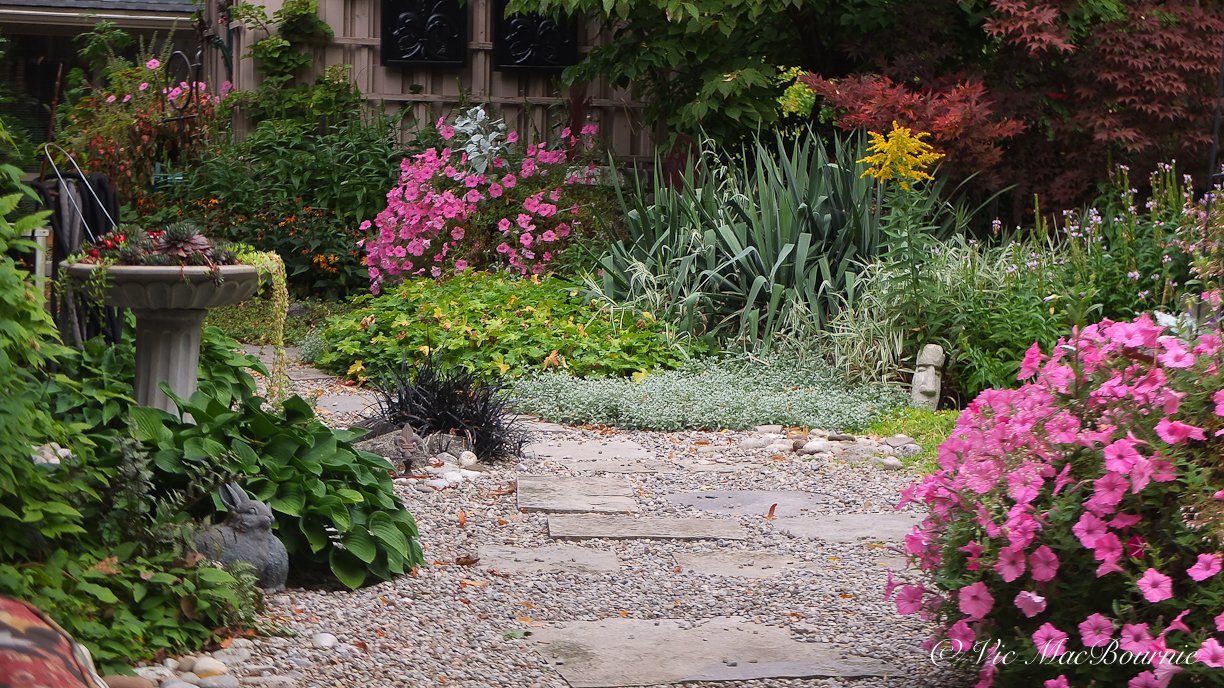
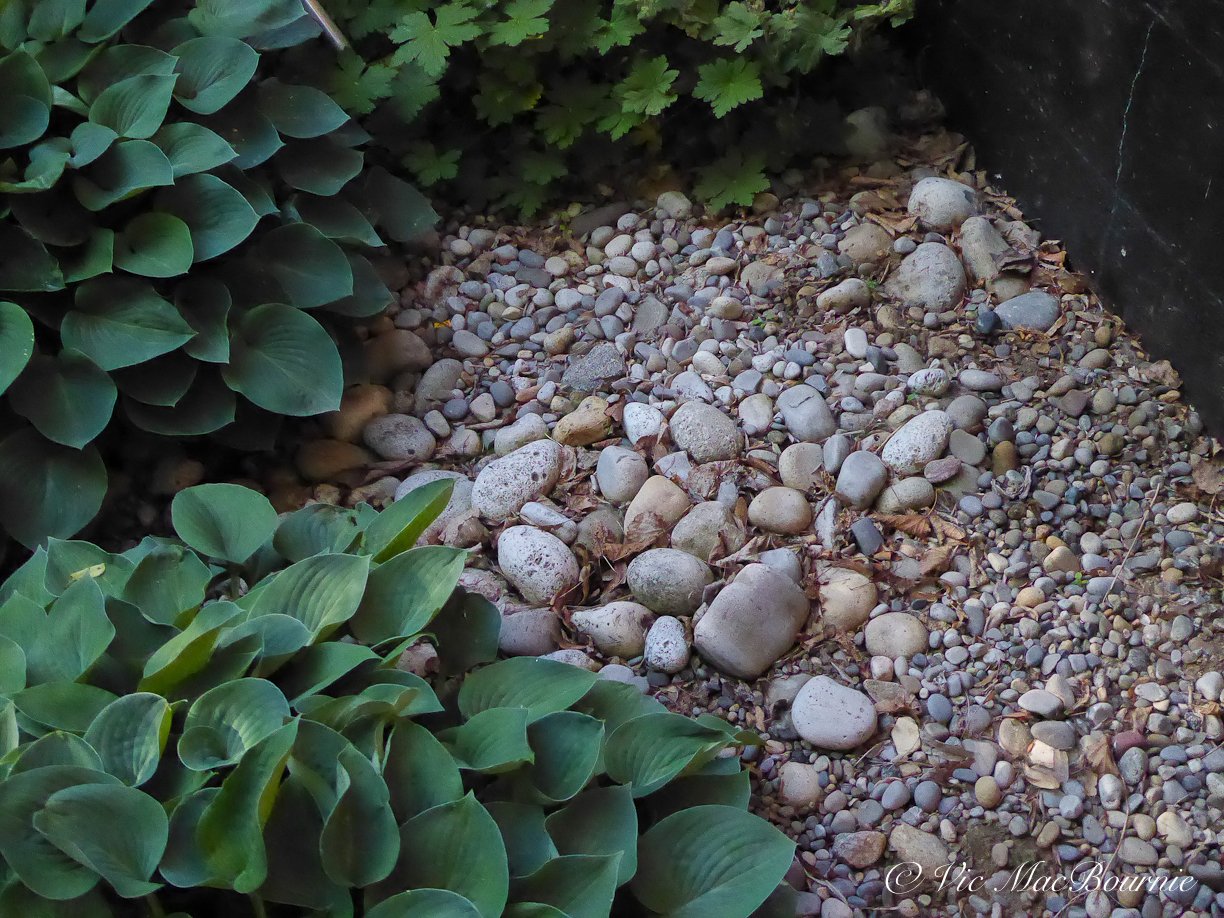

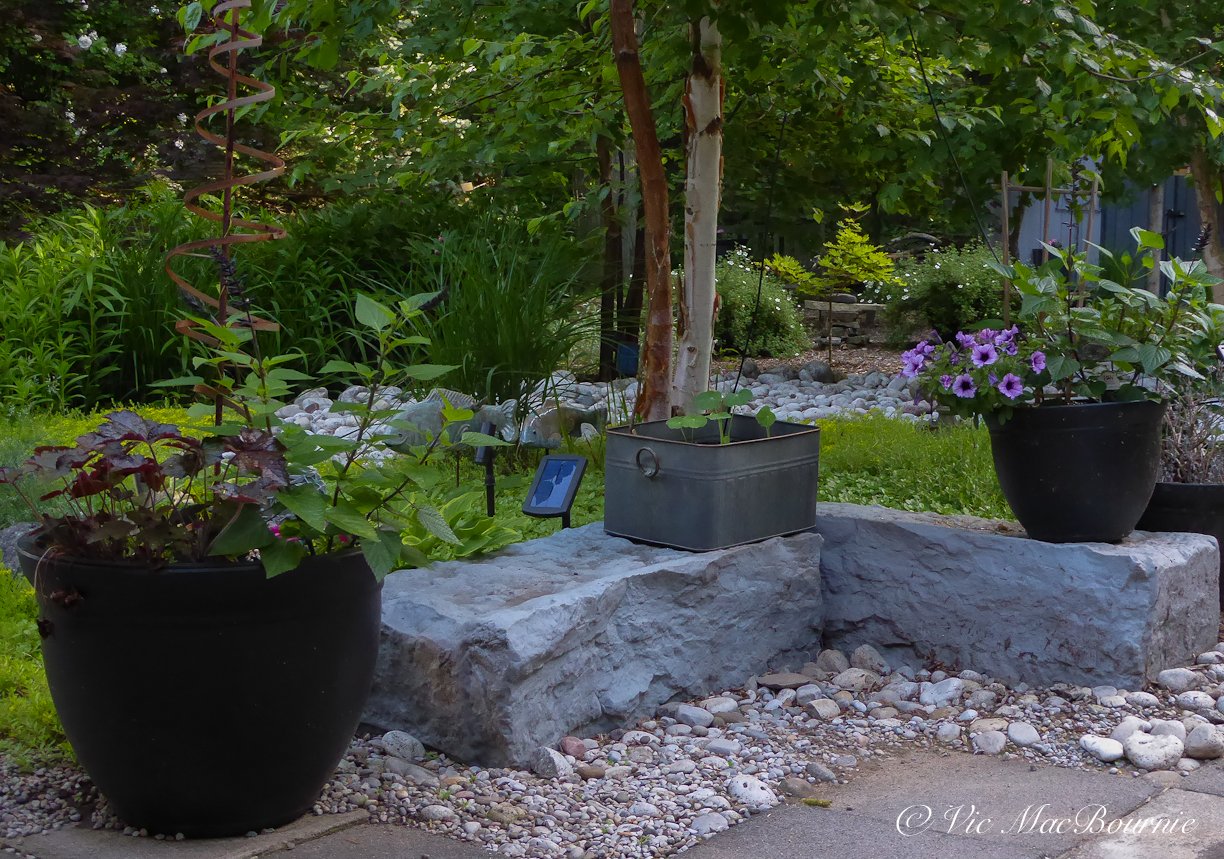

The simple answer: try to place the stones as they would appear in nature.
Not sure how they would appear in nature?
Learning from nature’s rock placement
Take an afternoon to visit a natural stream and study how Mother Nature places the rocks and stones with the larger ones anchoring the stream, smaller ones closer to the edge of the stream and pea gravel and or sand filling in the edges suggesting areas where the water has a gentler flow. Notice how, in nature, not all the river rock is the same size. There are boulders, large rocks and smaller rocks. Often there will be several sizes of river rock as well as pea gravel and sand.
(Looking for inspiration, check out my post on using local woodlands as inspiration for your garden.)
To create a realistic dry river bed, you don’t need to include all the sizes, but using only one size of river rock for the entire stream bed, is unlikely to look natural. When you are ordering from the rockery, include at least two sizes of river rock, some larger boulders and pea gravel.
The result will have a more natural look and allow you to transition down from the larger rocks to the smaller ones right down to the pea gravel on the edges of the stream filling in any holes between the larger rocks.
Placing larger boulders in the landscape
When it comes to placing large boulders, plan to do some digging.
In nature, boulders sit in the landscape, not on top of it. Even if a piece of a large boulder has broken off another boulder, it will in time be absorbed into the landscape through a combination of sinking into the soil through regular freezing and thawing, and soil building up around the boulder as leaves and forest detritus gets blown around the base of the boulder.
You may have thought you purchased a large boulder for your garden, but if I said you may have to bury a quarter to a half of the boulder underground for it to look right, it doesn’t take long to realize that boulder you purchased is not going to make as big a statement in the landscape as you might have thought. Most boulders need to be buried deep in the ground to look natural in the landscape. Boulders should look like they are rising out of the landscape.
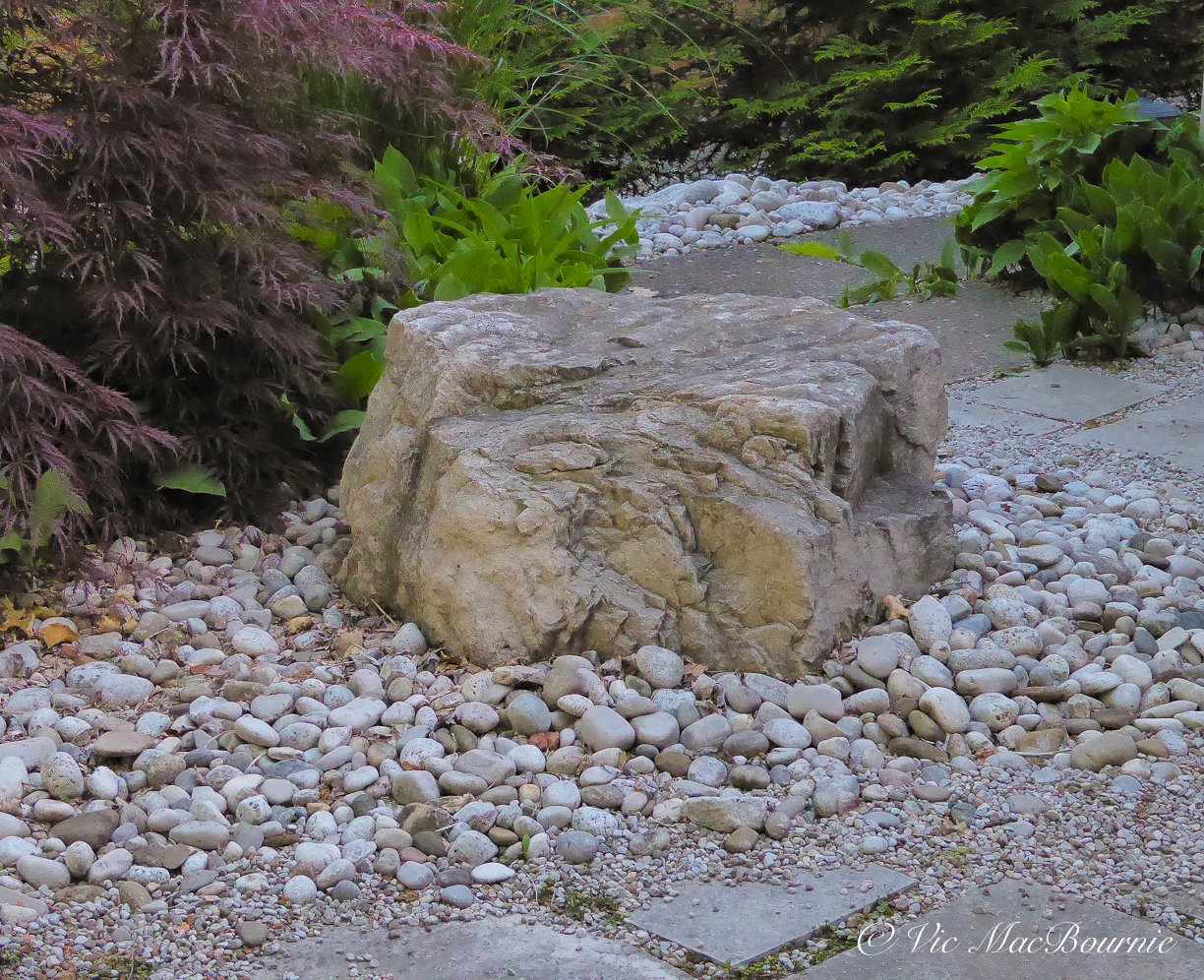

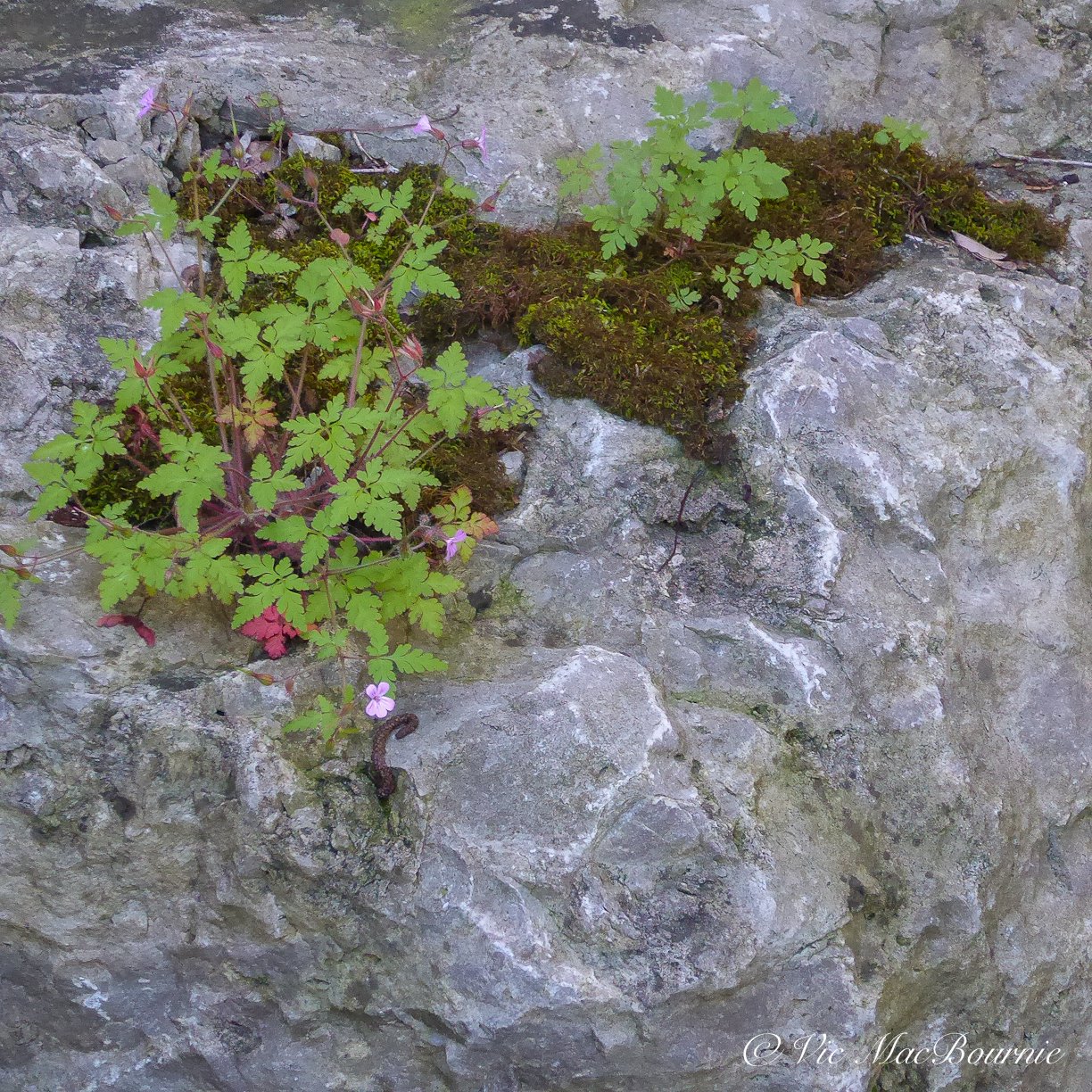

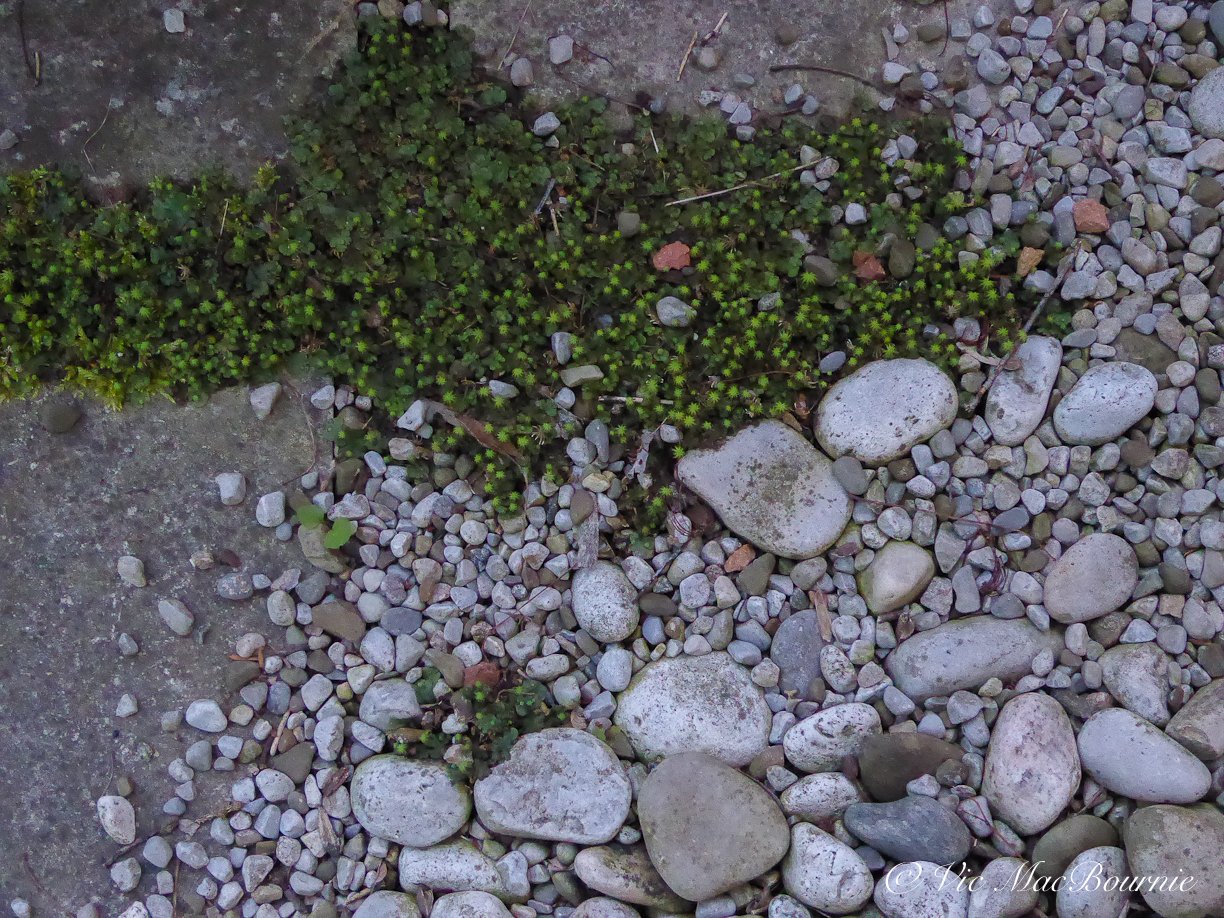
Depending on the boulder, you may get away with sinking it just a couple of inches into the ground. Just make sure that the boulder looks like it was always part of the landscape.
If you are placing boulders, it’s best to think odd numbers. Not unlike planting flowers in groups of 1-3-5, using the same way of thinking also works for placing rocks.
In our Japanese-inspired garden, I was lucky enough to scoop up a number of massive boulders from a neighbour's backyard project.
The trick was how to use them effectively. By using three of them in one grouping and a single one on the other side of the Japanese-inspired garden, I was able to keep the groupings to odd numbers. The boulder sitting by itself on the one side is teamed with large grasses and a weeping Japanese Maple providing visual balance between the two groups of boulders.
Staying with the Japanese-inspired garden and placement of the large boulders. In true Japanese style, a single boulder may be all that is in the garden surrounded by sand or fine pea gravel that is meticulously raked to give the appearance of waves surrounding the boulder.
In our design, I chose to use the boulders as if they represented mountains. Around the outside of the boulders I placed river rock in two sizes and then used pea gravel to fill in any holes and tie into the pea gravel throughout the garden and around the square-cut flagstone that take visitors through the garden into the backyard.
Using rocks along a pathway between houses
Our Japanese-inspired garden runs across the front of our home with a pathway leading through it to another pathway that leads into the backyard. By continuing the use of stone from the Japanese garden along the pathway leading to the back yard, the two spaces work together to create a natural flow.
Green Giant cedars separate our property from our neighbours creating privacy and a beautiful green backdrop that opens up at the end of the pathway into a view of our neighbour’s lovely yard and our woodland garden. (The three pictures above show how we installed the river rocks between the path and the Giant Green cedars using a combination of three sizes of river rocks and finishing with pea gravel. The pictures also show how much the cedars have grown in just four years.
On both sides of this pathway we have used stone as a mulch to tie in the back and front gardens. The same dry-river pathway is picked up across the back of the home helping to tie the entire garden from front to back.
Along the side pathway, several layers of black landscaping cloth were laid down to keep weeds at bay. This was followed up by using large river rocks (hand picked at the rockery) to form small rockfalls along the pathway just to add interest rather than having all the same size river rocks. Once the larger rocks were in place, we began adding wheelbarrows full of river rock followed by shovel fulls of pea gravel to fill in any holes between rocks and add more texture to the vignette. Closer to the trees’ roots, we laid down a thick layer of natural shredded cedar bark.
The result is a completely maintenance free landscape that looks natural and makes walking down the path a lovely experience.
Author Profile: Vic MacBournie is a former journalist and author/owner of Ferns & Feathers. He writes about his woodland wildlife garden that he has created over the past 25 years and shares his photography with readers.
Dogwoods: Find the perfect dogwood(s) for your woodland
Dogwoods are an integral part of any woodland garden. From the tiny ground cover known as Cornus canadensis or bunchberry, to the ever popular Flowering Dogwood tree.
Native dogwood trees and shrubs are perfect for yards big and small
When it comes to creating a woodland garden, I think it’s safe to say that no single genus is as important than the group of plants known as Cornus or, more commonly, the dogwoods.
In our backyard, dogwoods definitely dominate the woody plantings and, after pouring over the 2004 book Dogwoods, The Genus Cornus, (Amazon link) I am convinced that I need more … a lot more.
Authors Paul Cappiello and Don Shadow dive so deep into the genus dogwoods that any homeowner/gardener who takes the time to read this entertaining and incredibly informative book and doesn’t fall in love with dogwoods, is either ignoring the inherent qualities of this wide ranging species of primarily woody plants, or has yet to discover the importance, beauty and usefulness of under story trees and shrubs in the landscape.
Small trees like the Flowering Dogwood can take center stage in any garden, while the lower growing shrubby dogwoods such Cornus alba are happy to sit back and take a supporting role for most of the spring and summer. Together dogwoods form the backbone of the under story layer going from a ground cover (cornus canadensis) or bunchberry, to magnificent mature Flowering dogwoods (cornus florida) with stunning spring flowers, delicious summer berries for wildlife, finishing the season in a spectacular fall colour display.
More of my posts on Dogwoods
For more information on Dogwoods, please check out my other posts listed here:
Flowering Dogwood: Queen of the Woodland garden
Cornus Kousa: Impressive non-native for the woodland garden
Bunchberry: The ideal native ground cover
How can you not love dogwoods?
Most prominent in the northeastern United States into the Carolinas and stretching as far north as the Carolinian zones in southeastern Ontario, Canada, this group of both native and non-native plants offer such a variety to choose from that it’s not surprising most become overwhelmed.
To complicate things further, dogwoods also play a significant role in the landscapes of the Pacific northwest with their stunning Cornus nuttallii and its countless cultivars
I think it’s fair to say that there are few places in the U.S. or Canada where you can’t find a dogwood for your garden.
All of these dogwoods are explored in great detail in the 2005 book Dogwoods, The Genus Cornus by authors Paul Cappiello and Don Shadow published by none other than Timber Press.
If you are looking for a great deal on a used copy of Dogwoods, be sure to check out these incredible prices at Alibris, an umbrella group of independent book sellers, starting as low as $2-$7 for this lovely hardcover book. This link will take you the page on their website featuring the book Dogwoods.
Is it out of date? Obviously, yes. But, if you love dogwoods half as much as I do, I don’t think you will find a more comprehensive book on the subject. The more than 220 pages explore every dogwood imaginable and provides detailed information on each group.
Author Paul Cappiello describes himself first and foremost as a gardener and yet, his formal training is in both environmental planning and design, and horticulture. His expertise and passion for dogwoods comes out in the incredible detailed way he explores each sub-category of the Cornus species.
He writes: “Finally, my approach in this book has been from the standpoint of and for the benefit of the gardener. I make no attrmpt to rewrite the taxonomic treatment of the genus Cornus. I have no desire to rewrite the natural history of the genus. Any such indication in the following pages is simply due to my inability as a writer. I hope simply to provide some information, possibly a little inspiration and a bit of enjoyment.”
That he does.
In the introduction he explains how “almost immediately after the first ships returned to England from the New World, seedlings of the Cornus florida began showing up in British nursery catalogs.
He explains how dogwoods have “been with us since the time of the dinosaurs and have moved over most of the Northern Hemisphere and occasionally south of the equator as well. In the present day plant world, Cornus species are known from Venezuela (C peruviana) to subarctic North America (C. canadensis, C suecica), across Europe (C. sanguinea), and through much of Asia (C kousa, C macrophylla).”
The authors explore everything from Dogwood characteristics, growth habits as well as the fruit and bark that can be found in various species. In addition, no book on Dogwoods would be complete without an in depth exploration of insect and disease problems dogwoods face – especially canker, dogwood and spot Anthracnose, powdery mildew and dogwood borer.
The Pagoda dogwood (Cornus alternifolia) in early fall colour with some of its blue berries still hanging on.
The meat of the book, however, dives deep into the variety of dogwood species and their many cultivars. I am sure that, since the printing of this book, many new and improved cultivars have been introduced, but I doubt there have been any ground-breaking introductions not already tackled in this comprehenive book.
Beginning with the smallest of dogwoods, Cornus canadensis (also known as Bunchberry, Bear Berry, Bear Grape and Kinnikinick) the authors provide valuable information from growing zones to best growing conditions, propagation sub species and cultivars.
More than 130 Cornus florida cultivars.
Did you know that in the Cornus florida group of trees, there are more than 130 cultivars ranging from Cornus florida ‘Autumn Gold’ selected for it bright yellow and orange stems, to ‘Cherokee Chief’ with its deep red bracts through a multitude of varieties including variegated varieties such as ‘Daybreak’ with its white and green leaves, and ‘first lady’ with a green and gold variegated leaf.
Each of the more than 130 cultivars is described in the book spanning more than 37 pages with high quality images for many of the cultivars.
If you are looking for the perfect dogwood, this type of detail is indespensible.
I would be remiss, however, not to point out that the native species of plant or tree is always the best choice if you are hoping to attract and provide habitat and food for backyard wildlife.
Not to be outdone, The Cornus Kousa chapter details a total of 137 cultivars.
Even Cornus nuttallii (Pacific Dogwood) lists ten cultivars.
Section on Cornus florida group hybrids is eye opening
I was surprised to find out the incredible work being done on hybrids combining the best of Cornus florida with C. nuttallii and C. Kousa.
The cross between C. florida and C. kousa known as Cornus xrutgersensis is represented by a group of hybrids developed by Elwin Orton of Rutgers University m New Brunswick, New Jersey dating back to 1961.
According to the author: “After more than 20 years of work, Orton and Rutgers released a group of six patented cultivars under the trademarked names Aurora, Constellation, Celestial, Ruth Ellen, Stellar Pink and Stardust.” …
“These hybrids are low branched, mostly with strongly ascending tendencies and an upright overall shape. Flowering time begins with Ruth Ellen just as the last of the Cornus florida fade, with Constellation being about the latest to flower.”
These hybrids have proven resistant to powdery mildew and free from dogwood anthracnose. With proper watering they also show good resistance to borers.
Dogwood book covers a wealth of information
Of course Dogwoods goes well beyond covering the popular dogwood species like C. florida. Extensive chapters are dedicated to the less popular but equally important shrubby forms as well as an extensive chapter on our native Cornus alternifolia (Pagoda dogwood). Separate chapters on the Cornus Alba group and the Cornus Mass Group of shrubs and small trees rounds out this book.
Dogwoods: In conclusion
Whether you are a little obsessed about dogwoods like I am, or are just looking for a few to add spring interest, colour, berries and fall interest to your yard, the book Dogwoods: The Genus Cornus can be a great addition to your gardening library. While the author shares anecdotes and does his best to make the story as interesting as possible, the book should be seen primarily as resource material providing detailed descriptions of a family of plants. To put it in other words, this is best used as a source of information rather than great bed-side read.
But it’s indespensible if Dogwoods are your thing.
Just be careful. I can almost guarantee the book will be sending you to your nearest garden centres to explore and compare their selections of Cornus species that absolutely need a spot in your garden.
Author Profile: Vic MacBournie is a former journalist and author/owner of Ferns & Feathers. He writes about his woodland wildlife garden that he has created over the past 25 years and shares his photography with readers.



